Yachting Monthly
- Digital edition


Sailing in lightning: how to keep your yacht safe
- In partnership with Katy Stickland
- July 22, 2022
How much of a concern is a lightning strike to a yacht and what can we do about it? Nigel Calder looks at what makes a full ‘belt and braces’ lightning protection system

Storm clouds gather at Cowes, but what lightning protection system, if any, does your boat have for anchoring or sailing in lightning? Credit: Patrick Eden/Alamy Stock Photo
Most sailors worry about sailing in lightning to some extent, writes Nigel Calder .
After all, going around with a tall metal pole on a flat sea when storm clouds threaten doesn’t seem like the best idea to most of us.
In reality, thunder storms need plenty of energy, driven by the sun, and are much less frequent in northern Europe than in the tropics.
However, high currents passing through resistive conductors generate heat.
Small diameter conductors melt; wooden masts explode; and air gaps that are bridged by an arc start fires.

Sailing in lightning: Lightning is 10 times more likely over land than sea, as the land heats up more than water, providing the stronger convection currents needed to create a charge. Credit: BAE Inc/Alamy Stock Photo
On boats, radio antennas may be vaporised, and metal thru-hulls blown out of the hull, or the surrounding fiberglass melted, with areas of gelcoat blown off.
Wherever you sail, lightning needs to be taken seriously.
Understanding how lightning works, will help you evaluate the risks and make an informed decision about the level of protection you want on your boat and what precautions to take.
Most lightning is what’s called negative lightning, between the lower levels of clouds and the earth. Intermittent pre-discharges occur, ionising the air.
Whereas air is normally a poor electrical conductor, ionised air is an excellent conductor.
These pre-discharges (stepped leaders) are countered by a so-called attachment spark (streamer), which emanates from pointed objects (towers, masts, or lightning rods) that stand out from their surroundings due to their height.

Summer is the season for lightning storms in the UK. Here, one finds early at Instow, Devon. Credit: Terry Matthews/Alamy Stock Photo
This process continues until an attachment spark connects with a stepped leader, creating a lightning channel of ionised air molecules from the cloud to ground.
The main discharge, typically a series of discharges, now takes place through the lightning channel.
Negative lightning bolts are 1 to 2km (0.6 to 1.2 miles) long and have an average current of 20,000A.
Positive lightning bolts are much rarer and they can have currents of up to 300,000A.
Preventing damage when sailing in lightning
A lightning protection system (LPS) is designed to divert lightning energy to ground (in this case the sea), in such a way that no damage occurs to the boat or to people.
Ideally, this also includes protecting a boat’s electrical and electronic systems, but marine electronics are sensitive and this level of protection is hard to achieve.
Lightning protection systems have two key components: First, a mechanism to provide a path with as little resistance as possible that conducts a lightning strike to the water.
This is established with a substantial conductor from an air-terminal to the water.

Components of an external and internal lightning protection system. Credit: Maxine Heath
This part of the LPS is sometimes called external lightning protection.
Second, a mechanism to prevent the development of high voltages on, and voltage differences between, conductive objects on the boat.
This is achieved by connecting all major metal objects on and below deck to the water by an equipotential bonding system.
Without this bonding system high enough voltage differences can arise on a boat to develop dangerous side flashes.
The bonding system can be thought of as internal lightning protection.
Rolling ball concept
Lightning standards, which apply ashore and afloat, define five lightning protection ‘classes’, ranging from Class V (no protection) to Class I.
There are two core parameters: the maximum current the system must be able to withstand, which determines the sizing of various components in the system, and the arrangement and number of the air terminals, aka lightning rods.
Let’s look at the arrangement of the air terminals first. It is best explained by the rolling ball concept.
A lightning strike is initiated by the stepped leaders and attachment sparks connecting to form the lightning channel.
The distance between the stepped leader and the attachment sparks is known as the breakdown distance or striking distance.
If we imagine a ball with a radius equal to the striking distance, and we roll this ball around an object to be protected, the upper points of contact define the possible lightning impact points that need to be protected by air terminals.

Lightning protection theories and classifications rely on a ‘rolling ball’ concept to define requirements, areas of risk and protected areas. Credit: Maxine Heath
The air terminal will theoretically provide a zone of protection from the point at which the terminal connects with the circumference of the rolling ball down to the point at which that circumference touches the water.
The shorter the striking distance, the less the radius of the rolling ball and the smaller the area within the protection zone defined by the circumference of the rolling ball.
The smaller the protection zone, the more air terminals we need. So, we use the shortest striking distance to determine the minimum number and location of air terminals.
Class I protection assumes a rolling ball radius of 20m; Class II assumes a rolling ball radius of 30m.
Continues below…

Lightning: why we were struck
A personal investigation into how and why a catamaran was hit by lightning

‘Lightning destroyed the boat’s electronics’
Paul Tinley recounts a truly shocking lightning experience aboard his Beneteau 393 Blue Mistress and the subsequent insurance claim

Expert advice: boating emergency
A boating emergency is the sort of thing that everyone taking to the water should be prepared for even if,…

How batteries can explode – and how to avoid it
Marine electrical expert Nigel Calder explains why boat batteries emit hydrogen and how to minimise the dangers
Boat building standards are based on a striking distance/rolling ball radius of 30m (Class II).
For masts up to 30m above the waterline, the circumference of the ball from the point at which it contacts the top of the mast down to the water will define the zone of protection.
For masts higher than 30m above the waterline, the ball will contact the mast at 30m and this will define the limit of the zone of protection.
If Class I protection is wanted, the radius of the ball is reduced to 20m, which significantly reduces the zone of protection and, on many larger recreational boats, may theoretically necessitate more than one air terminal.
Protection classes
With most single-masted monohull yachts, an air terminal at the top of the mast is sufficient to protect the entire boat to Class I standards.
The circumference of the rolling ball from the tip of the mast down to the surface of the water does not intercept any part of the hull or rig.
However, someone standing on the fore or aft deck might have the upper part of their body contact the rolling ball, which tells us this is no place to be in a lightning storm.
Some boats have relatively high equipment or platforms over and behind the cockpit.

Protection classes to protect your boat while anchored or sailing in lightning
These fittings and structures may or may not be outside the circumference of the rolling ball.
Once again, this tells us to avoid contact with these structures during a lightning storm.
Ketch, yawl, and schooner rigged boats generally require air terminals on all masts, except when the mizzen is significantly shorter than the main mast.
The external LPS
The external LPS consists of the air terminal, a down conductor, and an earthing system – a lightning grounding terminal.
The down conductor is also known as a primary lightning protection conductor.
All components must be sized to carry the highest lightning peak current corresponding to the protection class chosen.
In particular, the material and cross-sectional area of the air terminal and down conductor must be such that the lightning current does not cause excessive heating.
The air terminal needs to extend a minimum of 150mm above the mast to which it is attached.

A graph depicting NASA’s record of yearly global lightning events. The Congo once recorded more than 450 strikes per km2
It can be a minimum 10mm diameter copper rod, or 13mm diameter aluminum solid rod.
It should have a rounded, rather than a pointed, top end.
VHF antennas are commonly destroyed in a lightning strike.
If an antenna is hit and is not protected by a lightning arrestor at its base, the lightning may enter the boat via the antenna’s coax cable.
A lightning arrestor is inserted in the line between the coax cable and the base of the antenna.
It has a substantial connection to the boat’s grounding system, which, on an aluminum mast, is created by its connection to the mast.
In normal circumstances, the lightning arrestor is nonconductive to ground.
When hit by very high voltages it shorts to ground, in theory causing a lightning strike to bypass the coax – although the effectiveness of such devices is a matter of some dispute.
Down conductors
A down conductor is the electrically conductive connection between an air terminal and the grounding terminal.
For many years, this conductor was required to have a resistance no more than that of a 16mm² copper conductor, but following further research, the down conductor is now required to have a resistance not greater than that of a 20mm² copper conductor.
For Class I protection, 25mm² is needed. This is to minimise heating effects.
Let’s say instead we use a copper conductor with a cross-sectional area of 16mm² and it is hit by a lightning strike with a peak current corresponding to Protection Class IV.

Sailing in lightning: This catamaran relies upon cabling to ground from the shrouds but stainless steel wire is not a good enough conductor. Credit: Wietze van der Laan
The conductor will experience a temperature increase of 56°C. A 16mm² conductor made of stainless steel (for example, rigging ) will reach well over 1,000°C and melt or evaporate.
Shrouds and stays on sailboats should be connected into a LPS only to prevent side flashes.
The cross-sectional area of the metal in aluminum masts on even small sailboats is such that it provides a low enough resistance path to be the down conductor.
Whether deck- or keel-mounted, the mast will require a low resistance path, equivalent to a 25mm² copper conductor, from the base of the mast to the grounding terminal.
Grounding terminal
Metal hulled boats can use the hull as the grounding terminal. All other boats need an adequate mass of underwater metal.
In salt water this needs a minimum area of 0.1m². In fresh water, European standards call for the grounding terminal to be up to 0.25m².
A grounding terminal must be submerged under all operating conditions.
An external lead or iron keel on monohull sailing boats can serve as a grounding terminal.

This owner of this Florida-based yacht decided to keep the keel out of the equation when is came to a grounding plate. High electrical currents don’t like sharp corners, so a grounding plate directly beneath the mast makes for an easier route to ground. Credit: Malcolm Morgan
In the absence of a keel , the cumulative surface area of various underwater components – propellers, metal thru-hulls, rudders – is often more than sufficient to meet the area requirements for a grounding terminal.
However, these can only be considered adequate if they are situated below the air terminal and down conductor and individually have the requisite surface area.
Metal through-hulls do not meet this requirement.
If underwater hardware, such as a keel, is adequate to be used as the grounding terminal, the interconnecting conductor is part of the primary down conductor system and needs to be sized accordingly at 25mm².
Propellers and radio ground plates
Regardless of its size, a propeller is not suitable as a grounding terminal for two reasons.
First, it is very difficult to make the necessary low-resistance electrical connection to the propeller shaft, and second, the primary conductor now runs horizontally through the boat.
The risk of side flashes within the boat, and through the hull to the water is increased.

Sailing in lightning: GRP hull, fairing filler and iron keel will have carried different voltages during the strike – hence this damage
An engine should never be included in the main (primary) conducting path to a grounding terminal.
On modern engines, sensitive electronic controls will be destroyed in a lightning strike, and on all engines, oil in bearings and between gears will create resistance and therefore considerable heat which is likely to result in internal damage.
However, as it is a large conductive object, the engine should be connected to the internal lightning protection system.
Internal lightning protection
On its way to ground, lightning causes considerable voltage differences in adjacent objects – up to hundreds of thousands of volts.
This applies to boats with a functioning external lightning protection system but without internal protection.
Although the lightning has been given a path to ground along which it will cause as little damage as possible, dangerous voltages can be generated elsewhere, resulting in arcing and side flashes, threatening the boat and crew, and destroying electronic equipment.
We prevent these damaging voltage differences from arising by connecting all substantial metal objects on the boat to a common grounding point.

One of the holy grails of marine photography – a direct lightning strike on a yacht’s mast. Credit: Apex
The grounding terminal is also wired to the common grounding point.
By tying all these circuits and objects together we hold them at a common voltage, preventing the build-up of voltage differences between them.
All conductive surfaces that might be touched at the same time, such as a backstay and a steering wheel, need to be held to the same voltage.
If the voltages are the same, there will be no arcing and no side flashes.
The bonding conductors in this internal LPS need to be stranded copper with a minimum size of 16mm².
Note that there can be bonding of the same object for corrosion prevention, lightning protection, and sometimes DC grounding.
We do not need three separate conductors.
Electronic Device Protection
With lightning protection systems, we need to distinguish electric circuit and people protection from device protection.
Even with an internal LPS, high induced voltages may occur on ungrounded conductors (such as DC positive) which will destroy any attached electronics.
A mechanism is needed to short high transient voltages to ground.
This is done with surge protection devices (SPD), also known as transient voltage surge suppressors (TVSS) or lightning arrestors.

Marine-specific SPDs are few in number and domestic models are not suitable for boats
In normal circumstances these devices are non-conductive, but if a specified voltage – the clamping voltage – is exceeded they divert the spike to ground.
There are levels of protection defined in various standards depending on the voltages and currents that can be handled, the speed with which this occurs, and other factors.
This is a highly technical subject for which it is advisable to seek professional support.
Most SPDs are designed for AC circuits.
When it comes to DC circuits there are far fewer choices available to boat owners although there are an increasing number for solar installations that may be appropriate.
There is no such thing as a lightning-proof boat, only a lightning-protected boat, and for this there needs to be a properly installed LPS.

Nigel Calder is a lifelong sailor and author of Boatowner’s Mechanical and Electrical Manual. He is involved in setting standards for leisure boats in the USA
Even so, in a major strike the forces involved are so colossal that no practical measures can be guaranteed to protect sensitive electronic equipment.
For this, protection can be provided with specialised surge protection devices (SPDs).
The chances of a direct lightning strike on a yacht are very small, and the further we are north or south of the equator, the smaller this chance becomes.
It’s likely your chances of receiving a direct lightning strike are very much higher on a golf course than at sea.
‘Bottle brush’-type lightning dissipators are claimed by sellers to make a boat invisible to lightning by bleeding off static electrical charge as it builds up.
The theory rests upon the concept that charged electrons from the surface of the earth can be made to congregate on a metal point, where the physical constraints caused by the geometry of the point will result in electrons being pushed off into the surrounding atmosphere via a ‘lightning dissipator’ that has not just one point, but many points.
It is worth noting that the concept has met with a storm of derision from many leading academics who have argued that the magnitude of the charge that can be dissipated by such a device is insignificant compared to that of both a cloud and individual lightning strikes.
It seems that the viable choices for lightning protection remain the LPS detailed above, your boatbuilder’s chosen system (if any), or taking one’s chances with nothing and the (reasonable) confidence that it’s possible to sail many times round the world with no protection and suffer no direct strikes.
Whichever way you go, it pays to stay off the golf course!
Enjoyed reading Sailing in lightning: how to keep your yacht safe?
A subscription to Yachting Monthly magazine costs around 40% less than the cover price .
Print and digital editions are available through Magazines Direct – where you can also find the latest deals .
YM is packed with information to help you get the most from your time on the water.
- Take your seamanship to the next level with tips, advice and skills from our experts
- Impartial in-depth reviews of the latest yachts and equipment
- Cruising guides to help you reach those dream destinations
Follow us on Facebook , Twitter and Instagram.
- Yachting World
- Digital Edition

Yacht lightning strikes: Why they cause so much damage and how to protect against them
- August 27, 2020
A lightning strike may sound vanishingly unlikely, but their incidence is increasing, and a hit can cause severe damage costing thousands of pounds, as well as putting an end to a sailing season, writes Suzy Carmody

Lightning strikes of boats are still fairly rare – but are on the increase. Photo: Image Reality / Alamy
Pantaenius handles more than 200 cases of lightning damage every year. “Over the past 15 years, the total number of such loss events has tripled in our statistics. The relative share of lightning damage in the total amount of losses recorded by us each year is already 10% or more in some cruising areas such as the Med, parts of the Pacific or the Caribbean,” added Pantaenius’s Jonas Ball.
Both UK and US-based insurers also report that multihulls are two to three times more likely to be struck by lightning than monohulls, due to the increased surface area and the lack of a keel causing difficulties with adequate grounding. Besides increased likelihood of being hit, the cost of a strike has also risen enormously as yachts carry more networked electronic devices and systems.

The CAPE index measures atmospheric instability and can be overlaid on windy.com forecasts
Avoiding lightning strikes
The only really preventative measure to avoid lightning is to stay away from lightning prone areas. Global maps of lightning flash rates based on data provided by NASA are useful to indicate areas of more intense lightning activity. They show that lightning is much more common in the tropics and highlight hotspots such as Florida, Cuba and Colombia in the Caribbean, tropical West Africa, and Malaysia and Singapore in south-east Asia.
Unfortunately, many of the most popular cruising grounds are located in tropical waters. Carefully monitoring the weather and being flexible to changing plans is an essential part of daily passage planning during the lightning season in high-risk areas. CAPE (Convective Available Potential Energy) is a useful tool for indicating atmospheric instability: you can check the CAPE index on windy.com (see above) as part of your lightning protection plan.
Protection against lightning strikes
Yachts that had no protection when lightning struck often experience extensive damage. The skipper of S/V Sassafras , a 1964 carvel schooner, reports: “Most of the electronics were toast. Any shielded wiring or items capable of capacitance took the most damage: isolation transformer; SSB tuner; autopilot and N2K network Cat 5 cables.”
Article continues below…

What is a Spanish Plume? Thunderstorms, lightning and downdrafts explained
Earlier this summer we saw considerable thunderstorm activity over the UK and Europe, resulting in flooding and some serious injuries.…

Expert sailing advice: How to handle a lightning strike on board
Lightning is the thing that scares me the most at sea. Having never experienced a lightning strike I think this…
The owner of Matador of Hamble , a Rival 41, recalls the effects of their strike: “The extent of the damage was not immediately obvious. For days afterwards anything with a semi-conductor went bang when we turned it on.”
The crew of Madeleine , a Catana 42S catamaran, had a similar experience. “We were struck in Tobago but only discovered the electrical damage to the port engine when we reached St Lucia and it was in the Azores that we found out the rudder post was broken and we had lost half our rudder.”
It therefore seems prudent that in lightning prone areas a protection system should be implemented where possible to protect the boat, equipment and crew. As a first step analysing the boat and the relative position of all the main metallic fittings can often reveal a few safe places to hide and places to avoid. Areas such as the base of the mast, below the steering pedestal and near the engine have the highest risk of injury.

Stays on a steel boat are attached directly to the steel hull. Photo: Wietze van der Laan / Janneke Kuysters
In terms of minimising the effect of a strike, one temporary method to limit the damage is to direct the current outside the boat using heavy electrical cables attached to the stainless steel rigging. With the other end of the cable immersed in the ocean, this provides a conductive path from the masthead to the ground.
The main flaw in this plan is that an aluminium mast has much greater electrical conductivity than stainless steel and is a more likely pathway to the ground. This system also requires adequate copper to be in contact with the seawater to discharge the current.
Other temporary measures include disconnecting radar and radio aerial cables, putting portable electronic items in the oven or microwave as a Faraday cage, turning off all the batteries or nonessential electronic equipment if at sea, or in a marina unplugging the shore power cord. All these procedures rely on someone being on board with several minutes warning before a strike to drop the cables over the side and turn off/disconnect and unplug.

Cable used as a down conductor from the shrouds on a catamaran. Photo: Wietze van der Laan / Janneke Kuysters
Posting an ‘Emergency Lightning Procedures’ card in a central location of the boat showing where to stand and what quick preparations to take is a simple first step.
Permanent lightning strike protection
In a thunderstorm, molecular movement causes a massive build up of potential energy. Once the voltage difference overcomes the resistance of the airspace in between, invisible ‘channels’ form between the base of the clouds and tall objects like masts, providing a path for a lightning strike to discharge some of the accumulated electrical energy. There will be less damage to a vessel if the discharge is contained in a well-designed lightning-protection system.
Lightning rods or air terminals installed at the top of the mast connected to an external grounding plate on the hull, via an aluminium mast, provide a permanent low impedance path for the current to enter the water. On boats with timber or carbon masts a heavy electrical cable can be used as a down conductor.
If not installed during production, a grounding plate can be retrofitted during a haul out. On monohulls a single plate near the base of the mast is adequate. A ketch, yawl or schooner requires a vertical path for each mast and a long strip under the hull between the masts, whereas catamarans usually require two grounding plates to complete the path to the water.
The current from a lightning strike is dissipated primarily from the edges of the plate, so the longer the outline the better. Warwick Tompkins installed a lightning protection system designed by Malcolm Morgan Marine in California on his Wylie 38 Flashgirl : “Two heavy copper cables run from the foot of the mast to the aluminium mast step, which was connected to a copper grounding plate on the outside of the hull via ½in diameter bronze bolts.”
The grounding plate was an eight pointed star shape. “Some liken it to a spider.” Warwick says, “And the very minimal electrical damage we experienced when struck was directly attributable to this spider setup.”

A copper ‘X’ grounding plate, used on boats that have a fin keel some distance aft of the mast. Photo: Malcolm Morgan Marine
Morgan adds: “Any cables associated with lightning protection should be routed away from other ship’s wiring wherever possible. For example, if the navstation electronics and main switchboards are on one side of the vessel, the lightning protection cables should be routed on the opposite side.”
An internal bonding circuit connects the major metal objects on a boat to the grounding plate via bonding cables. This can help prevent internal side strikes where the current jumps between objects in order to reach ground.
Morgan explains: “As modern boats are becoming increasingly complex careful consideration is required to ensure the bonding system is designed correctly. There are five possible grounding systems on a vessel (lightning protection, SSB radio ground plate, bonding for corrosion, AC safety ground, and DC negative) and all need to be joined at one common point and connected to the external grounding plate.”

This strike exited through the keel, blowing off the fairing and bottom paint. Photo: GEICO / BoatUS Marine Insurance
Surge protection
Yachts anchored close to shore or on shore power in a marina are susceptible to voltage surges during a thunderstorm. If lightning strikes a utility pole the current travels down the electricity cable looking for ground. It can enter a vessel through the shore power line or can pass through the water and flashover to a yacht at anchor.
Surge-protective devices (SPD) are self-sacrificial devices that ‘shunt’ the voltage to ground. They reduce the voltage spikes eg a 20,000V surge can be diminished to 6,000V but the additional current can still be enough to damage sensitive electronics. Therefore fitting ‘cascaded’ surge protection with several SPDs in line on critical equipment is a good idea.
High-tech solutions
Theoretically, if a lightning dissipator bleeds off an electrical charge on the rigging at the same rate as it builds up it can reduce or prevent a lightning strike. Lightning dissipators such as ‘bottle brushes’ are occasionally seen on cruising boats, though these are relatively old technology. Modern dissipators feature a 3⁄8in radius ball tip at the end of a tapered section of a copper or aluminium rod. The jury is out on their effectiveness.
A more high-tech solution is Sertec’s CMCE system, which claims to reduce the probability of a lightning strike by 99% within the protected area. The system has been widely installed on airports, stadiums, hospitals and similar, but has now been adapted for small marine use (and may reduce your insurance excess).
Arne Gründel of Sertec explains: “The CMCE system prevents a lightning strike by attracting and grounding excess negative charges from the atmosphere within the cover radius of the device. This prevents the formation of ‘streamers’, and without streamers there is no lightning strike.”

A Sertec CMCE marine unit, designed to dissipate lightning
- 1. Avoiding lightning strikes
- 2. ‘A lightning strike caused £95,000 of damage to my yacht’

- Center Consoles
- Dual Consoles
- Motoryachts
- Sport Cruisers
- Tenders & Ribs
- U.S. Atlantic
- Engine Buyers Guide
- Electronics
A Quick Comprehensive Guide to Lightning Protection for Boats
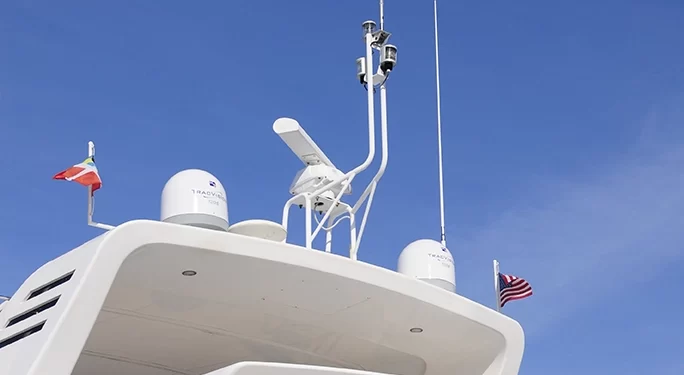
Understanding Lightning Mitigation for Boats
Techniques to lessen the impact of a lightning strike, adopting standardized lightning protection for boats, key components of a boat's lightning protection system: wiring, air, and ground terminals.
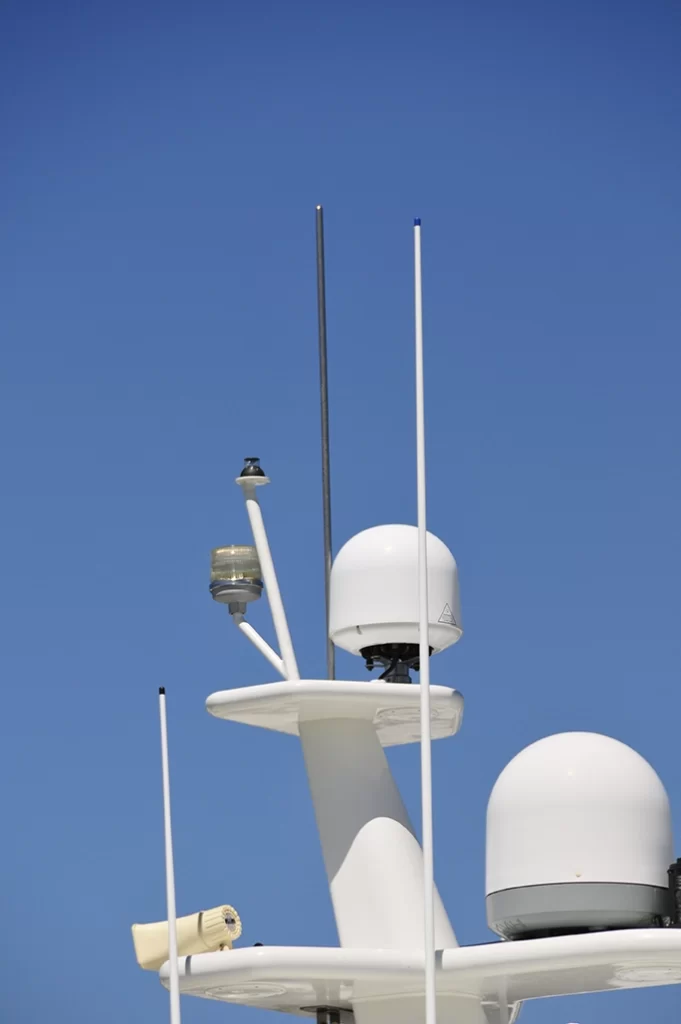
Also Read: Marine Electronics - Discover The Latest Award-Winning Products For 2023
-by steve d’antonio.

Recommended
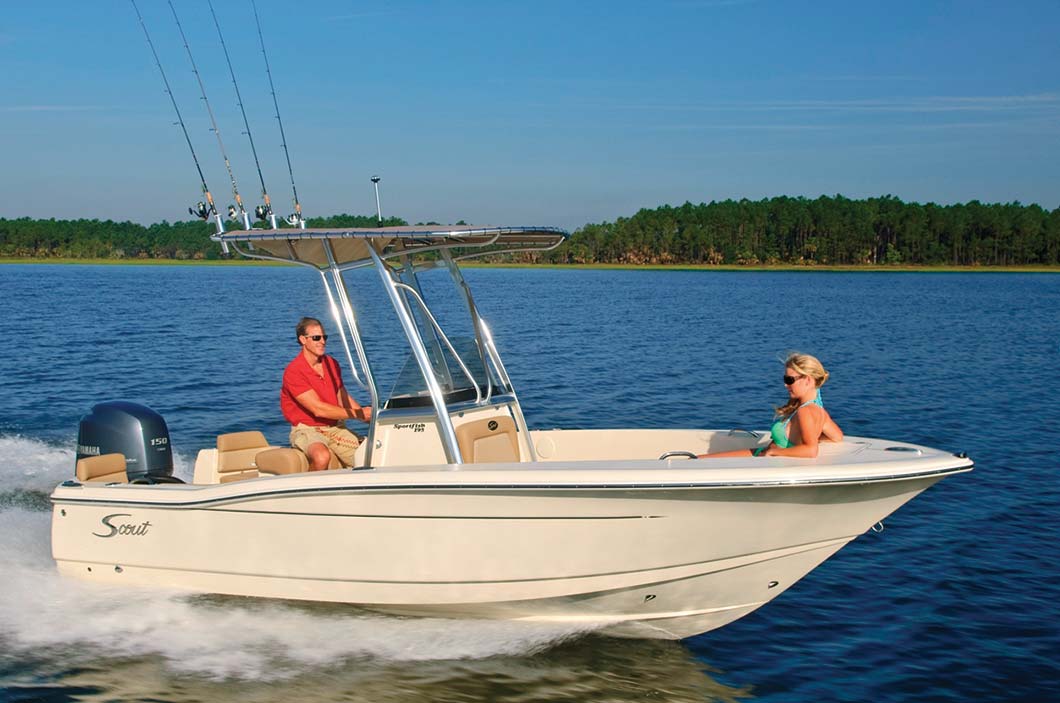
Scout 195 Sportfish

MIBS Preview – Wellcraft Boats’ Brings Three New Boats
Don't miss it.

Inboard Cooling System Maintenance: Practical Tips for Performance And Longevity

The Solara S-310 Sport Coupe: A New Era of Open-Air Boating

Ranieri International Appoints Madison Bay Holdings the Exclusive Representative Throughout The Americas

New Podcast Episode: Palm Beach International Boat Show Preview

The Race Between Semiconductors, Gold, and Cocoa Heats Up!

Discover The ULTRA Anchor: Stay Secure With Quality Stainless Steel
- Privacy Policy

1591 E. Atlantic Blvd, 2nd Floor Pompano Beach, FL 33060 Office: +1 (954) 522-5515 Fax: +1 (954) 522-2260 Contact us: [email protected]
Email address
© 2024 Southern Boating Media
- SAFETY TIPS
- SAFETY QUIZ
- Safety Tips
How to Survive Lightning Storms While Boating
- By Mike Telleria
- July 7, 2017
Powerful, dangerous, highly unpredictable — all are common descriptions of lightning storms. A direct strike that results only in ringing ears and a few roasted electronics would be considered lucky. Unlucky would be through-hulls blown out, a sunk boat or worse — possibly serious injury or death.
Many powerboaters like to think that they’ve got the speed to simply outrun or get out of the way of lightning storms, or they figure they’re safe if they go boating only when it’s clear and sunny. That’s an attitude aided by the low odds of a boat being struck by lightning, which BoatU.S. pegs at about one out of 1,000 boats in any given year. No worries, right, mate?
Wrong. Engines can malfunction; big lightning storms can leave no room to escape; sunny mornings can turn into dark, threatening afternoons. If yours is the only boat in the area during a lightning storm, the odds of being struck go way up, leaving you and your crew vulnerable to millions of volts raining down from the skies. While manufacturers can build in a degree of protection, lightning protection begins with boaters being informed and prepared to take action in the event of a thunderstorm or actual strike. You should know the following techniques and strategies.
Timing A strategy of boating only on sunny, cloudless days may work well in places like Idaho and California, but that would mean almost never using the boat in places such as Florida, Louisiana and much of the Midwest. For example, most of Florida — the Sunshine State — has at least 70 to 80 thunderstorm days per year, with some parts having more than 100 thunderstorm days per year (with increased activity during the summer months).
Absolutely, boaters should track VHF, Internet and television weather reports and make responsible decisions about whether to go boating depending on the likelihood of lightning storms. Short-term forecasts can actually be fairly good at predicting bigger storms, but small, localized storms might not be reported. This is when knowing how to read the weather yourself can come in handy. (The U.S. Power Squadrons offers great weather courses for boaters, and there are many books that cover the basics.)
Lightning strikes typically occur in the afternoon. (Florida estimates 70 percent occur between noon and 6 p.m.) A towering buildup of puffy, cotton-white clouds that rise to the customary flat “anvil” top is a good indication to clear the water and seek shelter — or move out of the storm’s path if possible. That’s if the storm is at least somewhat off in the distance (most storms are about 15 miles in diameter and can build to dangerous levels in fewer than 30 minutes). If lightning and thunder are present, just count the seconds between the lightning and corresponding thunder and then divide by 5 — this will provide a rough estimate of how many miles away the storm is.
A storm that builds directly overhead might be less obvious until those pretty white clouds that were providing some nice shade moments ago turn a threatening hue of gray as rain dumps on you and the wind starts to howl or, worse yet, boom with thunder and lightning that are right on top of each other. Now is the time for a mad dash to the dock and shelter if close by. Like the National Weather Service says: “When thunder roars, go indoors!” If out on open water or too far from shore and shelter, it’s time to hunker down and ride it out.
Caught! Boaters who have been struck by lightning often begin their stories with “I was caught in this storm … ” before they share their miraculous or harrowing tales of survival and destruction (BoatU.S. has a number of first-person storm stories archived online: boatus.com/seaworthy/swthunder). Even though getting caught in a storm is not always avoidable, there’s still plenty that boaters can do to minimize the chance of a strike and lessen injury and damage if there is a strike.
We all learn in grade school that lightning seeks the highest point, and on the water that’s the top of the boat — typically a mast, antenna, Bimini top, fishing rod in a vertical rod holder or even the tallest person in an open boat. If possible, find a protected area out of the wind and drop anchor. If the boat has an enclosed cabin, people should be directed to go inside and stay well away from metal objects, electrical outlets and appliances (it’s a good idea to don life jackets too). Side flashes can jump from metal objects to other objects — even bodies — as they seek a path to water.
Lowering antennas, towers, fishing rods and outriggers is also advised, unless they’re part of a designated lightning-protection system. Some boaters also like to disconnect the connections and power leads to their antennas and other electronics, which are often damaged or destroyed during a strike or near strike.
Under no circumstances should the VHF radio be used during an electrical storm unless it’s an emergency (handhelds are OK). Also, be careful not to grab two metal objects, like a metal steering wheel and metal railing — that can be a deadly spot to be if there’s a strike. Some boaters opt to steer with a wooden spoon and keep their other hand in a pocket if forced to man the helm during a storm, while others like to wear rubber gloves for insulation.
An open boat like a runabout is the most dangerous to human life during lightning storms, since you are the highest point and most likely to get hit if the boat is struck. If shore is out of reach, the advice is to drop anchor, remove all metal jewelry, put on life jackets and get low in the center of the boat. Definitely stay out of the water and stow the fishing rods.
If all goes well, the storm will blow past or rain itself out in 20 to 30 minutes. It’s best to wait at least 30 minutes until after the last clap of thunder to resume activities.
Hit! Knowing what to do in a storm and having the best lightning-protection system installed on the boat is by no means a guarantee that lightning won’t strike. The immediate checklist for a direct hit is very short:
1. Check for unconscious or injured persons first. If they’re moving and breathing, they’ll likely be OK. Immediately begin CPR on unconscious victims if a pulse and/or breathing is absent — there’s no danger of being shocked by someone just struck by lightning.
2. In the meantime, have someone check the bilges for water. It’s rare, but lightning can blow out a transducer or through-hull — or even just blow a hole in the boat. Plug the hole, get the bilge pumps running, work the bail bucket — whatever it takes to stay afloat. An emergency call on the VHF is warranted if the situation is dire. If the radio is toast, break out the flare kit.
If there are no injuries and no holes or major leaks below, just continue to wait it out. Once the danger has passed, check the operation of the engine and all electronics. Even a near strike can fry electronics and an engine’s electronic control unit, cutting off navigation, communication and even propulsion. Some boaters stash charged handheld VHF and GPS units and a spare engine ECU in the microwave or a tin box for this very reason. These makeshift Faraday cages have saved equipment.
Obvious damage will need to be assessed and set right. Even those lucky enough to come away completely unscathed after lighting storms, with no apparent damage should have a professional survey done just to be sure. Minor damage to through-hulls can result in slow leaks, and all manner of electrical wackiness can emerge — sometimes much later. It’s best to catch these issues right away and get that information to the insurance folks for coverage.
Write the Check! On many levels, robust insurance coverage plays a huge role in your lightning-protection plan. Knowing how to avoid lighting storms and read the weather are certainly important, being ready for action in the event of a storm or strike is crucial, and an upfront investment in lightning protection can lessen destruction. When it comes to dealing with the aftermath of a damaging strike, however, extensive lightning strike coverage can’t be beat.
Take it from a luxury trawler owner who sustained more than $1 million in damage from a strike: “Boat insurance turns out to be the best investment we have made in the past 10 years!” he said. “We will never again grumble about writing a check for an insurance premium.”
The U.S. Coast Guard is asking all boat owners and operators to help reduce fatalities, injuries, property damage, and associated healthcare costs related to recreational boating accidents by taking personal responsibility for their own safety and the safety of their passengers. Essential steps include: wearing a life jacket at all times and requiring passengers to do the same; never boating under the influence (BUI); successfully completing a boating safety course; and getting a Vessel Safety Check (VSC) annually from local U.S. Coast Guard Auxiliary, United States Power Squadrons(r), or your state boating agency’s Vessel Examiners. The U.S. Coast Guard reminds all boaters to “Boat Responsibly!” For more tips on boating safety, visit www.uscgboating.org .
- More: Boating Safety , Emergency Procedures , Safety Tips
- More Safety Tips
Safe Boating Tips for Rental Customers
What’s the difference between a life jacket and a pfd, the pocket-sized beacon that could save your life, a boating dad’s guide to navigation, pwc safety tips, emergency cut-off switch link requirements and options, inflatable life jackets: styles and how they work, penny wise, lifetime foolish.
- Privacy Policy
- Safety Quiz
- Cruising World
- Sailing World
- Salt Water Sportsman
- Sport Fishing
- Wakeboarding
- 2024 BOAT BUYERS GUIDE
- Email Newsletters
- Boat of the Year
- 2024 Freshwater Boat and Gear Buyers Guide
- 2024 Boat Buyers Guide
- 2024 Water Sports Boat Buyers Guide
- 2023 Pontoon Boat Buyers Guide
- Cruising Boats
- Pontoon Boats
- Fishing Boats
- Personal Watercraft
- Water Sports
- Boat Walkthroughs
- What To Look For
- Best Marine Electronics & Technology
- Watersports Favorites Spring 2022
- Boating Lab
- Boating Safety

How to Prepare for Lightning Strikes
- By Ken Englert
- Updated: January 24, 2012
Lightning will always take the most direct conductive path to earth by striking the highest object in the area. Unfortunately, on the water, the highest and most attractive object to a lightning bolt just might be your boat. Be advised that when lightning strikes your boat or even near your boat, your electronics are vulnerable to damage. Here’s how to be prepared.
Create a Short Circuit There is no absolute protection against lightning aboard a boat. But there are steps you can take to avoid or minimize damage. The most likely targets are antennas, fishing rods, towers, T-tops or any elevated electrically conductive surface. You can’t prevent a lightning strike, but you can create a safe path for lightning to travel.
To conduct a strike safely to “ground” (on a boat this means to the water), create a low-resistance path from the highest point on your boat to a metal grounding plate in contact with the water. Start with a solid half-inch-diameter steel or bronze rod elevated six to 12 inches above every other object on the boat. The tip of that rod should be pointed, not blunt. Run a conductor made of at least a No. 8 gauge wire from the rod in as straight a path as possible to the water-grounding point.
The recommended water ground is a metal ground plate mounted outside of the hull. It can be copper, monel, naval bronze or other noncorrosive metal and should be solid, not the porous type used for radio antenna grounds, and be at least one square foot in area. Check with the manufacturer to see if this already exists. Also know that factory-installed lightning rods and grounding conductors are sometimes unwisely removed or disconnected by boat dealers or unknowing buyers.
Ground, Ground, Ground Ground all electronics and large metal objects on board, including metal cases or grounding studs on electronics and electrical equipment. Not to be overlooked are the engine(s), stove, sink, tanks, refrigerator, air-conditioner, metal railings, tower, arch and Bimini top. When running grounding conductors, don’t attempt to neatly bundle grounding cables together with the rest of the electrical wiring. Keep them separate from all other conductors, including antenna wires. Also, do not run the ground conductors in close proximity to or parallel to existing wire runs to prevent arcing.
More Detailed Lightning Protection Tips and Strategies
Storm Safety Tips – Lower all antennas and downriggers.
– Disconnect all power, antenna and interconnection cables to the electronics and electrical gear.
– Do not touch two metal surfaces at the same time (engine controls, a railing, helm, etc.) or you may become a convenient conducting path yourself.
– Do get out of the area and head for shore, and send the crew belowdecks.
Check out more tips on how to protect yourself and your boat during a lightning storm: 3 Crucial Tips to Avoid Lightning Strikes
- More: Electronics , Gear
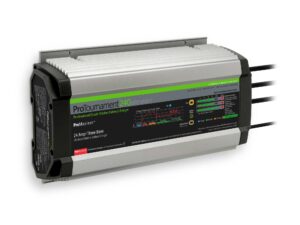
ProTournament Elite Gen 3 Chargers
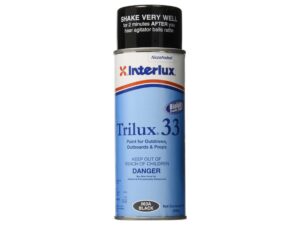
We Test Interlux Trilux 33 Aerosol Antifouling Paint

Boating Shoes for Spring and Summer
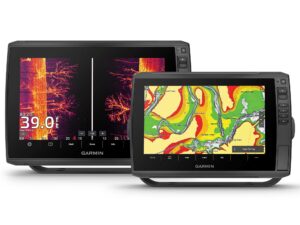
Garmin EchoMap Ultra 2 Series
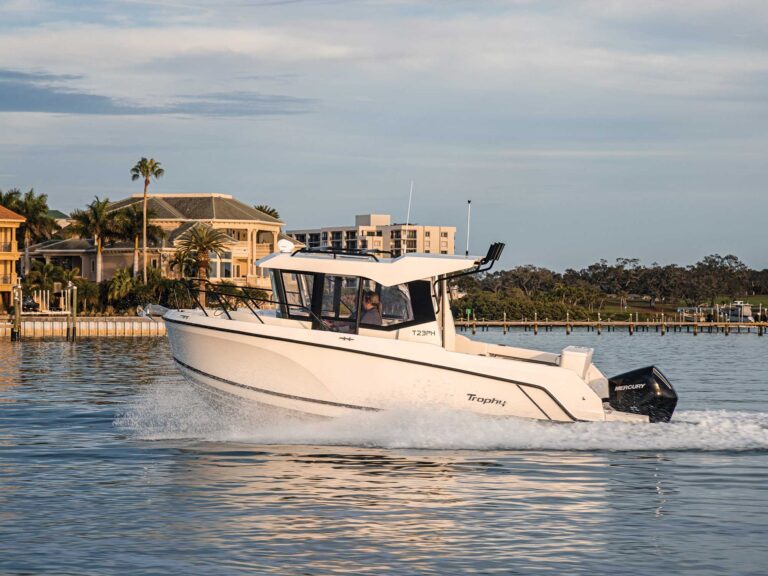
Boat Test: 2024 Bayliner Trophy T23 Pilothouse
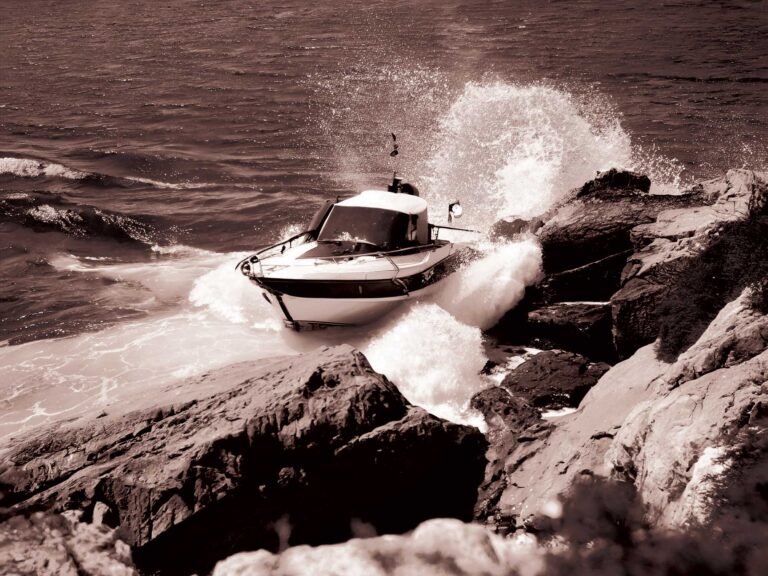
What to Do if Your Boat’s Engine Dies
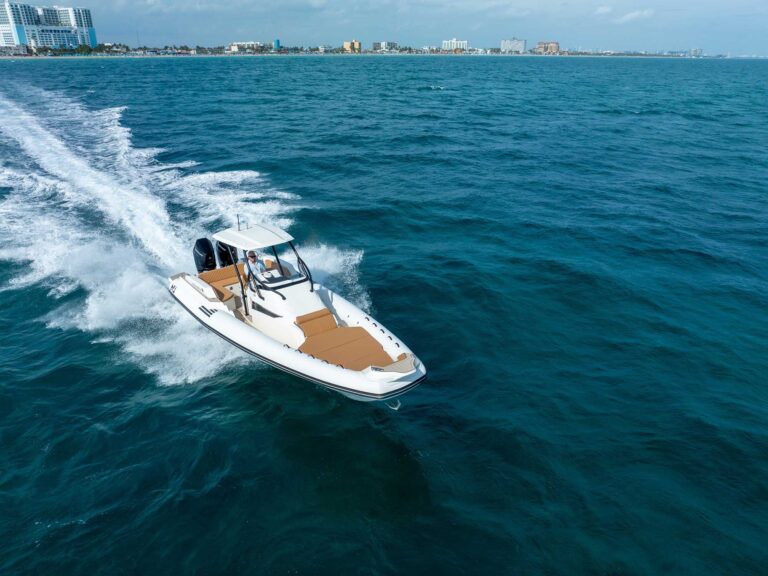
Boat Test: 2024 Nuova Jolly Prince 33 CC
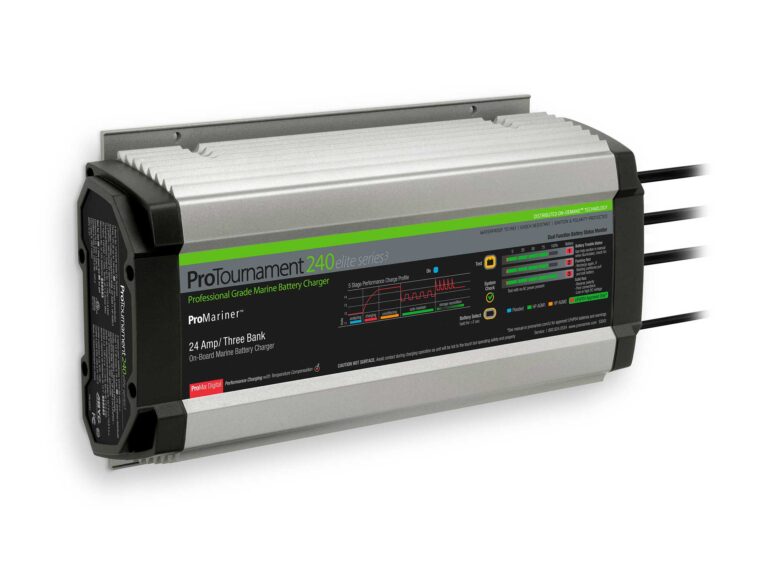
- Digital Edition
- Customer Service
- Privacy Policy
- Cruising World
- Sailing World
- Salt Water Sportsman
- Sport Fishing
- Wakeboarding
Many products featured on this site were editorially chosen. Boating may receive financial compensation for products purchased through this site.
Copyright © 2024 Boating Firecrown . All rights reserved. Reproduction in whole or in part without permission is prohibited.

Service Locator
- Angler Endorsement
- Boat Towing Coverage
- Mechanical Breakdown
- Insurance Requirements in Mexico
- Agreed Hull Value
- Actual Cash Value
- Liability Only
- Insurance Payment Options
- Claims Information
- Towing Service Agreement
- Membership Plans
- Boat Show Tickets
- BoatUS Boats For Sale
- Membership Payment Options
- Consumer Affairs
- Boat Documentation Requirements
- Installation Instructions
- Shipping & Handling Information
- Contact Boat Lettering
- End User Agreement
- Frequently Asked Questions
- Vessel Documentation
- BoatUS Foundation
- Government Affairs
- Powercruisers
- Buying & Selling Advice
- Maintenance
- Tow Vehicles
- Make & Create
- Makeovers & Refitting
- Accessories
- Electronics
- Skills, Tips, Tools
- Spring Preparation
- Winterization
- Boaters’ Rights
- Environment & Clean Water
- Boat Safety
- Navigational Hazards
- Personal Safety
- Batteries & Onboard Power
- Motors, Engines, Propulsion
- Best Day on the Water
- Books & Movies
- Communication & Etiquette
- Contests & Sweepstakes
- Colleges & Tech Schools
- Food, Drink, Entertainment
- New To Boating
- Travel & Destinations
- Watersports
- Anchors & Anchoring
- Boat Handling
Modern Lightning Protection On Recreational Watercraft
Advertisement
While you can't prevent a strike, there's a lot you can do to mitigate — or even prevent — damage.
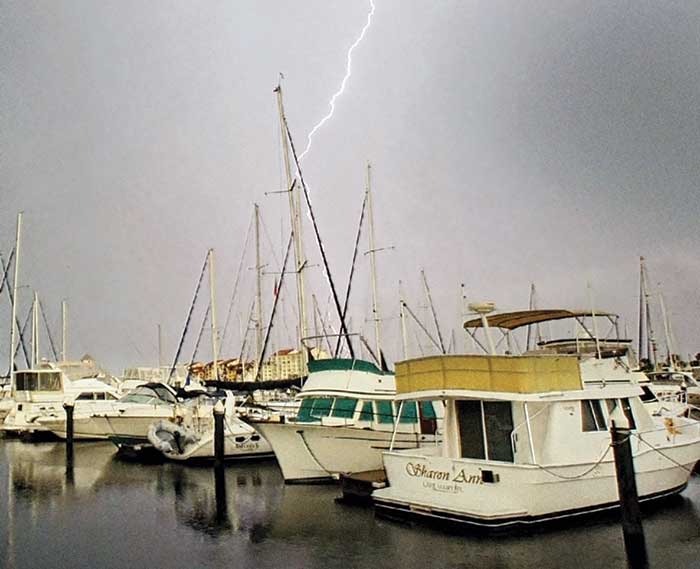
A thunderstorm passing over a marina has the potential to cause expensive damage.
The recent advances in electrical and electronic systems have revolutionized recreational boating. Vessel operations have been simplified and the boating experience enhanced due to the integration of electronics into almost every onboard system, from navigation and communications to propulsion and maneuvering. Complex engine electronics known by various names including Engine Control Unit (ECU) and Engine Control Module (ECM) have increased performance and reduced emissions on modern engines. However, these advances have come at a cost. Many 21st-century boaters depend on electronic systems to navigate and maneuver their boats, and many modern engines will not function if their electronics are compromised. That makes modern mariners and their boats vulnerable to a lightning strike that damages these now mission-critical systems, potentially leaving the boat dead in the water without navigation or communications equipment.
Unfortunately, sensitive electronics on boats have become increasingly vulnerable to lightning strikes, yet lightning-protection systems have not kept pace. It's not that there haven't been significant advances in lightning science since Benjamin Franklin developed his theories on how to protect barns and livestock. The National Fire Protection Association, Underwriters Laboratories, and industries which are significantly at risk from lightning, such as telecommunications, wind generation, aviation, and fuel, have achieved consensus on the science of lightning protection and have embraced new protocols and practices. But the recreational boating industry has been slow to adapt those changes to the marine environment. There are at least three reasons for that.
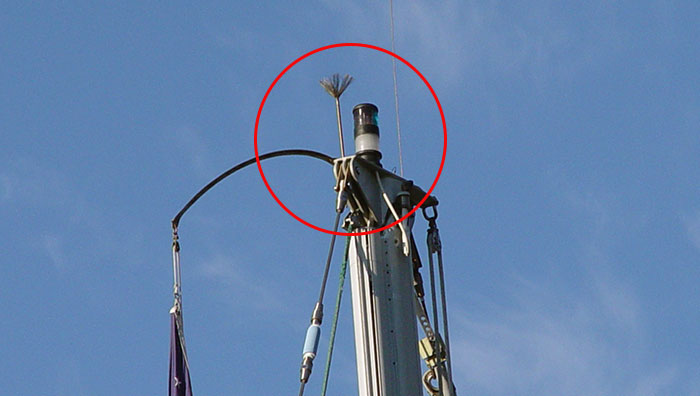
There is no evidence from independent laboratories that these fuzzy lightning dissipators prevent strikes.
First, corrosion and motion on board boats, as well as limitations with respect to weight, space, and geometry, make lightning protection more challenging than in shoreside installations. Second, the mandate of the standards body for the industry, the American Boat & Yacht Council (ABYC), focuses on protecting life; protecting equipment has been a lower priority. Third, there has been strong disagreement between professionals about the best way to mitigate damage in a lightning strike and precious little data to support one point of view over another. The sometimes-raucous debate surrounding certain unproven lightning- protection devices and such theories as "fuzzy" lightning dissipation terminals and early-streamer emission terminals, as well as unorthodox placement of grounding terminals (a.k.a. grounding plates), have sharply divided the recreational boating technical community, all of which makes consensus on lightning protection difficult, if not impossible.
This lack of guidance is frustrating for those with boats at risk. While a runabout in Portland, Oregon, or a daysailer in Portland, Maine, may have little risk of lightning damage (see " Striking Lightning Facts "), larger vessels (particularly sailboats) in such lightning-prone areas as the Chesapeake Bay or Florida absolutely should be protected using the best technology available. Any marine-insurance adjuster can attest that the potential for loss on these vessels can be great. The National Fire Protection Association made some fundamental changes to the watercraft chapter of NFPA 780: Standard for the Installation of Lightning Protection Systems in 2008 that incorporate the thinking that has become accepted in other industries. While the recommendations in NFPA 780 have yet to be embraced by the recreational boating industry as a whole, understanding what it says — and why — may assist you in developing a lightning-protection plan for your boat.
Lightning 101
The simplest way to think of a lightning strike would be as a short circuit between the cloud and the earth. The earth and an active thundercloud have either a positive or a negative polarity with respect to each other, just like battery connections that can arc if they are not separated by a long enough air gap. Whether the positive charge is in the cloud or on the water may have great importance to a physicist, but matters little to the cow in the barn or the VHF radio antenna on the mast.
The important point is that the earth (or in our case, the water) contains an unlimited supply of positive and negative charges; it is the thundercloud that induces the charge concentration in the water. For example, if a large concentration of negative charge coalesces in a storm cloud over the ocean, a large concentration of positive charge is drawn to the very top surface of the water directly beneath it. (Opposites attract.) Since air is a good insulator, no electricity will flow between the cloud and the water unless the airborne charge loses altitude, moves close enough to the surface of the water, and the lightning jumps the gap. If an electrically conductive material, such as an aluminum tuna tower or mast, stainless steel rigging, or a long vertical copper wire, comes between the cloud and the water, then the gap that must be jumped becomes shorter. The boat short circuits the voltage, much like a wrench across battery terminals.
Because boats are built from electrically conductive components installed between the water and the areas aloft (masts, rigging, antennas, towers, support structures, electrical wiring), a lightning strike is inevitable if an active thundercloud containing electrical charges passes overhead at a low enough altitude. How much damage the lightning strike does to the boat depends upon how easily the electrical energy from the strike can find its way through the boat to ground. There will be a lot less damage if the discharge is contained in a well-designed lightning-protection system than if it takes a detour through the ship's wiring and sensitive electronics on its way out of the boat.
This is a basic concept that surprises many boaters: A lightning-protection system is not designed to prevent a lightning strike, but rather to provide a safe discharge path for the lightning. This is the only viable solution for lightning protection (short of going back to wooden ships, kerosene lamps, and sextants). The technology to prevent lightning strikes does not yet exist.
Still, there are devices out there claiming to do just that. Lightning dissipaters (LDs) look like metal bottle brushes or frayed paint brushes and are installed on the top of the mast. The hypothesis is that the numerous conductive points on the LDs safely dissipate accumulated charges so the lightning strike will not occur. As far as I am aware, not a single independent testing laboratory has confirmed the effectiveness of lightning dissipaters as lightning preventers.
Early-streamer emission (ESE) terminals have also gained traction in some circles. Fancy lightning rods often shaped like a torpedo that usually come with electronic circuitry, these are supposed to attract lightning better than a standard lightning rod (also called an air terminal), to ensure that the lightning strikes the grounding path rather than what is being protected. Once again, I am not aware of any independent studies validating the effectiveness of these devices.
Lightning-protection systems actually function by acting as the "best" short circuit between the cloud and the water, one designed to lead the lightning harmlessly to ground. The system accomplishes this in two ways: by attracting lightning away from more destructive pathways between cloud and ground, and by sending the charge around, instead of through, what it is protecting.
The first concept has traditionally been known as the "cone of protection" or the area protected by an air terminal from a strike. Traditionally, the cone of protection has been thought to include a circle centered on the base of the air terminal whose radius equals the height of the terminal and to extend from the top of the air terminal to the ground at a 45 degree angle. In fact, the length of the final jump that lightning takes before striking the air terminal is about 30 meters. Recent research suggests that the actual area protected can be defined by an imaginary sphere with this radius that is "rolled" up to the air terminal. All objects inside the imaginary sphere will not be protected by the air terminal, which means the area protected often differs in size and shape from the cone of protection model. Modern lightning protection for airports and power plants use the rolling sphere method and place air terminals so that the areas of protection overlap and include any sensitive equipment that would be damaged by a strike.
The second concept will be familiar to many as the Faraday cage. As early as 1836, Michael Faraday discovered that objects surrounded by metal were protected from lightning (explaining why we are safe from lightning while in our cars). Many old-school sailors have used Faraday's discovery to good purpose when they placed sensitive electronics in the oven during a lightning storm (with the oven off, of course.) This practice can be significantly updated by placing sensitive electronics in the microwave oven!
21st Century Lightning Protection
Benjamin Franklin pioneered lightning protection in 1749 with the invention of the lightning rod, and, when it comes to recreational boats, until recently, little has changed. Under his model, the lightning is attracted to the lightning rod (air terminal), which then passes the lightning current harmlessly to a submerged metaevent secondary flashes from these metal structures.
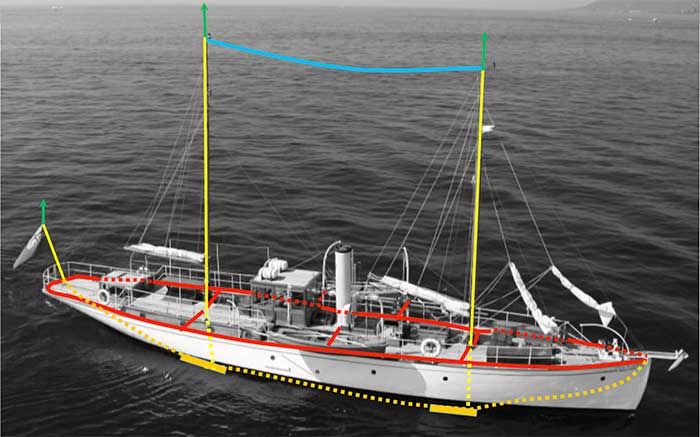
Air Terminals are shown in green; grounding plates with down, side flash, and equalization conductors in yellow; loop conductors in red; and catenary conductors in blue.
NFPA 780 draws much from the old-school system while incorporating improvements based on the modern understanding of lighting protection. While solutions will vary depending on the boat, let's talk about the basics.
Air terminals (lightning rod or Franklin rod) should be installed at the highest points of masts, towers, etc. On a sailboat a single air terminal could be bolted to the mast; on a sportfish it could be bolted to the tower and made to look like an antenna. This should be higher than anything you are trying to protect from a lightning strike, such as a VHF antenna.
A heavy electrical conductor should be connected from each air terminal directly down to a grounding point on the hull. In the case of a sailboat's mast, aluminum is a good conductor, so no separate wiring run needs to be installed. (Note that the wiring inside of the mast will be protected due to the Faraday effect.) An aluminum tower will work the same way on a sportfish so long as the legs are connected to an adequate grounding plate. Where no aluminum structure exists to act as a down conductor, a 4 AWG wire or larger should be run from the air terminal to the grounding plate in as straight a run as possible and well separated from other wiring.
The grounding point should be a corrosion-resistant metal plate installed on the exterior of the hull below the waterline. The plate should be at least one square foot in size and at least 3/16 of an inch thick. Research shows that most of the electrical discharge occurs along the edges, so a long, narrow plate, especially one with grooves cut in it, will be most effective at dispersing the charge. A new major point of contention is where to install the grounding plate, or plates. Some research indicates that a location at or near the waterline is by far the most effective solution. On a sailboat, the lead keel can be used as the grounding plate if the keel is not fiberglass-encapsulated or covered in fairing. If the mast is solidly keel stepped, there would be no need for a separate conductor from the mast to the keel. Metal rudders or propeller struts are also acceptable as grounding plates.
Protecting Electronics
Surge-protective devices (SPD) or transient voltage surge suppressors (TVSS) should be installed on all equipment that's mission critical, expensive, difficult to replace, and/or prone to lightning damage. Examples include the ECU/ECM, alarm systems, chartplotters, and instruments.
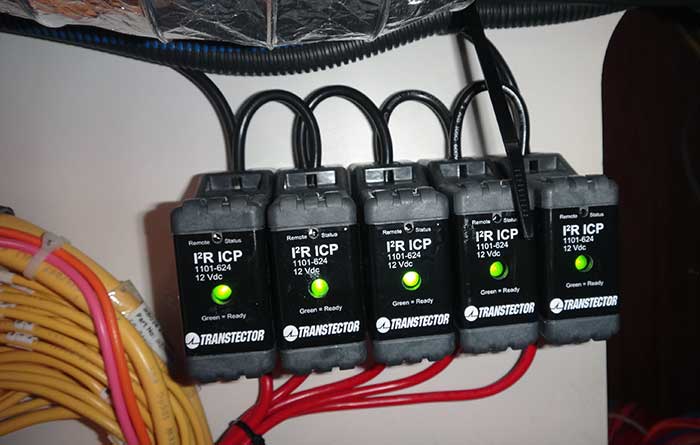
A bank of TVSSs protecting sensitive electronics.
TVSSs are the most exciting development in the field of lightning protection. These semiconductor devices provide protection by suppressing lightning-related voltage spikes. They are widely used in the telecommunications, wind generation, and avionics industries.
TVSSs are connected across the input terminals supplying voltage to a piece of equipment; they can be thought of as fuses that react to voltage instead of current. The TVSS is an open circuit as long as the supply voltage feeding the equipment is in the normal range. However, if a lightning strike causes a momentary voltage spike and puts, say 1,000 volts on a 120-volt device, the TVSS will "clamp" or short circuit 880 volts and convert it to heat. The excessive heat could, and probably would, damage the TVSS; but destroying a $250 surge arrestor to protect a $5,000 engine controller is good engineering.
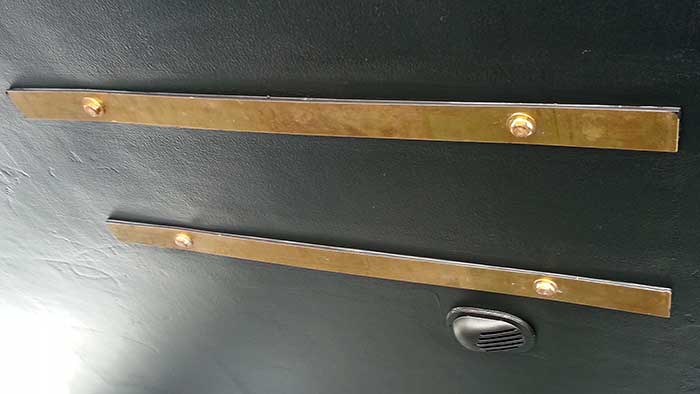
Grounding plates should be long and narrow with groves cut into them to disperse the charge more efficiently.
Voltage surge protection would be prudent for engine controls, navigation systems, steering systems, and shorepower systems. TVSSs come in many voltage ratings, energy ratings, response times, and so on. Some are designed to protect whole distribution systems, while others are suitable for individual equipment protection only. A well-designed system includes cascaded protection, with extra protection on mission-critical and lightning-prone equipment, such as main engines and shorepower systems. The key to a reliable and cost-effective system is to ensure that appropriately rated devices are specified and properly installed. The best TVSS in the world will be ineffective if it is not connected properly.
Despite the best technology, there can still be challenges with an NFPA 780-based system, particularly when the system is improperly or only partially installed. For example, if the air terminal is installed lower than an adjacent antenna, it will not protect the antenna; in that case, the antenna cable carries the lightning current. Also, if the down conductor is connected to the bonding system rather than directly to a dedicated grounding terminal (ground plate), the lightning strike can energize the entire bonding system before discharging into the water. Another common mistake is to secure the lightning down conductor to other wiring. The high current from a strike through the down conductor can result in voltage surges in these adjacent wires, leading to additional damage in equipment that would otherwise be completely unaffected by the lightning strike.
In Conclusion
The recent revolution in marine electronics demands an evolution of our thinking on marine lightning-protection; equipment protection should be an important aspect of any modern lightning protection system. The knowledge and resources to safely transform this change in thinking into reality are readily available, both from the NFPA and industries also at risk from lightning. However, there are unique challenges on pleasure craft that are not addressed by others. These must be solved by sharing the experiences of lightning-protection systems and their effectiveness across the industry.
Related Articles
The truth about ceramic coatings for boats.
Our editor investigates the marketing claims of consumer-grade ceramic coatings.
Fine-Tune Your Side Scan Fishfinder
Take your side-scanning fishfinder off auto mode, and you’ll be spotting your prey from afar in no time
DIY Boat Foam Decking
Closed-cell foam flooring helps make boating more comfortable. Here’s how to install it on your vessel
Click to explore related articles
James Coté
Contributor, BoatUS Magazine
James Coté is an electrical engineer, ABYC Master Technician, Fire Investigator and Marine Investigator. He operates a marine electric and corrosion control consulting firm located in Florida. For more information, go to: cotemarine.net
BoatUS Magazine Is A Benefit Of BoatUS Membership
Membership Benefits Include:
Subscription to the print version of BoatUS Magazine
4% back on purchases from West Marine stores or online at WestMarine.com
Discounts on fuel, transient slips, repairs and more at over 1,200 businesses
Deals on cruises, charters, car rentals, hotel stays and more…
All for only $25/year!
We use cookies to enhance your visit to our website and to improve your experience. By continuing to use our website, you’re agreeing to our cookie policy.
- New Sailboats
- Sailboats 21-30ft
- Sailboats 31-35ft
- Sailboats 36-40ft
- Sailboats Over 40ft
- Sailboats Under 21feet
- used_sailboats
- Apps and Computer Programs
- Communications
- Fishfinders
- Handheld Electronics
- Plotters MFDS Rradar
- Wind, Speed & Depth Instruments
- Anchoring Mooring
- Running Rigging
- Sails Canvas
- Standing Rigging
- Diesel Engines
- Off Grid Energy
- Cleaning Waxing
- DIY Projects
- Repair, Tools & Materials
- Spare Parts
- Tools & Gadgets
- Cabin Comfort
- Ventilation
- Footwear Apparel
- Foul Weather Gear
- Mailport & PS Advisor
- Inside Practical Sailor Blog
- Activate My Web Access
- Reset Password
- Pay My Bill
- Customer Service

- Free Newsletter
- Give a Gift

How to Sell Your Boat

Cal 2-46: A Venerable Lapworth Design Brought Up to Date

Rhumb Lines: Show Highlights from Annapolis

Open Transom Pros and Cons

Leaping Into Lithium

The Importance of Sea State in Weather Planning

Do-it-yourself Electrical System Survey and Inspection

Install a Standalone Sounder Without Drilling

When Should We Retire Dyneema Stays and Running Rigging?

Rethinking MOB Prevention

Top-notch Wind Indicators

The Everlasting Multihull Trampoline

Check Your Shorepower System for Hidden Dangers

DIY survey of boat solar and wind turbine systems

What’s Involved in Setting Up a Lithium Battery System?

The Scraper-only Approach to Bottom Paint Removal

Can You Recoat Dyneema?

Gonytia Hot Knife Proves its Mettle

How to Handle the Head

The Day Sailor’s First-Aid Kit

Choosing and Securing Seat Cushions

Cockpit Drains on Race Boats

Re-sealing the Seams on Waterproof Fabrics

Safer Sailing: Add Leg Loops to Your Harness

Waxing and Polishing Your Boat

Reducing Engine Room Noise

Tricks and Tips to Forming Do-it-yourself Rigging Terminals

Marine Toilet Maintenance Tips

Learning to Live with Plastic Boat Bits
- Boat Maintenance
- Systems & Propulsion
- Marine Electronics
- Safety & Seamanship
Getting the Charge Out of Lightning
No matter how well protected the boat may be, few manage to escape unscathed..
Miraculously, relatively few people are injured in lightning strikes. Frequently, of course, no one is aboard the boat when it is struck, and it is only by after-the-fact detective work that the extent of damage is discovered.
There are, however, two attendant bits of unpleasantness water, and contaminates like dirt, dust, rust, scale, bugs, and bones.
Most boat owners have only the vaguest idea of what is involved in protecting their boats from lightning damage. Many believe that their boats are already protected by the boat’s grounding system. Most are wrong.
Just because your boat may be bonded with heavy cop-per conductors connecting the masses of metal in the boat doesn’t mean that it is protected against lightning. A bon-ding system may be a part of a lightning protection system, but bonding itself offers no protection to the boat unless a good, direct path to ground is part of the system.
The purpose of bonding is to tie underwater metal masses in the boat together to reduce the possibility of galvanic corrosion caused by dissimilar metals immersed in an electrolyte. The purpose of lightning grounding is to get the massive electrical charge of a lightning strikethrough the boat to ground with the least possible amount of resistance.
Most lightning never reaches the earth: it is dispersed between clouds of different electrical potential. The lightning that concerns sailors is the discharge of electricity between a cloud and the surface of the earth, or an object on the surface of the earth, namely, your boat. The amount of electricity involved in lightning can be, well, astronomical. We’re talking about millions of volts.
Granted, the duration of a lightning strike is extremely short. But in the fraction of a second it takes for lightning to pass through your boat to ground, a great deal of damage can be done. And here’s the kicker. No matter how elaborate your lightning protection system, there is no guarantee that a lightning strike will not damage your boat.
Certainly you can reduce the potential damage from a lightning strike. That’s what protection is all about. But to think you can eliminate the possibility of damage is folly. There are too many recorded instances of so-called properly lightning-protected boats suffering damage to believe in the infallibility of lightning protection systems.
The goal of lightning protection is to offer a low resistance path to ground, in this case, the water. On a sailboat equipped with an aluminum mast and stainless steel standing rigging, the basic components of the lightning protection system are in place.
While neither aluminum nor stainless steel is an outstanding electrical conductor, the large cross-sectional area of both the mast and the rigging provide adequate conductivity for lightning protection. The trick, however, is get-ting the electricity from the mast and rigging to the water.
The straighter the path is from conductor (mast and rigging) to ground, the less likely are potentially dangerous side flashes. Put simply, side flashes are miniature lightning bolts which leap from the surface of the conductor to adjacent metal masses due to the difference in electrical potential between the charged conductor and the near by mass of metal. Ideally, therefore, the path from the bottom of the mast and rigging to ground would be absolutely vertical. In practice, this is rarely achieved.
If the boat has an external metal keel, the mast and standing rigging is frequently grounded to a keelbolt. There are pitfalls to this method. First, the connection between the bottom of the mast and rigging to the keelbolt must be highly conductive. ABYC (American Boat and Yacht Council) standards say that each primary conductor for lightning protection systems should have a resistance equal to or less than a #4 AWG copper conductor. (Secondary conductors should have resistance not greater than a #6 AWG copper conductor.)There is no drawback to using an even larger conductor.
Connecting the short conductor to the mast and keelbolt presents some problems. A crimp eye can be used on the end that is to be attached to the mast, but you may have to fabricate a larger eye for attachment to the keelbolt. This can be made from sheet copper. Soldering the connections is not recommended, since the heat generated in a lightning strike could melt the solder.
Then you have to face up to a basic problem. Your mast is aluminum, yet you’re connecting it to ground with a copper cable. Everyone knows that aluminum and copper are not galvanically compatible, so what’s the solution? While it will not eliminate corrosion, a stainless steel washer placed between the copper cable’s end fitting and the aluminum mast will at least retard it. But this connection is going to require yearly examination to make sure that a hole isn’t being eaten through the mast. In addition, of course, the process of corrosion creates wonderful aluminum oxide byproducts, which have very low conductivity. The aluminum oxide may reduce conductivity to the point where your theoretical attachment to ground is in fact non-existent. Once again, disassembling the connection and cleaning it yearly are essential to maintain conductivity. Constant attention to all the conductor connections is essential in any grounding system, whether it’s for lightning protection or grounding of the electrical system.
Even if all the connections in the system are flawless, you’re faced with getting the electrical charge out of the boat and into the water. Keels are always coated with bottom paint. Depending on the type of bottom paint used, the keel itself may be a fairly poor ground. An iron keel properly primed with epoxy mastic before bottom paint is applied is fairly well isolated from the water. If it weren’t, it would rust. The same goes for lead keels prepared in the same way. In practice, the electrical charge will probably be powerful enough to get to ground through the protection system on the keel. The same problem exists, of course, on painted metal boats with their systems of barrier coats. The barrier coats reduce conductivity, but do not eliminate it.
Do not under any circumstances ground the rigging or mast to ballast located inside a fiberglass hull shell. The electrical charge tends to travel on the surface of the conductor. Finding no path to ground from the isolated inside ballast, you may literally blow a line of holes through the hull along the top of the ballast line. Surveyors have reported occurrences of this type of damage to us, as strange as it may sound.
For boats with inside ballasting, or for powerboats, some type of external grounding plate is required. These are usually made from sintered bronze: tiny particles of bronze fused into a porous block. The effect is to give a much larger surface area than defined by the dimensions of the block itself. It is very important to use as large aground plate as necessary, and to position it as close to vertically in line with the primary lightning conductor (the mast) as possible.
Racing boats are not going to be willing to do this, since a ground plate creates a fair amount of drag in light air. Cruisers would be advised to trade off the drag for the protection offered.
A grounding plate installation is not a nail-it-in-place-and-forget-it installation. As with any bare metal underwater, oxides build up in the grounding plate, reducing its efficiency. The manufacturer of the plate can tell you the proper remedies, which may include removing the plate yearly and treating it in an acid bath to restore proper conductivity.
It is probably a poor practice to use the same grounding plate for lightning grounding and grounding of electronics such as Loran. If the lightning charge is too great for the plate to instantaneously transmit to ground, the charge may travel back through the ground wire to your electronics, with disastrous results.
For this article in its entirety please click the below link…
Getting the Charge Out of Lightning
RELATED ARTICLES MORE FROM AUTHOR
Leave a reply cancel reply.
Log in to leave a comment
Latest Videos

40-Footer Boat Tours – With Some Big Surprises! | Boat Tour

Electrical Do’s and Don’ts

Bahamas Travel Advisory: Cause for Concern?

Island Packet 370: What You Should Know | Boat Review
- Privacy Policy
- Do Not Sell My Personal Information
- Online Account Activation
- Privacy Manager
Lightning Safety
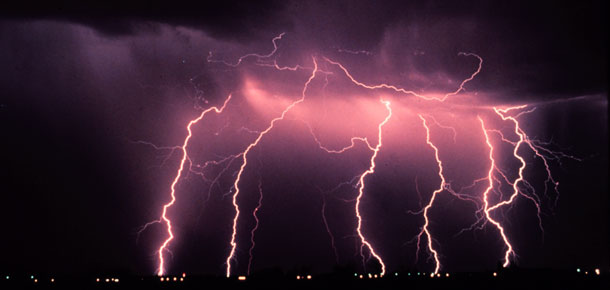
The threat of lightning is easy to ignore on an overcast summer day, but it can kill unprepared boaters without warning. Carrying as much as 100 million volts, it can smash a hole through a hull, explode a mast, and electrocute several people in a single flash. The thunderstorms of the Chesapeake Bay pose a lightning threat every boater should know about.
What is Lightning?
Lightning is nature’s way of equalizing conflicting charges in the atmosphere. These charged form most often when cool and warm air masses collide.
During a storm, negative charges build up in the base of clouds. As they pass over the earth, they create a positive charge in the normally negatively charged terrain. The positive charge works its way up tall objects, pulled along by the negatively charged clouds. As the positive charge forms an arc, lightning strikes.
How Dangerous is Lightning?
In the United States, lightning consistently kills more than 100 people per year. That’s more than other natural disasters, such as hurricanes, floods, or tornadoes. Risks are especially high for those who spend time outdoors, including farmers, fishermen, or boaters.
Water and lightning are a natural combination. Water conducts electricity very well, and when you add in the high profile of a boat surrounded by open water, there is an increased danger of getting electrocuted during a storm.
Take steps to stay safe. Here are tips from Maryland Sea Grant and University of Maryland Extension. Click on each heading to learn more.
What Can You Do?
To protect yourself in a boat, the important thing is to give lightning a ground. Boats made of steel, such as naval vessels, have an automatic ground in their metal hulls; but most small boats, usually constructed of fiberglass or wood, prevent the lightning easy access to the water and pose a grounding problem. Small boats may also lack tall objects that could deflect lightning. And even boats that do have tall spars -- like sailboats -- can run into problems if their spars are not properly grounded. The following grounding system will minimize the risk of lightning damage:
- On a sailboat, make a lightning rod using a piece of aluminum that sticks about 1 foot (30.48 centimeters) above the mast. Sharpen the rod to reduce resistance at the top. A radio antenna can also conduct electricity but may lead lightning to the radio and may well vaporize it during a strike.
- From the rod, lead a wire down a wooden mast; an aluminum mast can serve as its own conductor as long as a wire is led from its base to direct the charge to the ground. (A wooden mast with a metal sail track can be grounded as though it were a metal mast.) The Coast Guard finds a #8 wire adequate, though a larger gauge, say #4, further reduces heat and resistance.

- Attach this wire to a copper ground plate mounted on the hull beneath the waterline or dangled underwater. A square foot of copper flashing, easily obtained at many hardware stores, will make an adequate ground plate. If you decide to attach a permanent ground, use large stainless steel bolts, say 1/2 inch, to prevent their cracking under large electrical discharge. To increase safety, some recommend all stays be grounded to the plate.
- On a motorboat that has no high spar, use a metal radio antenna (not a fiberglass one), attaching a wire to a ground plate, as described above. If there is a loading coil on the antenna, use a shunt of 31-strand, 17-gauge, bare lightning grounding mesh to bypass it -- this will make the whole height of the antenna an effective ground. Quick-release clamps will allow an easy temporary attachment. (On a fiberglass antenna you can clamp the wire to a metal rod, letting that act as a lightning interceptor.) Use a "lightning arrestor" to protect your radio.
- When leading the wire to a ground, avoid sharp bends or turns. Any bend in the wire should have a radius of at least 60 degrees.
- One alternative calls for leading the grounding wire to a metal strip that runs down the bow or stern and maintains constant contact with the water. This offers the advantage of carrying the charge, at a gradual angle, safely away from the engine and the helm.
- Both the mast and the whip antenna will provide a "cone of protection" with a radius of approximately the same dimension as the rod's height. For most small boats, this will include the entire deck area. There may be, however, induced electrical surges created by the lightning, and for this reason large metal objects -- engines, for example - should be avoided during a storm. (Remember that an engine will have its own ground in the propeller and the shaft.) Induced electrical charges can cause arcing and electrical shocks strong enough to knock you unconscious, perhaps producing dangerous heart arrhythmias. A lightning strike can also magnetize a keel or other, metal fittings, rendering your compass useless.
First Aid for Lightning
After a shipboard lightning strike, check to see that everyone is all right -- it is, of course, perfectly safe to handle someone who has been hit by lightning. Check for burns, which should receive normal first aid treatment. (Don't put ointment on severe burns; cover them with clean cloth or plastic to keep out air.)
If someone has been knocked unconscious, act immediately: check for breathing and heartbeat.
If you feel a pulse, but no breathing, begin mouth-to-mouth resuscitation (a handkerchief over the mouth will help the squeamish). If there is no heartbeat, begin cardiopulmonary resuscitation, a technique every serious boater should know.
Precautions
Grounding your boat and unplugging radios and electrical equipment during a storm are good ideas, but the best precaution against lightning is avoidance. Especially in small craft, keep a weather eye out for the coppery haze and building cumulonimbus clouds that signal thunderstorms, heading ashore well ahead of the turbulence.
Remember that lightning can lash out for miles in front of a storm, and it can strike after a storm has seemingly passed. Remember, too, that, storms can bring high winds and waves, making a last-minute trip to shore a dangerous dash. The best maneuver of all is to think ahead.
Download a pdf of our brochure, Lightning: Grounding Your Boat, containing this information.
Photograph of lightning, NOAA
Program Announcements
Knauss legislative fellowships in Congress help build careers — and they're fun and educational. See our video and fact sheet for details.
Maryland Sea Grant has program development funds for start-up efforts, graduate student research, or strategic support for emerging areas of research. Apply here .
News and Blogs

A Place for Creativity in Science Writing

Maryland Sea Grant Funds Five New Research Projects

Sediment Coring 101
Video gallery.
Sea Grant Film Explores a Diminishing Smithville
Smithville is a community on Maryland’s Eastern Shore, on the edge of the Blackwater National Wildlife Refuge. A century ago, Smithville had more than 100 residents. Today, it has four, in two homes: an elderly couple, and one elderly woman and her son, who cares for her.
Featured Fellow
Leone yisrael, featured research project, exploring the use of benthic microbial fuel cells to remove sulfide while harvesting energy from oyster aquaculture biodeposits, the blue crab: callinectes sapidus.
An essential resource for researchers, students, and managers. Get your copy today!

Chesapeake Quarterly Magazine
A Growing Industry: Advancing Oyster Aquaculture in Maryland

©2023 Maryland Sea Grant. All rights reserved.
5825 University Research Court, Suite 1350 | College Park, MD 20740 Phone: (301) 405-7500 | Fax: (301) 314-5780 | Contact Us

How Often Do Sailboats Get Struck By Lightning?

Last Updated by
Daniel Wade
April 26, 2023
Key Takeaways
- A lightning protection system can help mitigate a lightning strike.
- Lightning storms can form anytime when offshore sailing so prepare the best you can.
- If you see lightning strikes nearby you should move to the middle of the boat.
- Multihull sailboats attract lightning more than other types of boats.
- Perfect lightning protection does not exist so plan accordingly before sailing.
Sailing during rough weather can be a dangerous situation. But how often do sailboats get struck by lightning?
Sailboats are hit with lightning strikes at a rate of four per 1,000 on average. Various boats in Florida on average have a rate of 3.3 out of 1,000, so location matters. The chance of any boat being struck by lightning in a given year is one in 1,000.
According to insurance claims for places like Florida that get hit with lightning strikes often every year, these numbers only reflect reported damage to sailboats. Marine surveyors warn that these numbers could be slightly higher so the chance of your boat being struck by lightning is still dangerous no matter how little or significant the risk is.
Table of contents
The Chances of Sailboats Being Hit by a Lightning Strike
Some will argue that the size and type of your boat do not matter when it comes to lightning strikes. This is not true since some boats have been reported to be more susceptible to lightning strikes than others.
Lighting strikes are not your fault but there are some things you can do to help lower the chances of your sailboat being struck by lightning. While there is no guarantee in a lightning protection plan, having all materials and actions ready beforehand could save you money and someone’s life.
Multihull Sailboats
Multihull sailboats like catamarans or trimarans have a 6.9% chance of lightning strikes a year out of 1,000. Multihulls lack keels and with more exposed surface area face a greater risk of lightning strikes. Modern multihulls come with complex electronic systems that usually lead to costly damages from a lightning strike.
Monohull Sailboats
Monohull sailboats have a slightly lower occurrence of lightning strikes than multihull sailboats at 3.8% out of 1,000 per year. Just because they are less likely to be hit with lightning than multihulls does not mean you are in the clear.
Other Types of Boats
Other boats such as trawlers, bass boats, and even pontoon boats are at lower risk individually. These boats have less surface area and some are not even designed to be offshore where storms are intense. When combining those and all other boats besides sailboats, the risk of being struck by lightning is 0.9 out of 1,000.
Length of Sailboat
Your mast is an extension of your boat so you should sit and wait for the weather to pass before heading out to sea. According to Martin Uman, who leads the Lightning Research Group at the University of Florida , sailboats with 20 to 30 feet taller masts are almost three times more likely to be struck by lightning. This is due to the nature of electrical charge transfer between clouds and the ground despite lightning bolts being typically five miles long and one inch wide.
Sailing in the Rain
Rain clouds hold water and thunderstorm clouds carry electric charges. Interestingly enough, sailing in the rain is fine, but the accumulation of storm clouds is dangerous. Your focus should be on Nimbostratus and Cumulonimbus.
Nimbostratus clouds are flat, large, and closer to the ground. They can produce precipitation and span vast areas at a time. Safe boating in these conditions requires proper measures such as adequate rain protection, safety gear, GPS, and lighting for navigation and anchoring.
Why Are Sailboats a Target for Lightning Strikes?
Lightning strikes can hit boats during a lightning storm since some have metal masts and antennas. You are more susceptible to a lightning strike due to conductive material and turning your boat into a giant lightning rod.
This is especially true for sailboats with high aluminum masts since lightning can hit the mast before anywhere else on the boat. Fiberglass boats sitting low on the water are less likely to be struck by lightning.
How to Prepare for a Potential Lightning Strike
Boaters must be familiar with essential safety guidelines for thunderstorms. A practical approach to lightning protection is providing a safe discharge path for lightning. No technology currently exists to prevent lightning strikes so preparing for the worst is all you can do.
Update Insurance or Check the Policy
Ensure your sailboat has adequate insurance. If you do not have any or want to change you could always check out what BoatUS Marine insurance can do for you.
Seek Weather Updates
Equip modern weather detection gear and check the forecast before sailing. If thunderstorms are predicted you should stay in the harbor until the weather clears.
You can always tune into the VHF radio weather channel that is typically found on channels one through nine depending on your area. This gives you timely storm updates and critical information if you are out while a storm arrives.
If Stuck in the Middle of a Storm
Storms that will likely produce lightning strikes can pop up at a moment's notice at sea. If you are unable to outrun the storm, here are a few tips to consider:
- Wait it out and keep your shoes on while avoiding metal objects.
- Hold onto non-conductive items like fiberglass but beware that water can conduct electricity.
- Keep a hand in your pocket for safety and ensure no metal is inside.
- Use a vital piece of wood or rubber to control the steering wheel and set the throttles at idle or low throttle.
- Lower the antenna, outriggers, and any fishing rods.
- Stay close to the middle of the boat and remove any metal jewelry.
- If lightning strikes the boat you should immediately ask if everyone is okay and look for a hole that the lightning went through to ensure you are not taking on water.
Keeping Electronics Safe
It would be best to use transient voltage surge suppressors (TVSS) to safeguard crucial and lightning-sensitive equipment such as ECU/ECM, chart plotters, and instruments. These semiconductor devices suppress lightning-induced voltage spikes and are widely used in aviation, wind power, and telecommunications.
TVSSs function like voltage-sensitive fuses and redirect excess voltage as heat. Using TVSSs is a wise investment in preventing lightning damage to equipment even though this heat may damage them.
Ground Your Sailboat
For a grounding system, you should install lightning rods or terminals on top of the mast and connect them to the grounding plate to protect it from lightning. Use cable as a down conductor for wood or carbon masts and retrofit the grounding plate during haul out.
Monohulls require one plate, while ketches, yawls, and schooners need a path for each mast and a strip under the hull. Catamarans need two plates but a more extended plate outline is better for current dissipation.
Internal Bonding Circuit
A bonding system is a circuit inside a boat that links main metal objects to the grounding plate with cables. This reduces the risk of internal side strikes caused by current jumping between objects towards the ground.
Related Articles
I've personally had thousands of questions about sailing and sailboats over the years. As I learn and experience sailing, and the community, I share the answers that work and make sense to me, here on Life of Sailing.
by this author
Learn About Sailboats
Most Recent

Affordable Sailboats You Can Build at Home
September 13, 2023

Best Small Sailboat Ornaments
September 12, 2023
Important Legal Info
Lifeofsailing.com is a participant in the Amazon Services LLC Associates Program, an affiliate advertising program designed to provide a means for sites to earn advertising fees by advertising and linking to Amazon. This site also participates in other affiliate programs and is compensated for referring traffic and business to these companies.
Similar Posts

Discover the Magic of Hydrofoil Sailboats
December 11, 2023

Hunter Sailboats: Are They Built for Bluewater Cruising?
August 29, 2023

What Is A Furler On A Sailboat?
August 22, 2023
Popular Posts

Best Liveaboard Catamaran Sailboats
December 28, 2023

Can a Novice Sail Around the World?
Elizabeth O'Malley
June 15, 2022

4 Best Electric Outboard Motors

How Long Did It Take The Vikings To Sail To England?

10 Best Sailboat Brands (And Why)
December 20, 2023

7 Best Places To Liveaboard A Sailboat
Get the best sailing content.
Top Rated Posts
Lifeofsailing.com is a participant in the Amazon Services LLC Associates Program, an affiliate advertising program designed to provide a means for sites to earn advertising fees by advertising and linking to Amazon. This site also participates in other affiliate programs and is compensated for referring traffic and business to these companies. (866) 342-SAIL
© 2024 Life of Sailing Email: [email protected] Address: 11816 Inwood Rd #3024 Dallas, TX 75244 Disclaimer Privacy Policy

How Often Do Sailboats Get Struck by Lightning?

Table of Contents
1. Introduction

2. Understanding Lightning Strikes
2.1 what causes lightning.
Lightning is a natural electrical discharge that occurs during thunderstorms. It is typically the result of the buildup and release of electrical energy within the atmosphere. When different charges accumulate, a powerful electrical discharge seeks to equalize the charge separation, resulting in lightning.
2.2 The Science Behind Lightning Strikes
Lightning strikes can occur between clouds, within a cloud, or between a cloud and the ground. When a sailboat is present, it can act as a conductor, attracting lightning due to its height and metallic components. The mast, rigging, and other metallic elements increase the likelihood of a sailboat being struck by lightning.
2.3 Factors Affecting Lightning Strikes
Several factors influence the frequency of lightning strikes on sailboats. These include geographical location, prevailing weather patterns, topography, and the height of nearby objects. Sailboats in areas with a higher frequency of thunderstorms and lightning activity are naturally at a greater risk.
3. Lightning Safety Measures for Sailboats
To minimize the risks associated with lightning strikes, sailboat owners should consider implementing various safety measures.
3.1 Importance of Lightning Protection Systems
Installing a lightning protection system on a sailboat is crucial. These systems consist of grounding, bonding, and surge protection devices that help dissipate the electrical charge and direct it safely into the water.
3.2 Grounding and Bonding
Proper grounding and bonding techniques ensure that the electrical charge is efficiently discharged into the water rather than passing through the boat’s interior. Grounding plates and conductive materials are strategically placed to provide a low-resistance path for the electrical discharge.
3.3 Surge Protection Devices
Surge protection devices are essential components of a lightning protection system. They are designed to divert excess electrical energy and prevent damage to sensitive electronic equipment on board.
3.4 Lightning Rods and Dissipation Systems
Lightning rods or dissipation systems can be installed on sailboats to attract lightning strikes and safely direct the electrical energy away from the boat’s vital components.
3.5 Best Practices for Sailors
Sailors can take additional precautions to minimize the risk of lightning strikes. These include monitoring weather forecasts, avoiding sailing during thunderstorms, seeking shelter in a safe harbor, and disconnecting sensitive electronic equipment during storms.
4. Frequency of Lightning Strikes on Sailboats
Determining the exact frequency of lightning strikes on sailboats is challenging, as it depends on various factors. However, according to anecdotal evidence and insurance claims, it is estimated that around 1 in 1,000 sailboats gets struck by lightning each year.
5. Real-Life Incidents of Lightning Strikes
Numerous documented incidents highlight the risks of lightning strikes on sailboats. These incidents range from minor electrical system damage to severe structural damage or even sinking. Sailboat owners should be aware of these real-life scenarios to understand the potential consequences and take appropriate safety measures.
6. Insurance Considerations for Sailboat Owners
Due to the risks associated with lightning strikes, sailboat owners are advised to obtain appropriate insurance coverage. Insurance policies often cover damages resulting from lightning strikes, providing financial protection in case of accidents or disasters.
7. Conclusion
While sailboats can be vulnerable to lightning strikes, understanding the risks and implementing appropriate safety measures can significantly reduce the likelihood and potential damage. Sailboat owners should prioritize the installation of lightning protection systems and follow best practices to safeguard their vessel and crew. By staying informed and taking necessary precautions, sailboat enthusiasts can continue to enjoy their maritime adventures with confidence.
8.1 Can lightning strikes sink a sailboat?
While lightning strikes can cause severe damage to a sailboat, sinking is relatively rare. However, it is crucial to have appropriate safety measures in place to mitigate the risks.
8.2 Are all sailboats at equal risk of lightning strikes?
Sailboats with taller masts and more metallic components are generally at a higher risk of lightning strikes. However, any sailboat can be affected, regardless of its size or construction.
8.3 Can lightning strikes cause fires on sailboats?
Yes, lightning strikes can cause fires on sailboats, especially if they ignite flammable materials or damage electrical systems. Implementing proper safety measures and fire prevention techniques is essential.
8.4 How can I protect my sailboat from lightning strikes?
To protect your sailboat from lightning strikes, consider installing a lightning protection system, including grounding and bonding techniques, surge protection devices, and lightning rods or dissipation systems.
8.5 Should I avoid sailing in stormy weather?
It is highly recommended to avoid sailing during thunderstorms or stormy weather conditions. Monitoring weather forecasts and seeking shelter in a safe harbor is crucial for your safety and the protection of your sailboat.
Mark Alexander Thompson
Mark Alexander Thompson is a seasoned sailor with over five years of experience in the boating and yachting industry. He is passionate about sailing and shares his knowledge and expertise through his articles on the sailing blog sailingbetter.com. In his free time, Mark enjoys exploring new waters and testing the limits of his sailing skills. With his in-depth understanding of the sport and commitment to improving the sailing experience for others, Mark is a valuable contributor to the sailing community.
Recent Posts
Lagoon vs Leopard Catamaran: Which Sailboat Is Right for You?
Introduction When it comes to cruising on the open waters, catamarans have gained immense popularity for their stability, space, and comfort. Two of the leading catamaran manufacturers, Lagoon and...
How to Determine Sailboat Weight: A Comprehensive Guide
Introduction Sailing is a thrilling and adventurous activity that has captivated humans for centuries. Whether you are a seasoned sailor or a novice looking to set sail for the first time,...
GETTING ZAPPED! What you should know about lightning and your sailboat By Marlin Bree
"It was one of the few times on Superior I've really been scared." I was aboard my sloop Persistence, bobbing peacefully in beautiful Prince Arthur Marina in Thunder Bay, Ontario, listening to a veteran Canadian sailor. He was sharing a memory with me, the way sailors do, of a sailboat cruise he took on Lake Superior to Isle Royale. "I was out on the open waters," he continued, "and all of a sudden, all around me were lightning flashes, zapping the water. I thought I was going to be next. I was clearly the tallest thing around - and my mast the biggest lightning rod." I could sympathize with him. No question: He was in danger.
Lightning is a serious problem. I recall seeing the results of a lightning strike on a 27-foot sloop in the harbor at Cornucopia, Wisconsin. A few inches above the boat's waterline was a fist-sized hole. The lightning had struck the aluminum mast, followed the mast down into the boat, and, then jumped from the hull into the water. Naturally, all the electronics were fried. No one had been aboard, but if they had, the damage might have been worse than just a hole in the boat and shot electronics.
Basically, lightning is a tremendous electrical charge that occurs in the atmosphere and it is attracted to the tallest nearby object. Sometimes this is a sailboat. The thought of hundreds of thousands of volts running wildly through a lonely boat out on the water is more likely than many boaters realize. In Florida, for example, the Florida Sea Grant estimated that lightning can be expected to hit from four to twenty percent of moored sailboats per year and that cruising sailboats typically get hit at least one time during their lifetimes. Worse, there is no way to protect against a strike. In fact, there is no sure-fire lightning protection. As I built my own 20-foot wooden sloop, Persistence, I contacted lightning experts who told me the only thing that you can do is ease the path of lightning through your boat. You can't stop it from hitting your boat, or shooting through your boat. The best you can hope for is to conduct the lightning strike through your boat in the path of least resistance - one that you have set up. It's called a grounding system. I began by getting a heavy copper plate and through-bolting that to the bottom of Persistence's keelson. This would provide my "ground." Inside the cabin, I secured braided copper wire especially made for a ground to my ground. The wire is about a half-inch in diameter, and, it leads on both sides alongside my wooden mast support to the top of the cabin. Here I fastened the copper wire to the stainless steel bolts holding my stainless steel mast tabernacle. Atop the cabin, in the tabernacle, my aluminum mast soars heavenward -- or at least as high as a 22-foot mast will allow. At one time, I had a special lightning rod atop my mast, but I discarded that. It stuck up several inches higher than my VHF antenna, and that was a few inches taller than the tri-color running light I also had up there. Lightning, I figured, wasn't going to be that particular: it'd just pick the nearest tall object and shoot down it until it discharged. The lightning rod, I thought, probably wouldn't conduct the lightning any better than the antenna, or, for that matter, my metal mast, which in reality was the biggest lightning rod of all. I now had a basic path for a lightning strike's electrical discharge. If the antenna attracted it, it would zap down the mast, flip inside the cabin via the copper cable, and discharge harmlessly through the copper ground into the water. I also made the assumption that if I got hit that I'd lose all electronics. I figured it'd be a small price to pay to keep my boat afloat. And myself, unfried. As it turned out, I had reason to be concerned. The Florida Sea Grant study said that boats in fresh water suffer more damage by lightning than boats in salt water. Why? Because fresh water is a worse conductor of lightning's electrical charges. On Persistence, I needed some kind of zone of protection through a bonding system. This was because the tremendous voltage that came down the mast wouldn't just conveniently leave by my pre-arranged grounding system. Actually, in an electrical strike, large voltages can develop between metal parts in the boat - for example around the cockpit where the skipper and crew are - and this is very dangerous. I began tying in all metal parts of the boat into my ground. The way I did this was by crawling into all spaces under the cockpit, cabin and foredeck and adding an extra nut and washer to the through-bolted metal parts, such as the engine mount, stainless steel lifeline stanchions, winches, genoa track, through-bolted cleats and heavy chain plates and shrouds. In turn, these were wired to my grounding plate. Basically, this smaller wire became a horizontal ring of protection to bleed off electrical energy.
Now I was all set. If I couldn't totally "protect" my sailboat from a lightning strike, at least I had some grounding and bonding protection. This would divert most of the initial discharge and drain voltage away as much as possible. Besides, lightning never strikes twice. Or does it? An internet story came to my attention from a boater in the Tampa Bay, Florida area, who got hit three times by lightning. He figures a part of his problem was that his mast, at 63 feet including the VHF antenna, was the tallest in the marina. But he added that his boat had the tallest mast only by a couple of inches, and, maybe that wasn't the only factor. He filed three claims for the three lightning strikes, two of which were direct hits, for having to replace all electronics. A third claim was for a near miss by lightning, but still had enough voltage to burn up many of his electronics. The insurance paid out a total of $73,000 for lightning damage, and then failed to renew his insurance policy. Lightning factoids for sail boaters: Beware of cockpits: Basically, the cockpit is the most dangerous place in a sailboat that is not bonded because of its metal parts. For example, during a lightning strike, large voltages could zap a skipper big time if he or she had one hand on a metal steering wheel and, for example, the metal engine controls or the lifelines.
Head for safety: When storm clouds gather, head for shore. The worst place to be is on the open water where you and your boat are the tallest lightning rods around.
Try a little radio: An old sailboater's trick is to turn on an AM (not FM) radio to listen for static. This will tell you if there's an electrical charge building around you. Small, cheap portable radios are best.
Go below: If you do see lightning zaps too close for comfort, go below, if you can. That gets you away from all that metal in the cockpit.
Stay away: If you do go below, stay away from the mast-to-keel area. That's the primary route of the lightning seeking a place to exit.
Don't go near the water: Avoid any connection between yourself and the water. Your body is a better conductor than air, and lightning will like you better than air as a better route. You become a human lightning rod.
Worst-case scenario boat: The worst boat to be in during a lightning strike is a small sailboat in fresh water. Even if the boat has a well-built protection and bonding system, "it is still an exceedingly hazardous situation," says the Florida Sea Grant. If there is no lightning protection, the situation is "life threatening." In both protected and unprotected sailboats, advises the Florida Sea Grant, the places aboard to avoid are directly beneath the mast or the boom. Stay with the boat. If you think of going overboard, if you are in an unprotected boat, "electrocution is highly probable if lightning strikes nearby." In fact, says the Sea Grant, "there is no safe place on an unprotected small sailboat and in a protected boat only places of relative safety."
If the lightning factoids seem a little hard to take, take heart at Sea Grant's additional advice: "There is one place that is more hazardous than a small unprotected sailboat, it's a small, unprotected boat without a mast. Every year there are multiple deaths of boaters in open boats caused by lightning strikes, but there are very few reports of sailors in sailboats killed by lightning." Zap! One never knows, does one? Marlin Bree is a frequent contributor to Northern Breezes and is the author of four books about boating, including his latest, Wake of the Green Storm. (see www.marlinbree.com). His sailing adventures during Superior's "Perfect Storm" are included in a new nonfiction anthology from International Marine publishing, Treacherous Waters: Stories of Sailors in the Clutch of the Sea, garnered the publisher says, from "the best writing about sailing and the sea from the past 40 years."
Know how the COVID-19 pandemic can affect disaster preparedness and recovery, and what you can do to keep yourself and others safe.
Lightning Safety Tips

Learn indoor and outdoor safety tips to protect yourself and your loved ones from lightning.
Indoor Safety Tips
Even though your home is a safe shelter during a lightning storm, you might still be at risk. About one-third of lightning-strike injuries occur indoors. Here are some tips to keep safe and reduce your risk of being struck by lightning while indoors.
- Avoid water. Do NOT bathe, shower, wash dishes, or have any other contact with water during a thunderstorm because lightning can travel through a building’s plumbing. The risk of lightning travelling through plumbing might be less with plastic pipes than with metal pipes. However, it is best to avoid any contact with plumbing and running water during a lightning storm to reduce your risk of being struck.
- Don’t touch electronic equipment. Do NOT use anything connected to an electrical outlet, such as computers, laptops, game systems, washers, dryers, or stoves. Lightning can travel through electrical systems, radio and television reception systems, and any metal wires or bars in concrete walls or flooring. Equip your home with whole-house surge protectors to protect your appliances.
- Avoid windows, doors, porches, and concrete. Stay away from windows and doors, and stay off porches. Do NOT lie on concrete floors or lean on concrete walls during a thunderstorm. Lightning can travel through any metal wires or bars in concrete walls or flooring.
- Don’t use corded phones. Corded phones are NOT safe to use during a thunderstorm. Do NOT use them. However, it is safe to use cordless or cellular phones during a storm.
Outdoor Safety Tips
Although no place outside is safe during a thunderstorm, you can minimize your risk by assessing the lightning threat early and taking appropriate actions. The best defense is to avoid lightning. Here are some outdoor safety tips that can help you avoid being struck.
- Be aware. Check the weather forecast before participating in outdoor activities. If the forecast calls for thunderstorms, postpone your trip or activity, or make sure suitable safe shelter is readily available.
- Go indoors. Remember the phrase, “When thunder roars, go indoors.” Find a safe, enclosed shelter when you hear thunder. Safe shelters include homes, offices, shopping centers, and hard-top vehicles with the windows rolled up.
- Seek shelter immediately, even if caught out in the open. If you are caught in an open area, act quickly to find shelter. The most important action is to remove yourself from danger. Crouching or getting low to the ground can reduce your chances of being struck, but it does not remove you from danger.
- Immediately get off elevated areas such as hills, mountain ridges, or peaks.
- Never lie flat on the ground. Crouch down in a ball-like position with your head tucked and hands over your ears so that you are down low with minimal contact with the ground.
- Never shelter under an isolated tree. If you are in a forest, shelter near lower trees.
- Never use a cliff or rocky overhang for shelter.
- Immediately get out of and away from ponds, lakes, and other bodies of water.
- Stay away from objects that conduct electricity (such as barbed wire fences, power lines, or windmills).
- Separate from others. If you are in a group during a thunderstorm, separate from each other. This will reduce the number of injuries if lightning strikes the ground.
- If you are out in the open water and a storm rolls in, return to shore immediately. If you are on a boat in open water when a thunderstorm rolls in, return to shore immediately and seek shelter. If you are unable to return to shore, boats with cabins offer some protection. If caught in a storm in a small boat with no cabin, drop anchor and get as low as possible.
- Don’t stay in open vehicles. During a thunderstorm, avoid open vehicles such as convertibles, motorcycles, and golf carts.
- Don’t stay in open structures. Avoid open structures such as porches, gazebos, baseball dugouts, and sports arenas. These structures won’t protect you from lightning.
- Avoid open spaces. Stay away from open spaces such as golf courses, parks, playgrounds, ponds, lakes, swimming pools, and beaches. Seek shelter immediately.
- Don’t stay near tall structures. Stay away from tall structures, such as telephone poles and trees; lightning tends to strike the tallest object around.
- American Red Cross: Thunderstorm Safety
- CDC: Lightning Information for Organized Sporting Events
- CDC: Lightning Information for Outdoor Recreation
- CDC: Lightning Information for Water Activities
- National Weather Service: Lightning Safety
- Ready.gov: Thunderstorms and Lightning

Exit Notification / Disclaimer Policy
- The Centers for Disease Control and Prevention (CDC) cannot attest to the accuracy of a non-federal website.
- Linking to a non-federal website does not constitute an endorsement by CDC or any of its employees of the sponsors or the information and products presented on the website.
- You will be subject to the destination website's privacy policy when you follow the link.
- CDC is not responsible for Section 508 compliance (accessibility) on other federal or private website.
Lightning on a Boat | Safety Tips
Riding the storm: how to protect yourself from lightning on a boat.
As a boater, encountering unpredictable weather conditions is inevitable. Among the various weather hazards, lightning poses a significant threat to your safety on the water. Understanding how to protect yourself and your fellow passengers from lightning strikes while on a boat is of utmost importance. We will explore essential tips on how to stay safe and minimize the risks associated with lightning during your boating adventures.
Stay Informed
Knowledge is your first line of defense. Stay updated with weather forecasts before setting sail. Keep an eye out for thunderstorm warnings or watches in your area. Utilize reliable weather apps, radio broadcasts, or even a marine VHF radio to receive up-to-date weather information throughout your journey.
Designate a Lightning Safety Plan
Create a well-defined lightning safety plan before embarking on any boating trip. Ensure everyone on board understands and follows the plan in case of a lightning threat. Assign roles to each person, such as helmsman, lookout, and someone responsible for monitoring the weather updates. Practice the plan with your crew members to ensure a coordinated response during emergencies.
Seek Safe Harbor
At the first sign of approaching thunderstorms or lightning activity, head towards a designated safe harbor or marina. Make sure you are familiar with the locations of nearby shelters or protected anchorages in advance. Avoid open waters, exposed areas, or tall structures such as bridges or power lines. Remember, the goal is to find a location that provides a safe, grounded shelter.
Avoid Metal Objects
Lightning is attracted to metal objects, increasing the risk of a strike. Stay away from tall metal structures, such as masts, antennas, and fishing rods. Seek shelter inside the cabin or a fully enclosed space on your boat. If possible, remove or lower any extendable metal objects on your vessel that could act as lightning rods.

Disconnect Electronics
Before a thunderstorm approaches, disconnect any unnecessary electronics and power sources. Unplug radios, GPS devices, cell phones, and other electrical equipment to reduce the risk of damage from power surges caused by lightning strikes. This step will also help prevent potential fires onboard.
Stay Inside the Boat
When a thunderstorm is nearby, it’s crucial to remain inside the boat and avoid unnecessary exposure to the elements. Close all windows, hatches, and doors to create a protective enclosure. It is advisable to sit or crouch in the center of the boat’s cabin, away from windows and metal structures, to minimize the risk of injury in case of a lightning strike.
Stay Clear of Water
While in the midst of a thunderstorm, it’s important to avoid contact with water as much as possible. Do not swim, fish, or engage in any activities that involve direct contact with the water until the storm has passed. Water bodies act as conductors, increasing the likelihood of a lightning strike.
Wait for the Storm to Pass
Thunderstorms can be unpredictable, and it’s essential to exercise patience. Wait until the storm has fully passed and the skies have cleared before resuming your boating activities. Keep monitoring the weather conditions to ensure no further threats are imminent.
Boating in the face of inclement weather requires careful planning and a commitment to safety. Lightning is a powerful force of nature, and understanding how to protect yourself from it while on a boat is paramount. By staying informed, seeking shelter, avoiding metal objects and water, and following a well-practiced safety plan, you can minimize the risks associated with lightning strikes. Remember, your safety and that of your passengers should always be the top priority when venturing out onto the water. Read on about how boaters can best observe the weather .
Latest News

JBYS Introduces a New Brand to the Lineup | Born to Rebel
We are thrilled to announce a new partner to our brand lineup. SACS Rebel is re-writing the rules of powerboating and JBYS is the exclusive U.S. dealer. Team JBYS is thrilled to announce the latest addition to our esteemed brand lineup. SACS Rebel is a bold new nautical concept that is changing the game of…
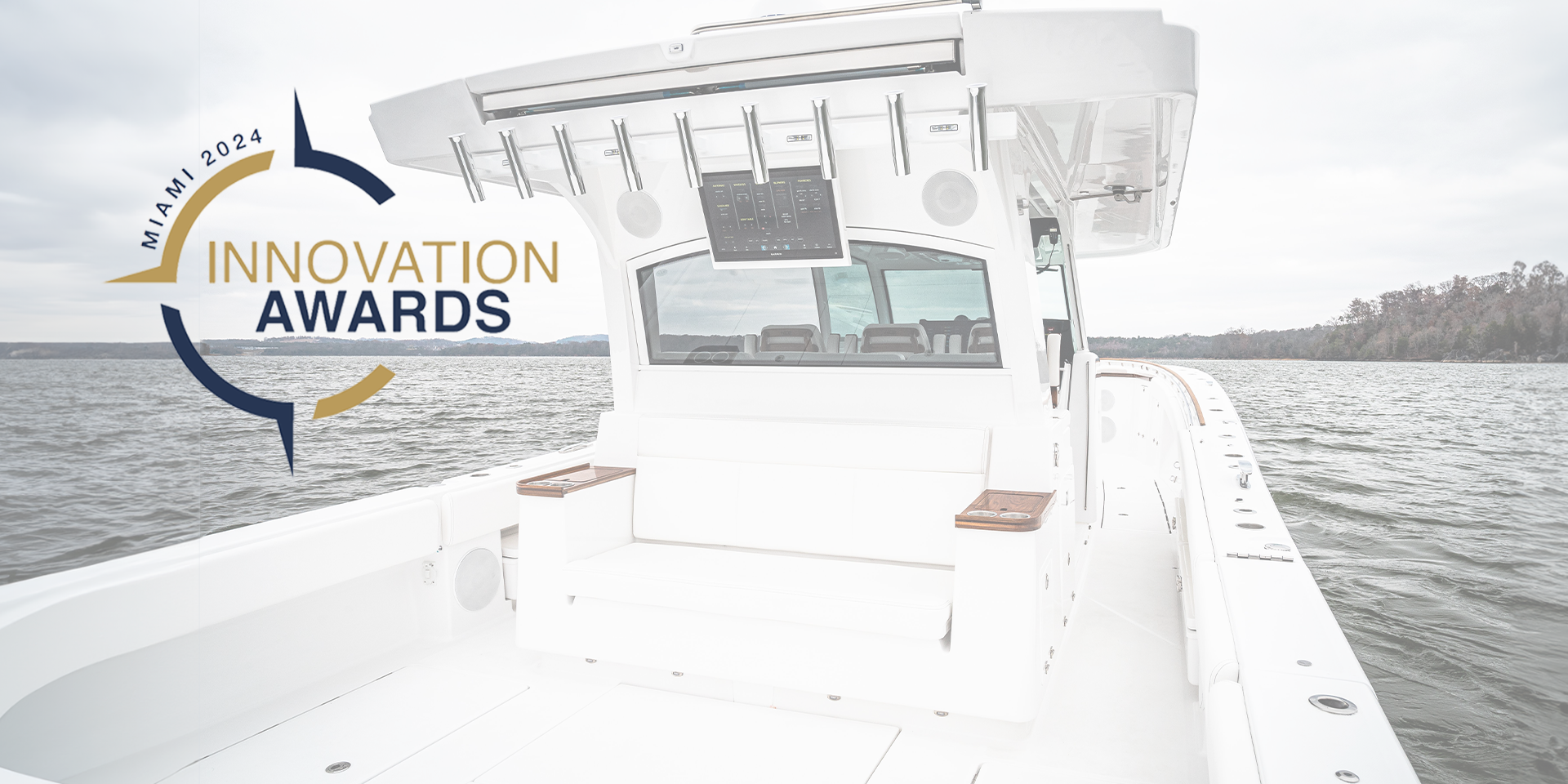
HCB Yachts 2024 Innovation Award Winner | 48 Campeón
The HCB Center Console Yachts team takes home the 2024 Innovation Award for the coveted HCB 48 Campeón, at the Miami International Boat Show. Jefferson Beach Yacht Sales extends congratulations to HCB Yachts for their well-deserved victory in winning the 2024 Innovation Award at the prestigious Miami International Boat Show. HCB’s newest model – the…
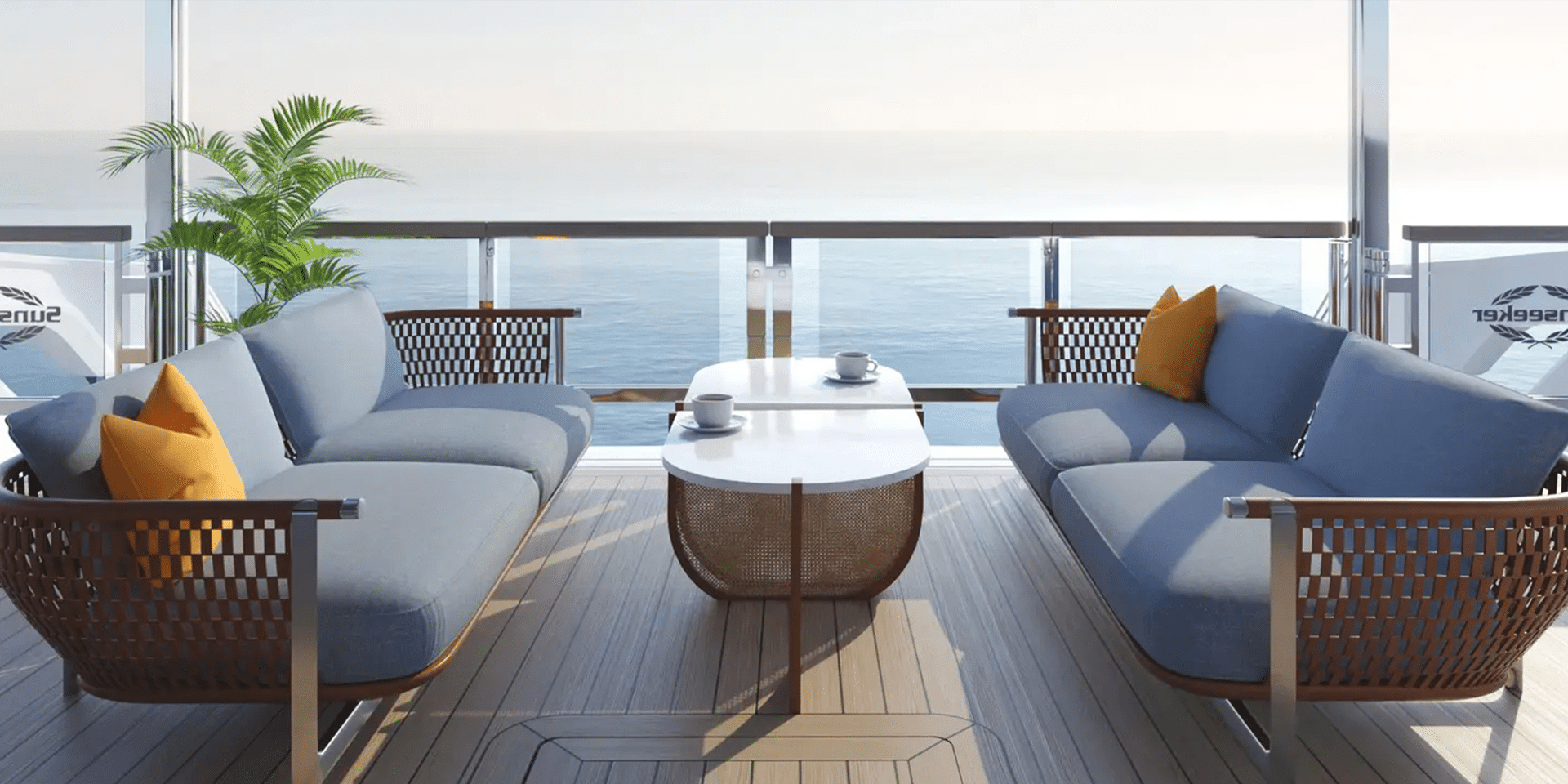
Sunseeker and Italian design agency, Visionnaire, are making waves
A partnership focused on redefining luxury yachting The Ocean 182 debuted this January, at boot Düsseldorf, showcasing the new partnership between Sunseeker and Italian design agency, Visionnaire. This collaboration aims to redefine luxury and enhance onboard spaciousness. By utilizing innovative and sustainable materials, the project seamlessly incorporates colors inspired by the sea and sand. The…

Workforce Development | Opportunities in the Marine Industry
Cultivating the next generation of marine technicians. Abundant Opportunity The Michigan Boating Industry Association (MBIA) has been working to spread industry career awareness, and offer support to marine industry jobs. A recent outlook survey from the national association of manufacturers noted that “attracting and retaining a quality workforce” was one of its top challenges. To…
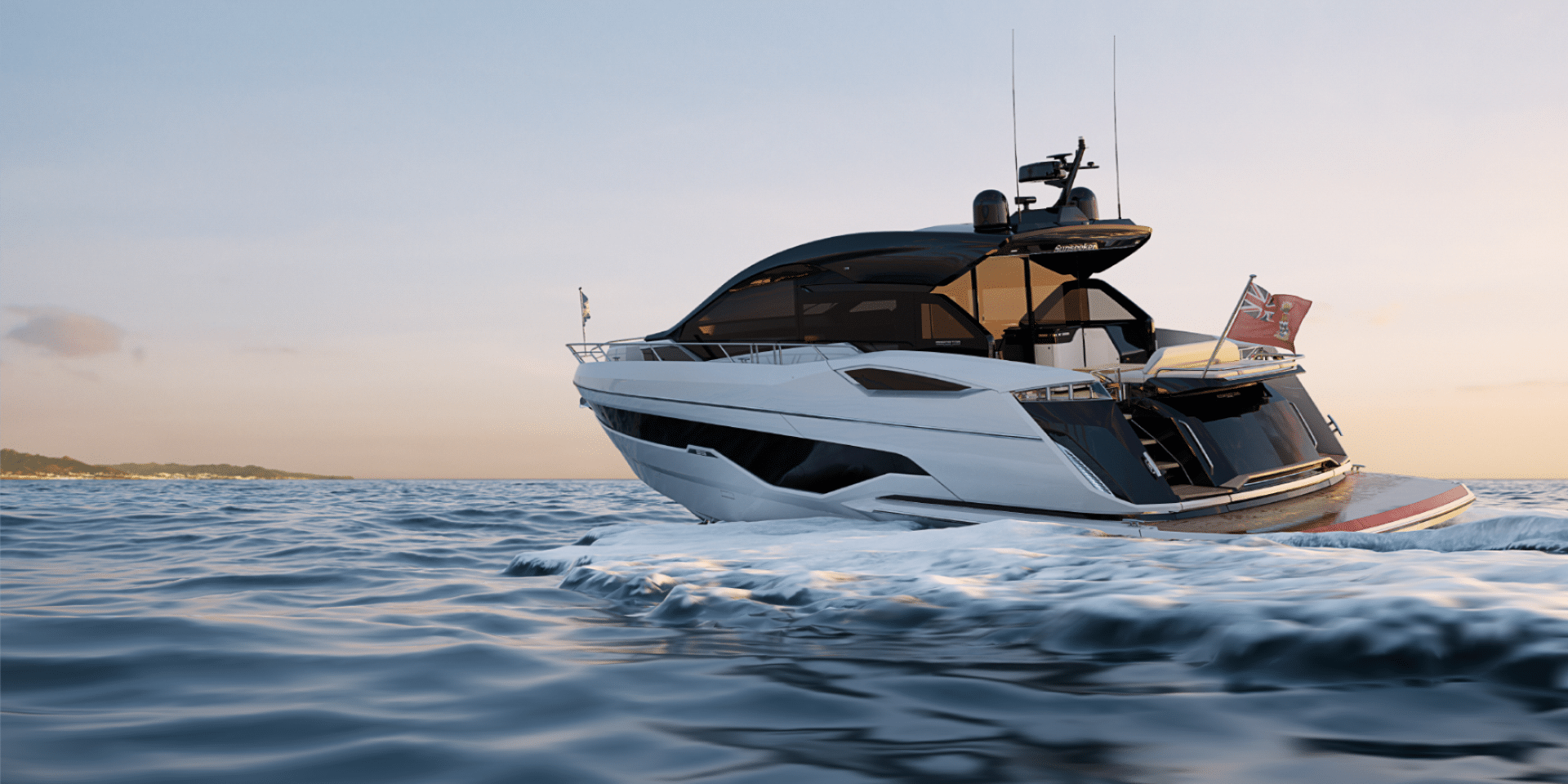
All-New Sunseeker 55 Predator | The Next Evolution
The Next Evolution of the Sunseeker Predator 55 Arrives “The Sunseeker Predator 55 is the next step in our New Product Development plan that seeks to produce at least three new boats in this size category, each with its own differentiating features designed to appeal to our discerning clients. A completely new silhouette for the…
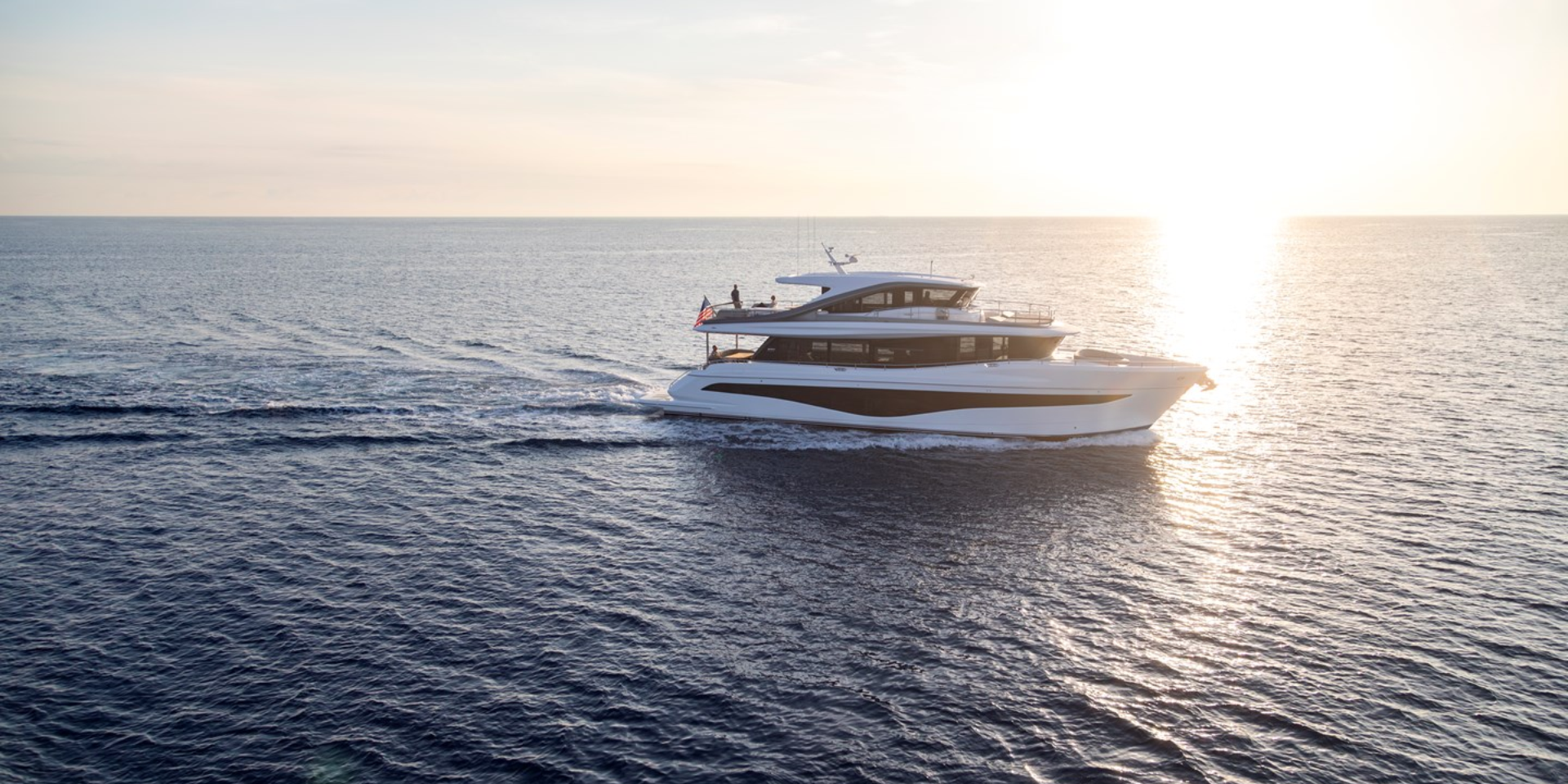
Princess X80 Takes Best Custom Yachts Trophy | Motor Boat Awards
Princess Yachts announced a big win at the 2024 Motor Boat Awards. The X80 took a well-deserved win in the Custom Yachts Category. “That lofty elevation, fulsome superstructure and super flybridge layout have proved so effective at luring in customers that they are now being widely mimicked in crossover craft all over the world.” -Motor…
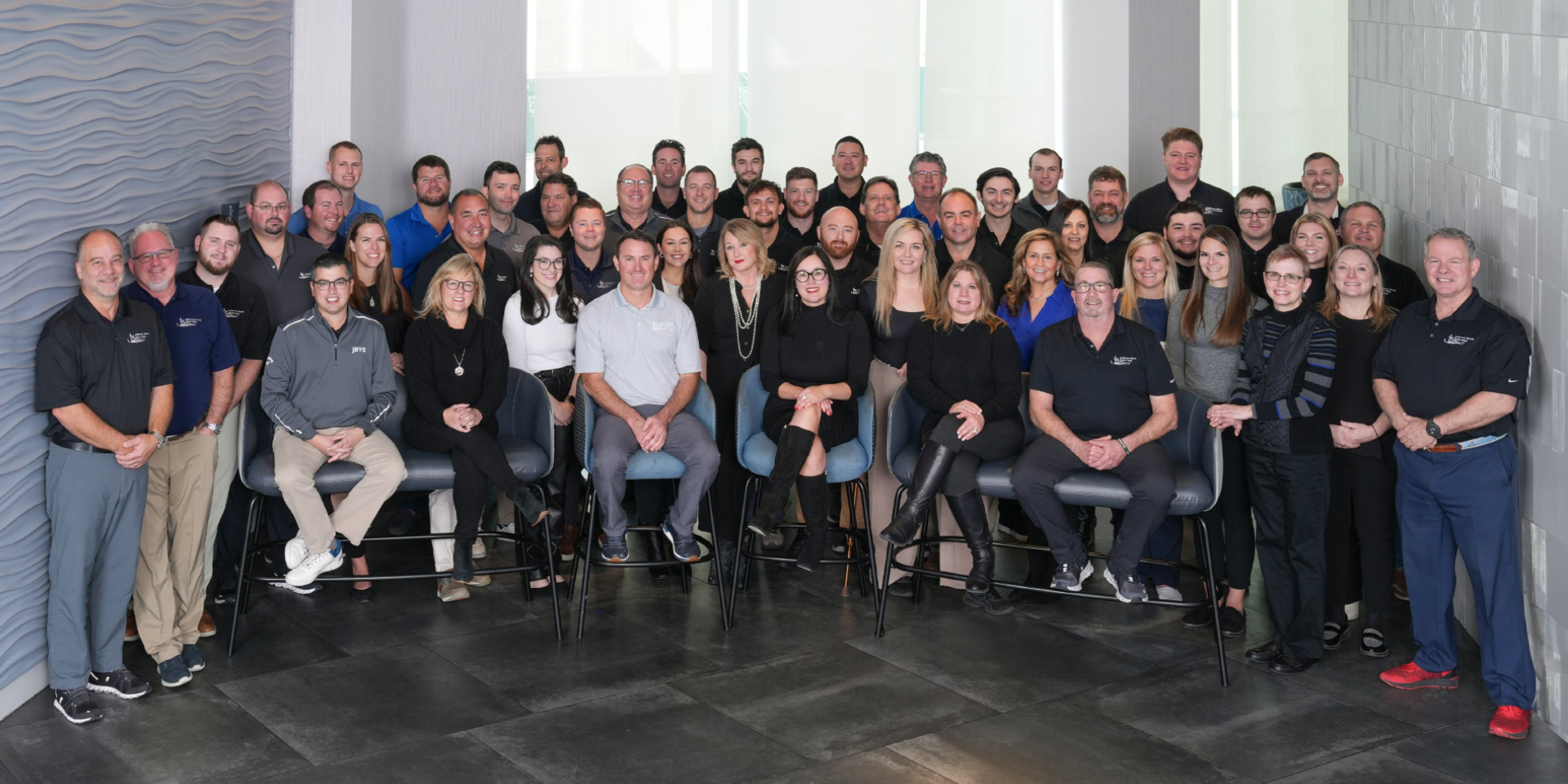
Navigating Waves of Success | 2023 Recap
New Horizons As we bid farewell to 2023, it’s time to set anchor and reflect on the incredible journey we’ve had at Jefferson Beach Yacht Sales. Join us in a voyage of memories as we unveil our exclusive year-end recap video, highlighting the adventures, successes, and connections we’ve made over the 12 months. As we reflect…
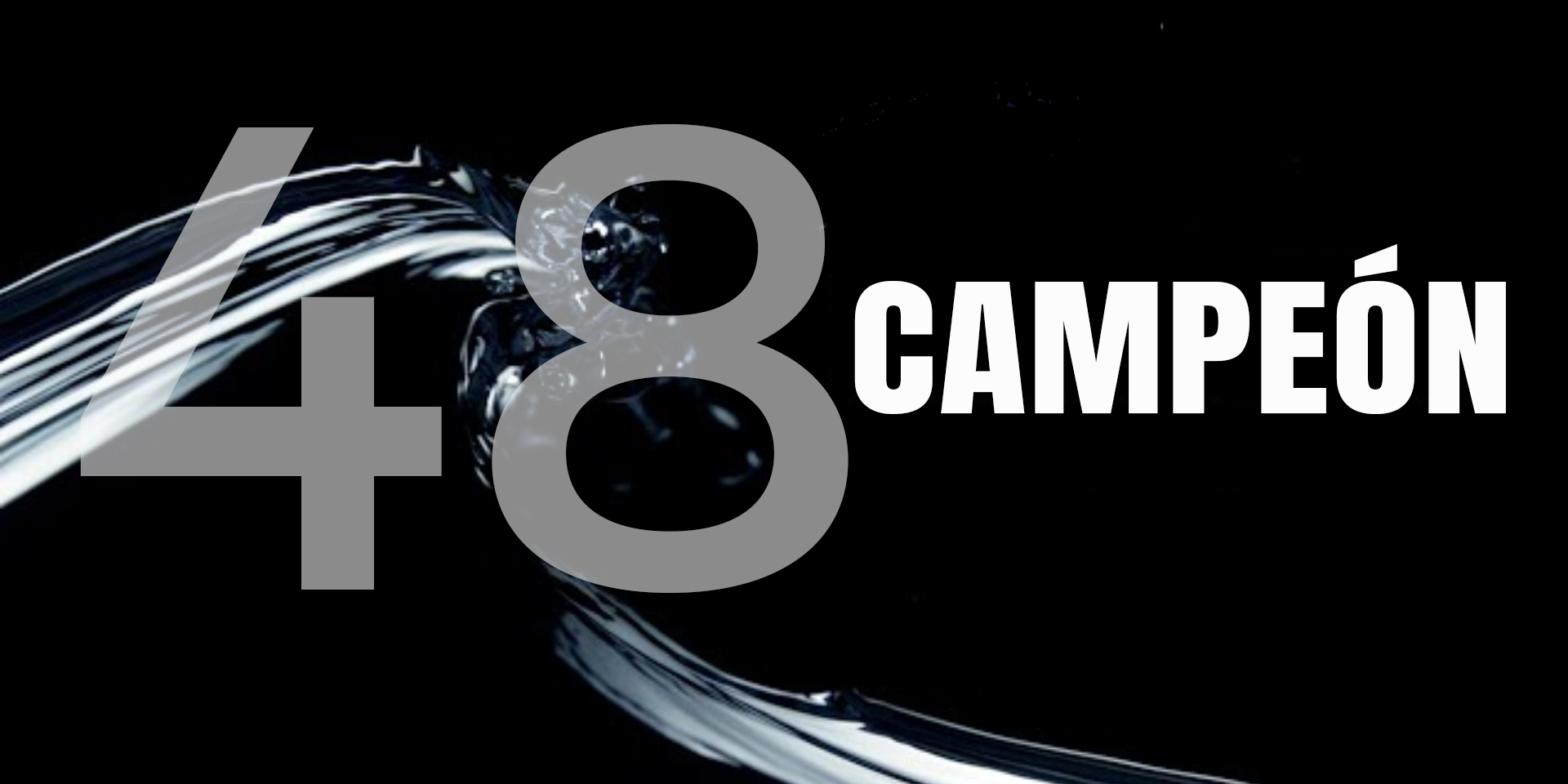
Unveiling the 48 Campeón | For the Bold
HCB Canter Console Yachts is unveiling an all new model HCB Center Console Yachts is rolling out a new flagship. The HCB 48 Campeón is the largest in the 40 foot range. She is also the fastest in her fleet. Innovation defines the newest HCB center console yacht. This magnificent center console yacht is equipped…
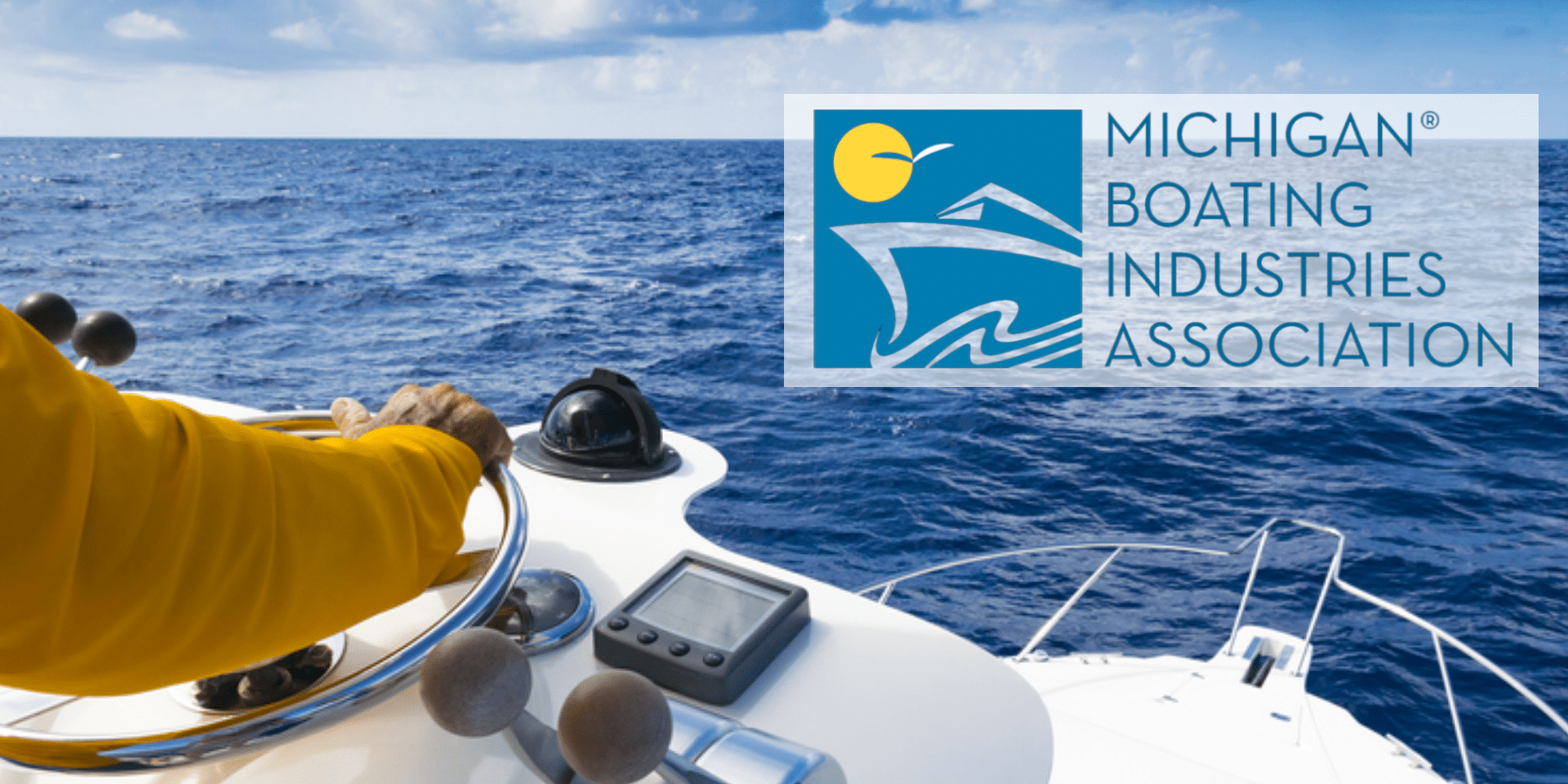
Work with the MBIA | Join the Michigan Marine Workforce
This is Your Opportunity to work with the MBIA and join the growing workforce in the Michigan Marine Industry The Michigan Boating Industry Association (MBIA) is looking for a great candidate to help grow and support the marine workforce in Michigan. The primary role of the MBIA’s open Workforce Development/Membership Coordinator position is to develop…
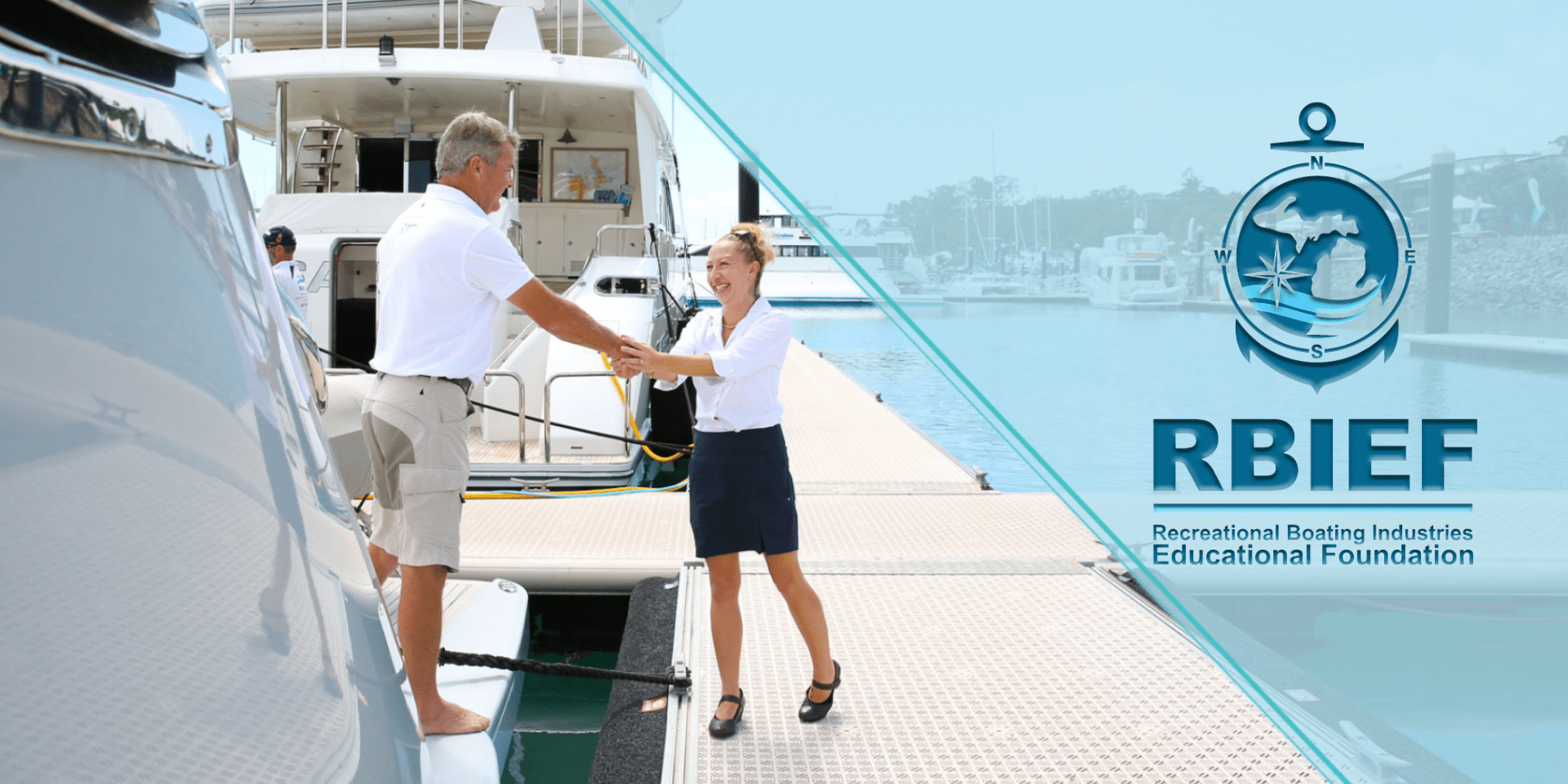
Upcoming Scholarship Opportunities | RBIEF
There are scholarship opportunities and career days ahead with the Recreational Boating Industries Educational Foundation Boating season in Michigan is over, but there are tons of opportunities when it comes to awesome, full-time, well-paying careers in the boating industry that last all year round. These boating industry careers cross many other industries including technicians, electricians,…

Erik Kruger Appointed to Michigan State Waterways Commission
Erik Krueger, JBYS Vice President, is now serving a role on the Michigan State Waterways Commission Board The Michigan State Waterways Commission is a several-member advisory board that works with the Michigan Department of Natural Resources on the use of dedicated funds, provided by boaters. The board is responsible for the acquisition, construction, and maintenance…
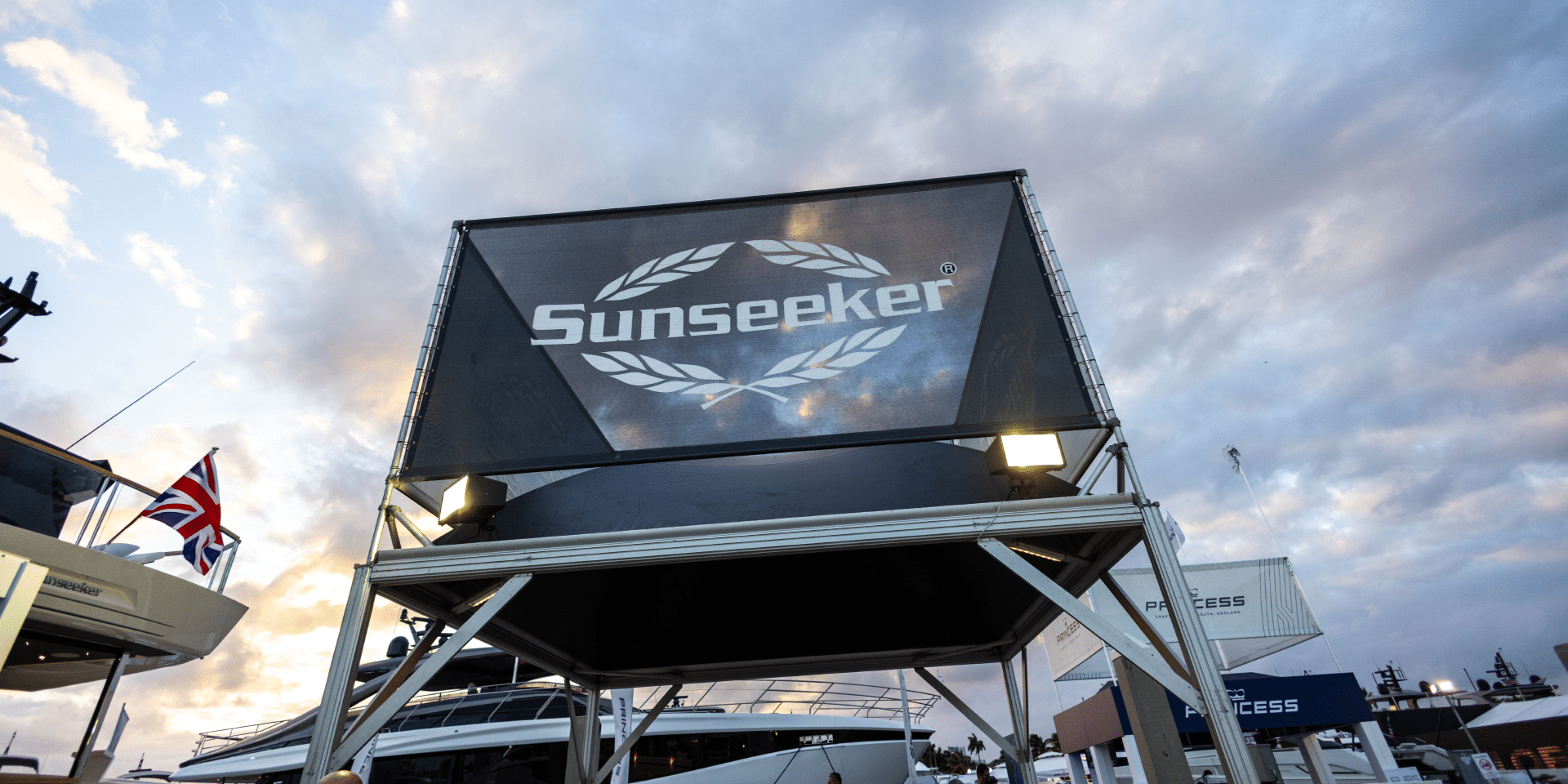
The Launch of the Ocean 182 | FLIBS 2023
Sunseeker Launches The Ocean 182 at the Fort Lauderdale International Boat Show 2023 following the 90 Ocean The all-new Ocean 182 has arrived. Following the ever-popular 90 Ocean, this latest addition to the Ocean family of Sunseeker yachts offers something completely novel in the Sunseeker range. Sunseeker launched the all-new Ocean 182 on opening day…
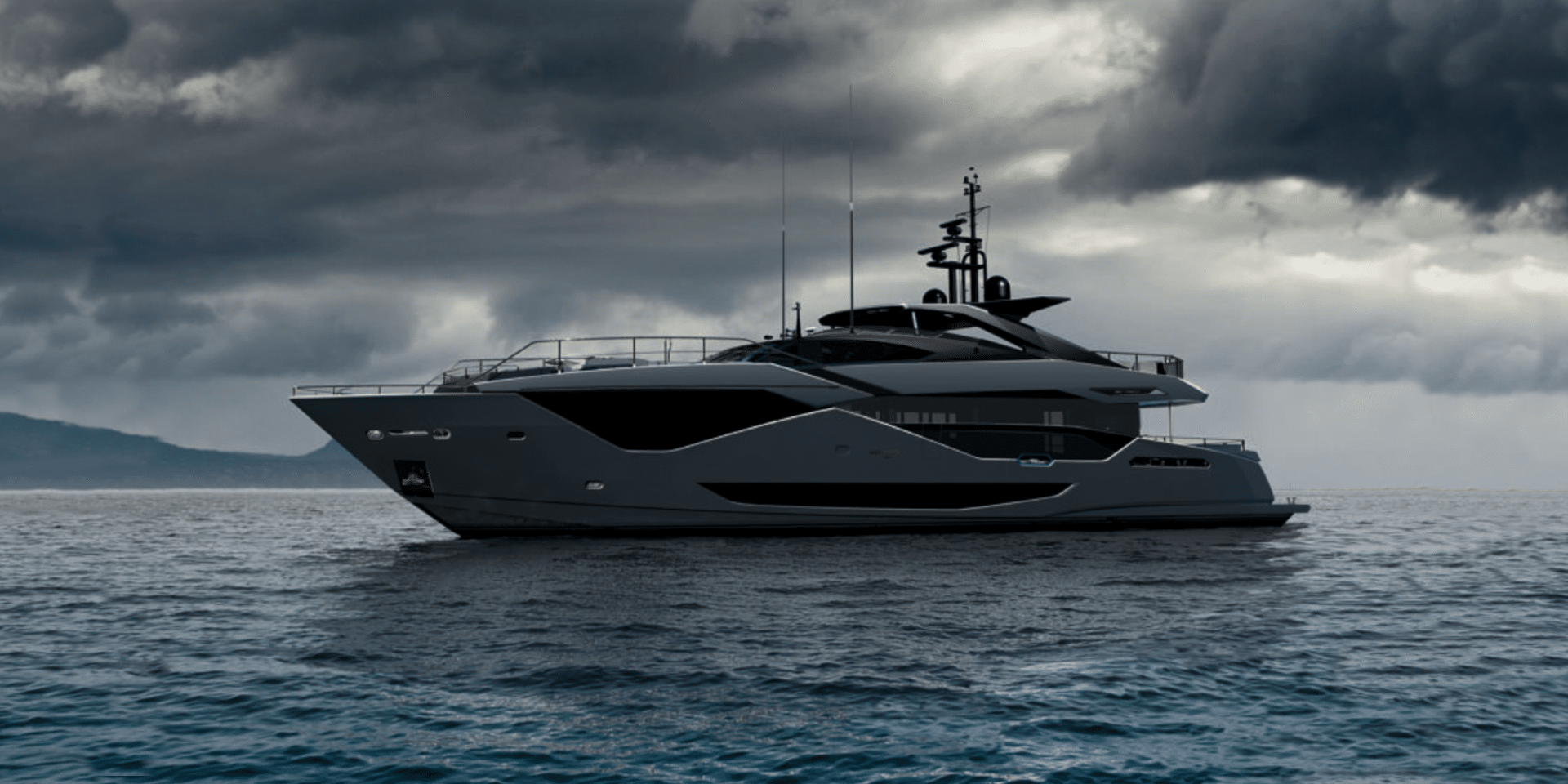
All-New Sunseeker 120 Yacht | The Superyacht
The Next Evolution of Sunseeker Unveils the 120 Yacht The stunning 120 Yacht is characterized by bold geometry, an athletic silhouette, immaculate style and effortless functionality. The main deck saloon has the intention of becoming a private retreat, offering flexibility to furnish with statement loose furniture suited to the taste of the owner. • An…
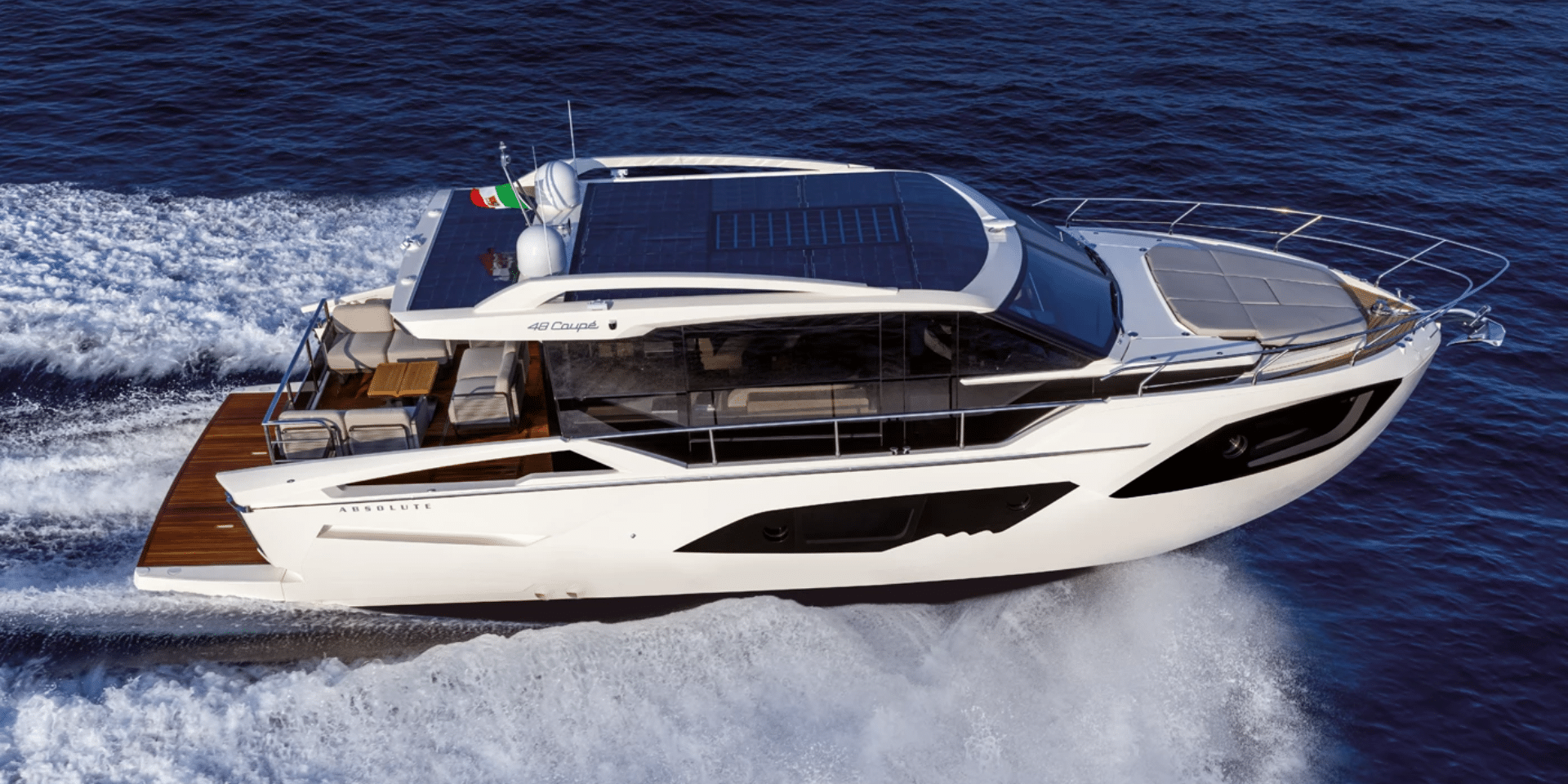
Absolute Yachts | Solar Panel Technology
Absolute Yachts has maintained a dedication to sustainability through its efforts in regards to solar panel technology Absolute has dedicated attention to sustainability for decades, long before it became such a topical theme. For this company, building the finest yachts on which to enjoy the marine environment has always gone hand-in-hand with the need to protect this…

All-New Sunseeker Ocean 182
Sunseeker Ocean 182 Launches in the United States at the Newport International Boat Show 2023 Sunseeker is rolling out the global debut of the new Ocean 182. The captivating interior space, innovative features, and exquisite detailing redefine comfortable yachting. The global debut took place at the Newport International Boat Show. The Sunseeker Ocean 182 is…
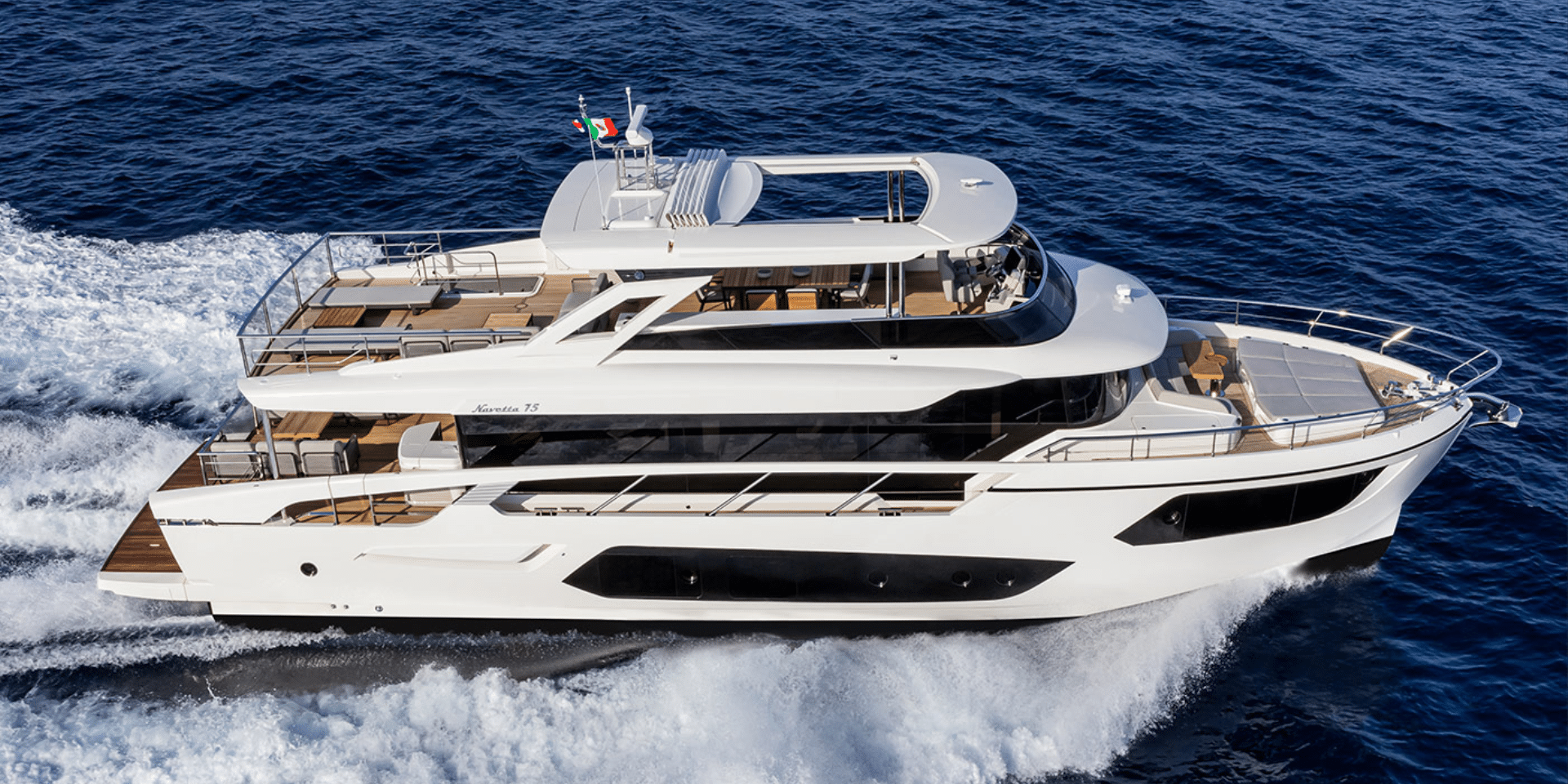
The Largest Absolute Yacht
What is the Largest Absolute Yacht? When it comes to the world of yachting, size often does matter. Absolute Yachts just announces its All-New Model, the Absolute 70 Navetta, and while this is one of the largest models in the brand name, there is only one model that takes the title ‘Largest Absolute Yacht.’ Among…
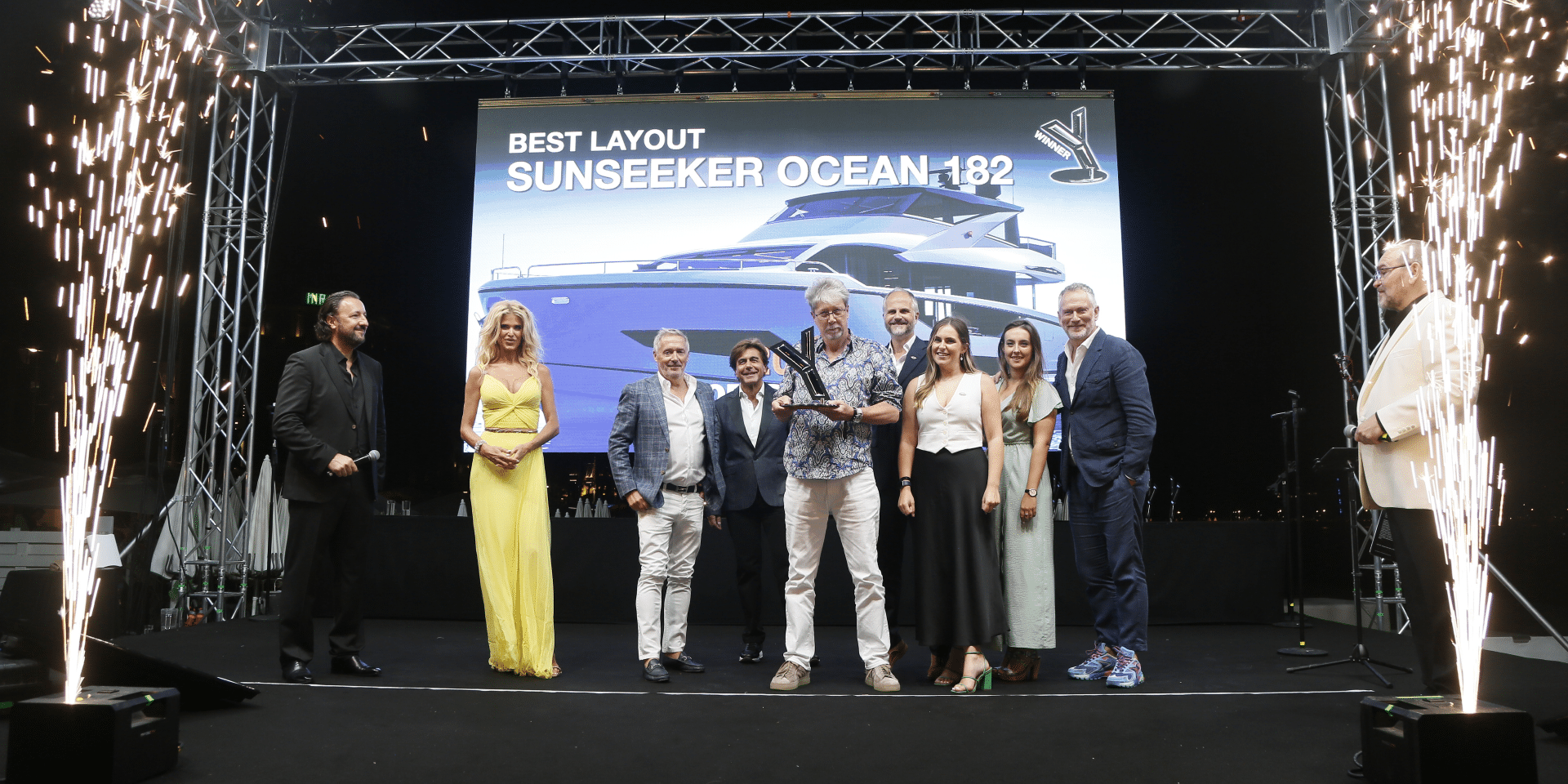
Double Award Win for Sunseeker Yachts
Sunseeker snags two major wins at the World Yachting Trophies for the Ocean 182 and 55 Superhawk Sunseeker Yachts received two awards at the 2023 World Yachts Trophies for its exceptional design innovation. The Superhawk 55 won ‘Best Exterior Design’ in the 45’ to 64’ category for its dynamic exterior profile and innovative lifestyle features….

The New Absolute Navetta 70
Discover the Allure of a Totally New Yacht The official press presentation of the Absolute Navetta 70, a totally new yacht whose originality, architecture, design and detailing make it a trend-setting, iconic craft that represents a new direction not only for Absolute but for the entire luxury yacht industry. The keyword that Absolute has chosen…

Do you need outboard motor repair?
The importance of outboard motor maintenance and why to contact a marine mechanic for repairs. Outboard motors need care and attention just like anything else. Regular maintenance not only ensures the reliability of your motor but also contributes to safe and enjoyable boating experiences. Just like any mechanical device, they can encounter various issues over…
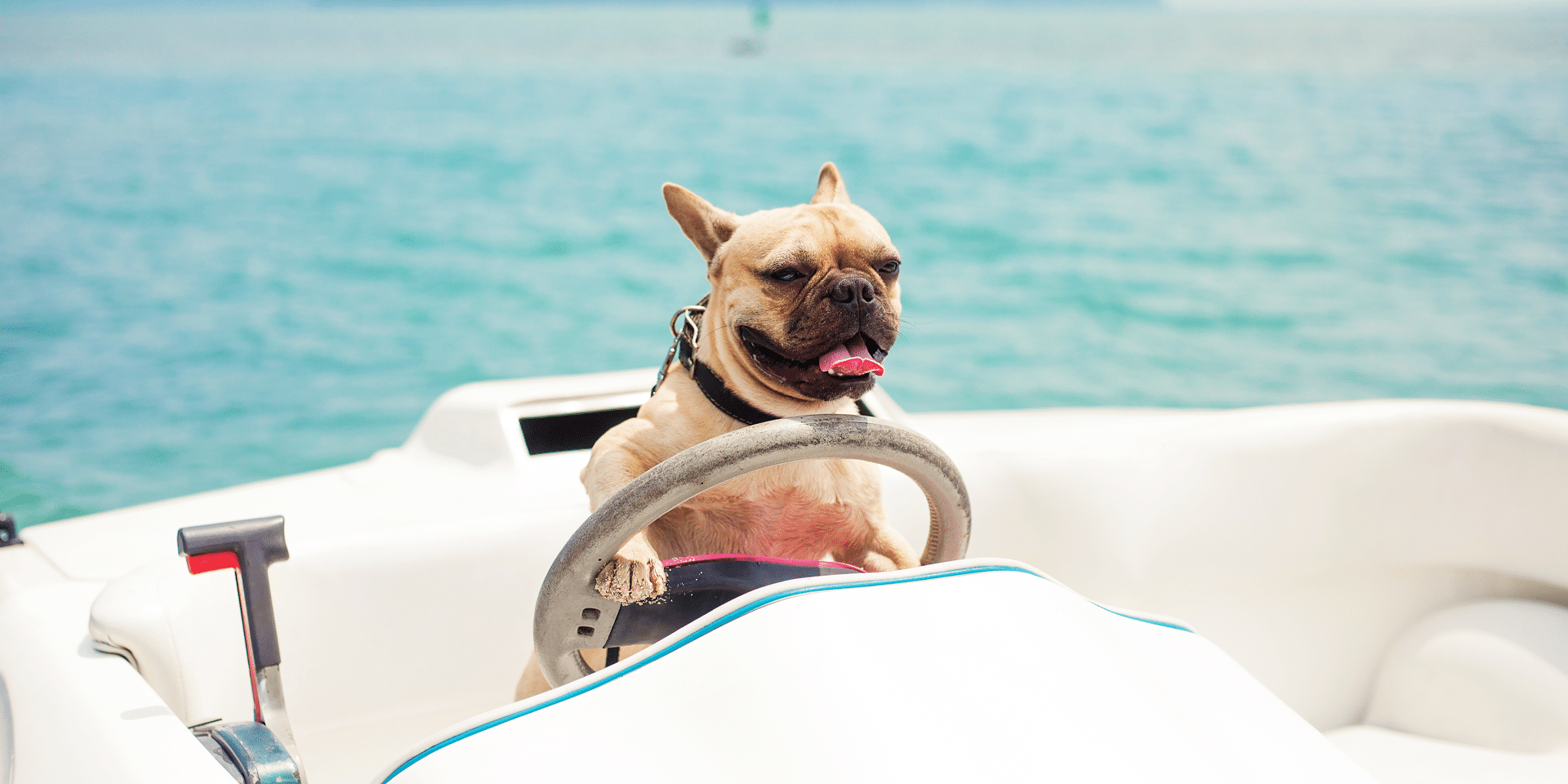
Safe Boating with Dogs
A Guide for safe and fun boating with your canine companions. Spending a day on a boat can be a lot of fun, especially when you have your four-legged friend along. However, just like we take precautions to keep ourselves safe, it’s important to do the same for our dogs. Here are some easy tips…
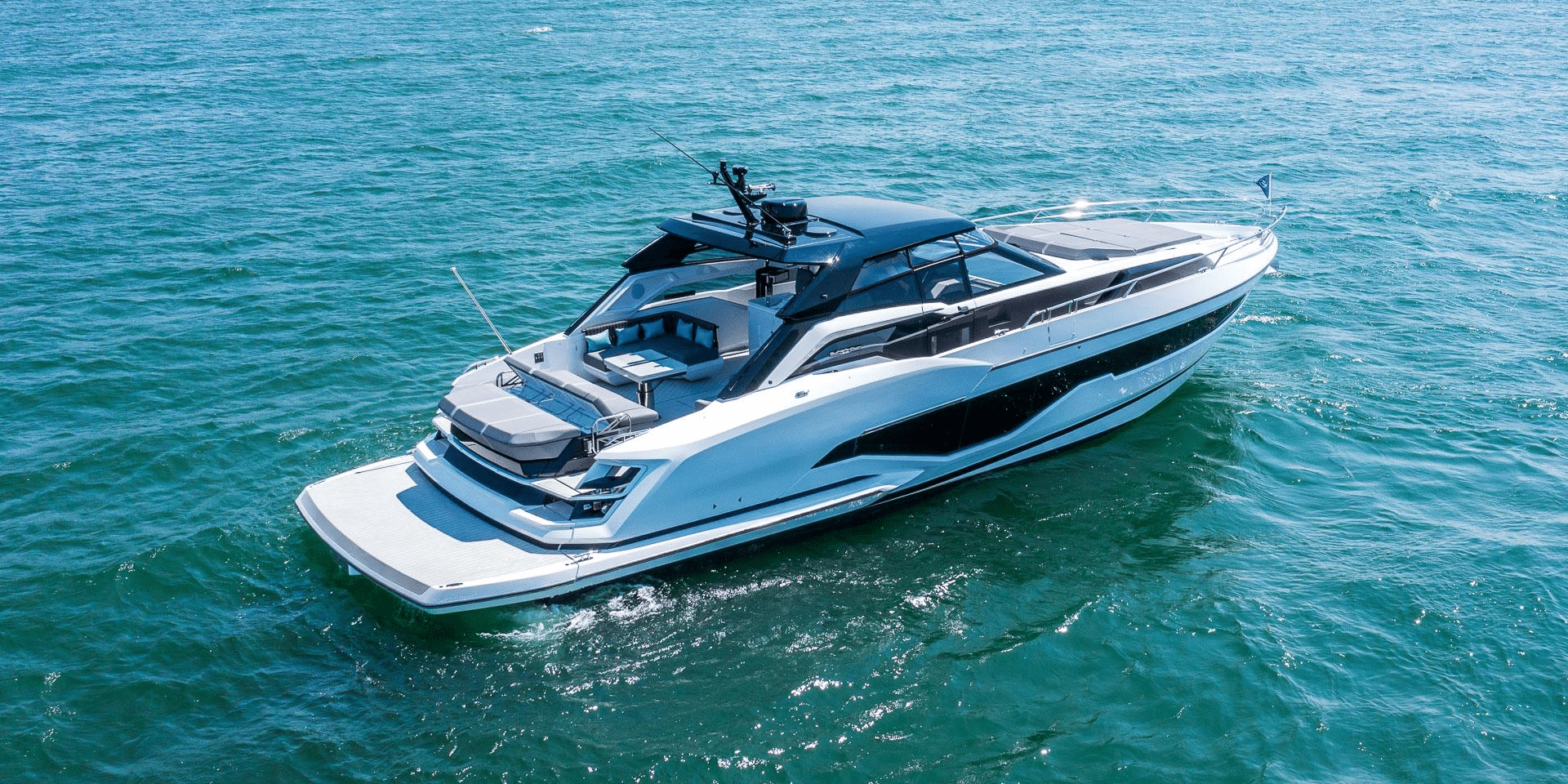
Why Buy a New Boat
Smooth Sailing Ahead: The Pros of Buying a New Boat When it comes to leisure and adventure, few things can rival the thrill of setting sail on your own boat. The wind in your hair, the sun on your face, and the open water ahead – owning a boat is a dream cherished by many….

National Tell a Joke Day | Boating Edition
20 Jokes for Boaters on National Tell a Joke Day August 16th is National Tell a Joke Day. The day is dedicated to sharing laughs and smiles all day with everyone around you, and no one does jokes and puns quite like boaters. Don’t believe us? Just browse through the boat names the next time…

The Purpose of Boat Shoes & Shoe Etiquette
Step Aboard in Style: Boat Shoes and Shoe Etiquette on a boat Picture this: a warm, sunny day, a gentle breeze blowing through your hair, and the soothing sound of waves beneath your feet. You’re on a boat, ready to embark on an unforgettable adventure. But wait, before you set sail, have you considered your…
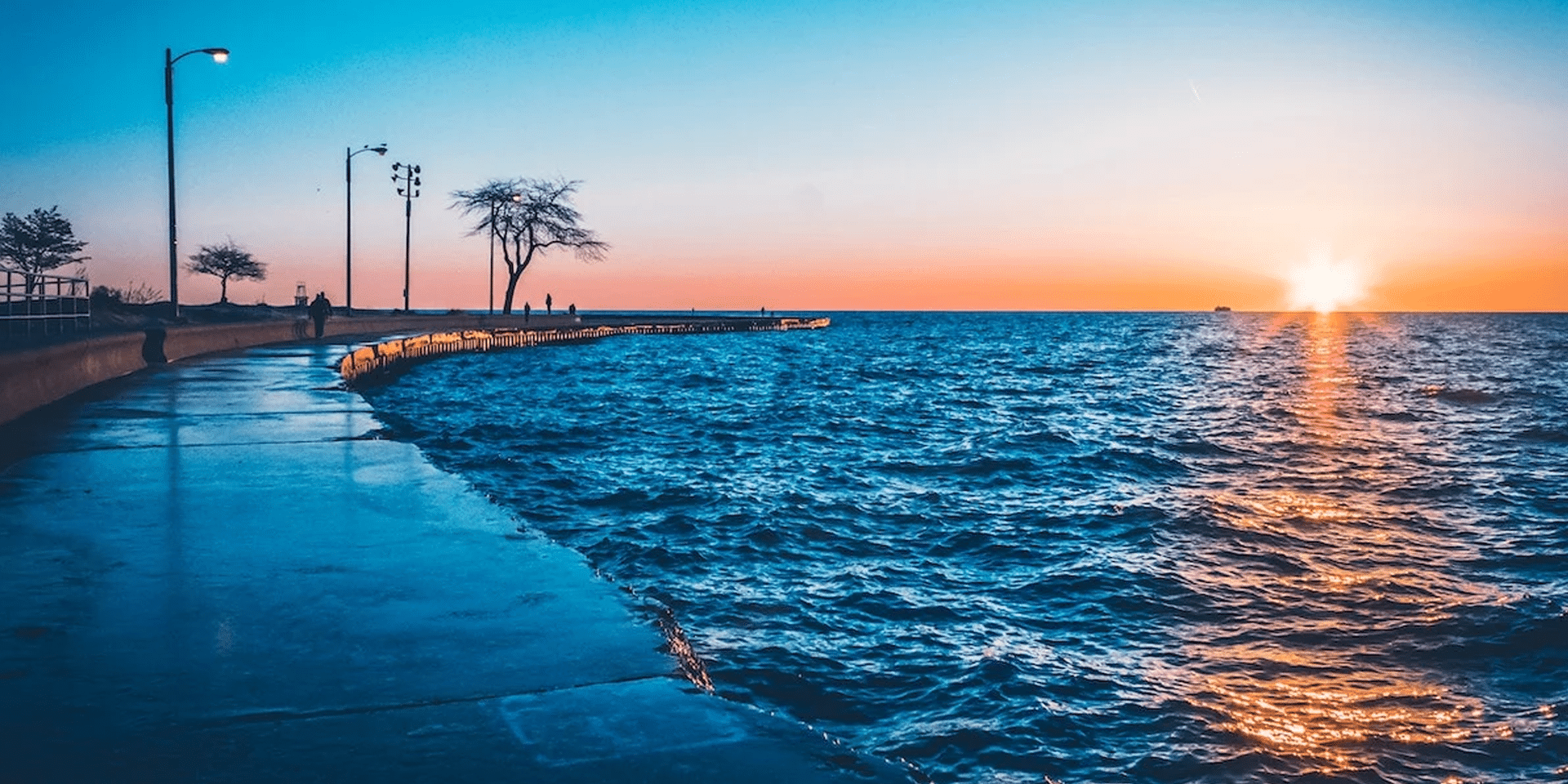
What is the most Visited Great Lake | Lake Michigan
Unrivaled Beauty and Adventure: The Most Visited Great Lake Beckons! Out of the five Great Lakes of North America, Lake Michigan is the most visited due to its popularity as a vacation destination and its numerous attractions. It is ranked the second largest Great Lake according to volume and the third according to its surface…

Drowning is the Silent Killer
Recognizing the Signs and Preventing Tragedy The summer sun beckons us to the refreshing waters of pools, lakes, and oceans, it’s crucial to remember that water can be both a source of joy and danger. We often associate drowning with loud cries for help and thrashing arms. The reality is far different. Drowning is the…
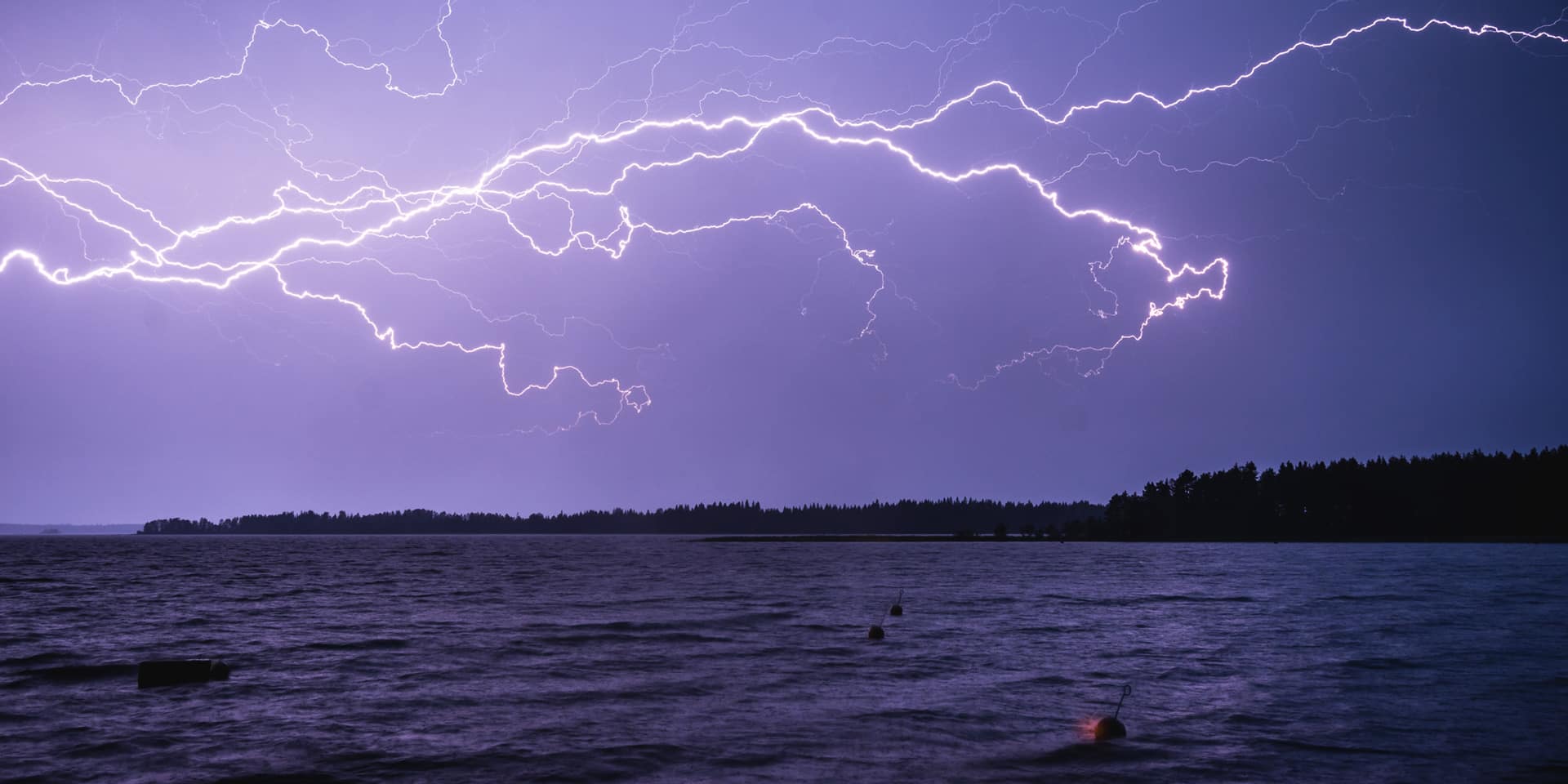
Riding the Storm: How to Protect Yourself from Lightning on a Boat As a boater, encountering unpredictable weather conditions is inevitable. Among the various weather hazards, lightning poses a significant threat to your safety on the water. Understanding how to protect yourself and your fellow passengers from lightning strikes while on a boat is of…
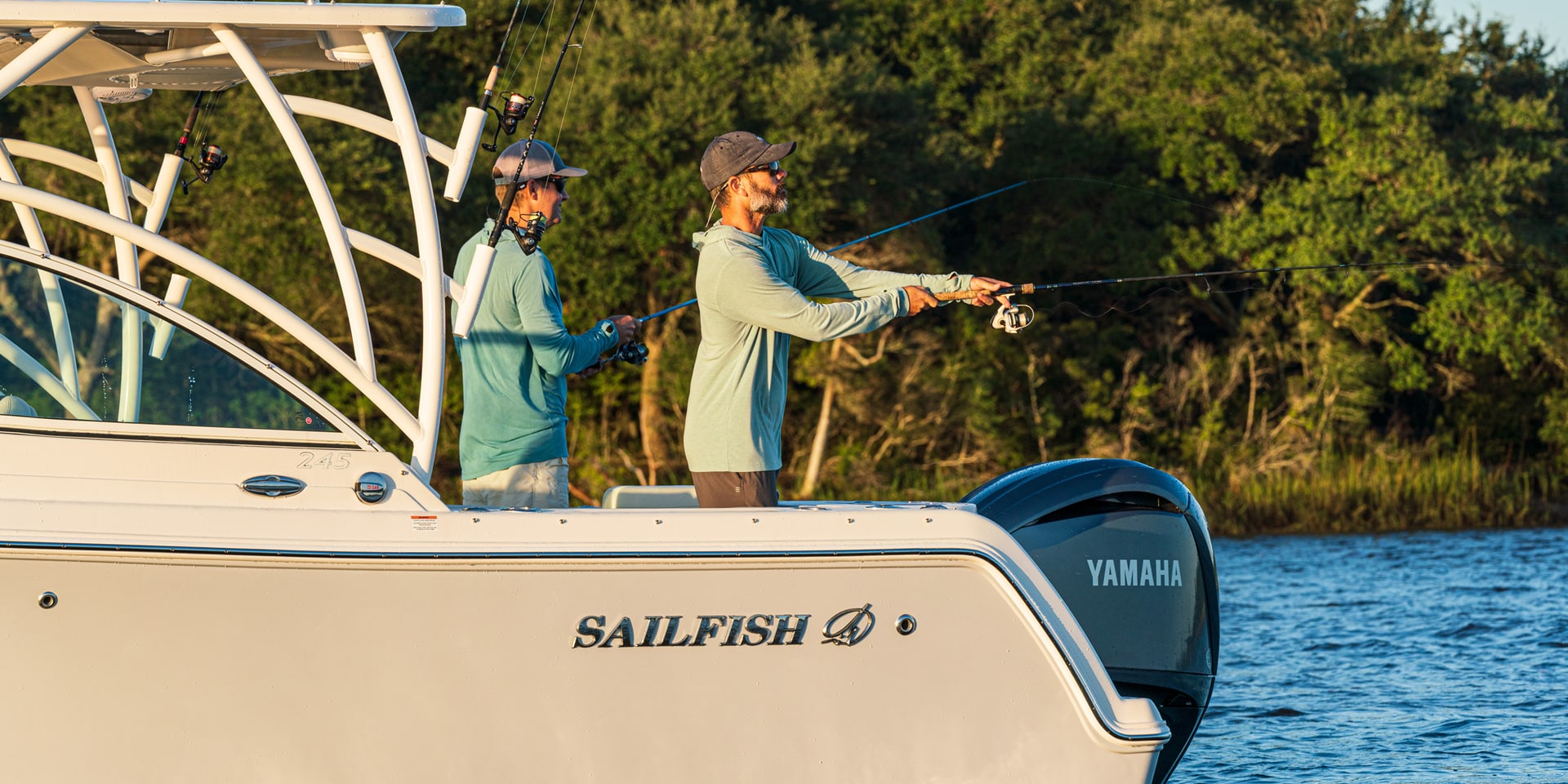
Mental Health Benefits of Fishing
Reeling in Wellness and Well-being In today’s fast-paced world, finding activities that promote mental well-being is essential. Fishing, a beloved pastime for many, offers a unique blend of relaxation, connection with nature, and personal fulfillment. We explore the numerous mental health benefits of fishing and what it can bring to your life. Stress Reduction and…
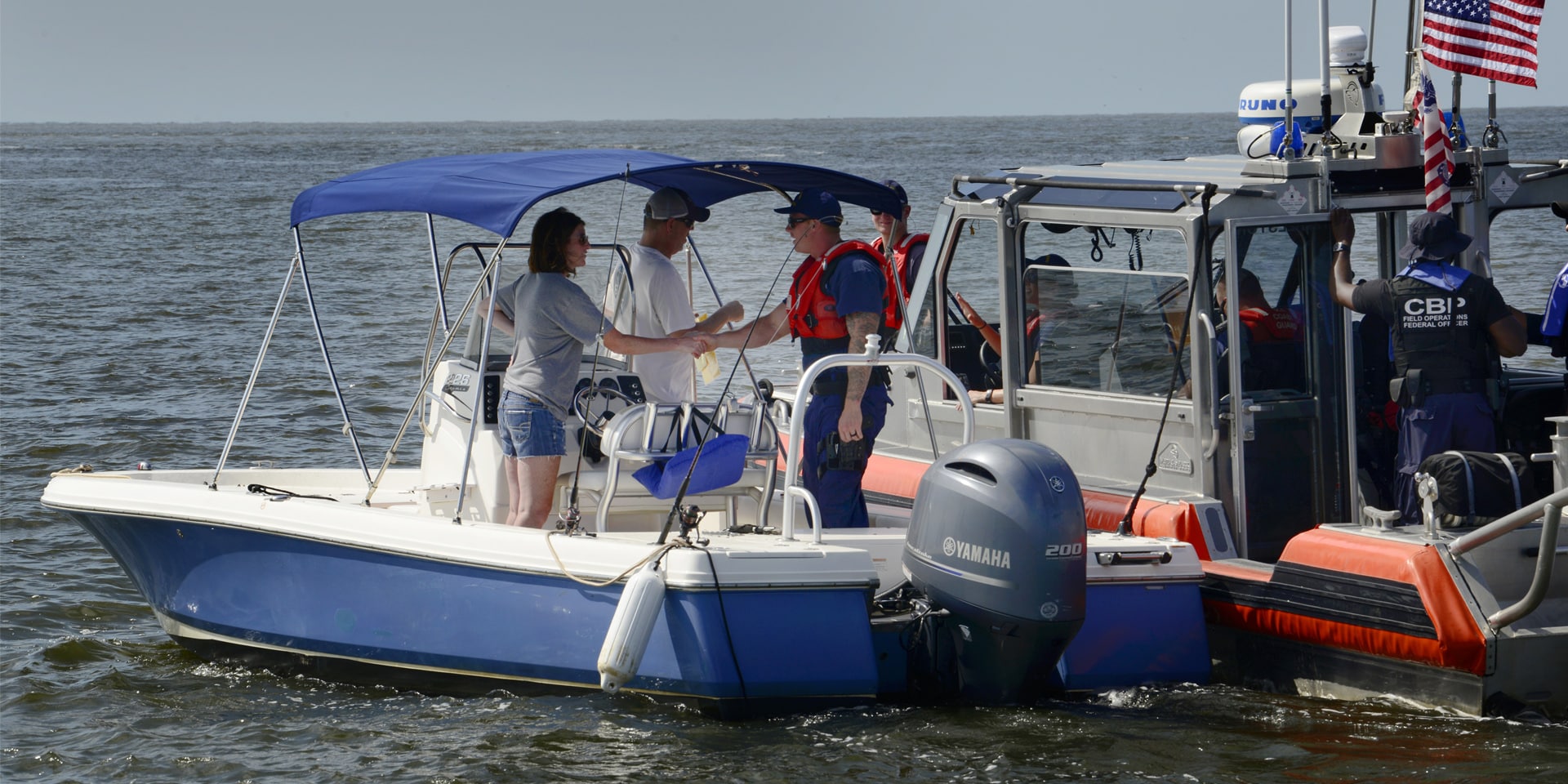
Vessel Safety Check
Ensuring Safe Voyages: What is a Vessel Safety Check and Why You Should Get One A vessel safety check or Vessel Safety Examination (VSE), is a voluntary program offered by the U.S. Coast Guard Auxiliary and the U.S. Power Squadrons. It is a comprehensive inspection to assess the safety and compliance of your boat with…
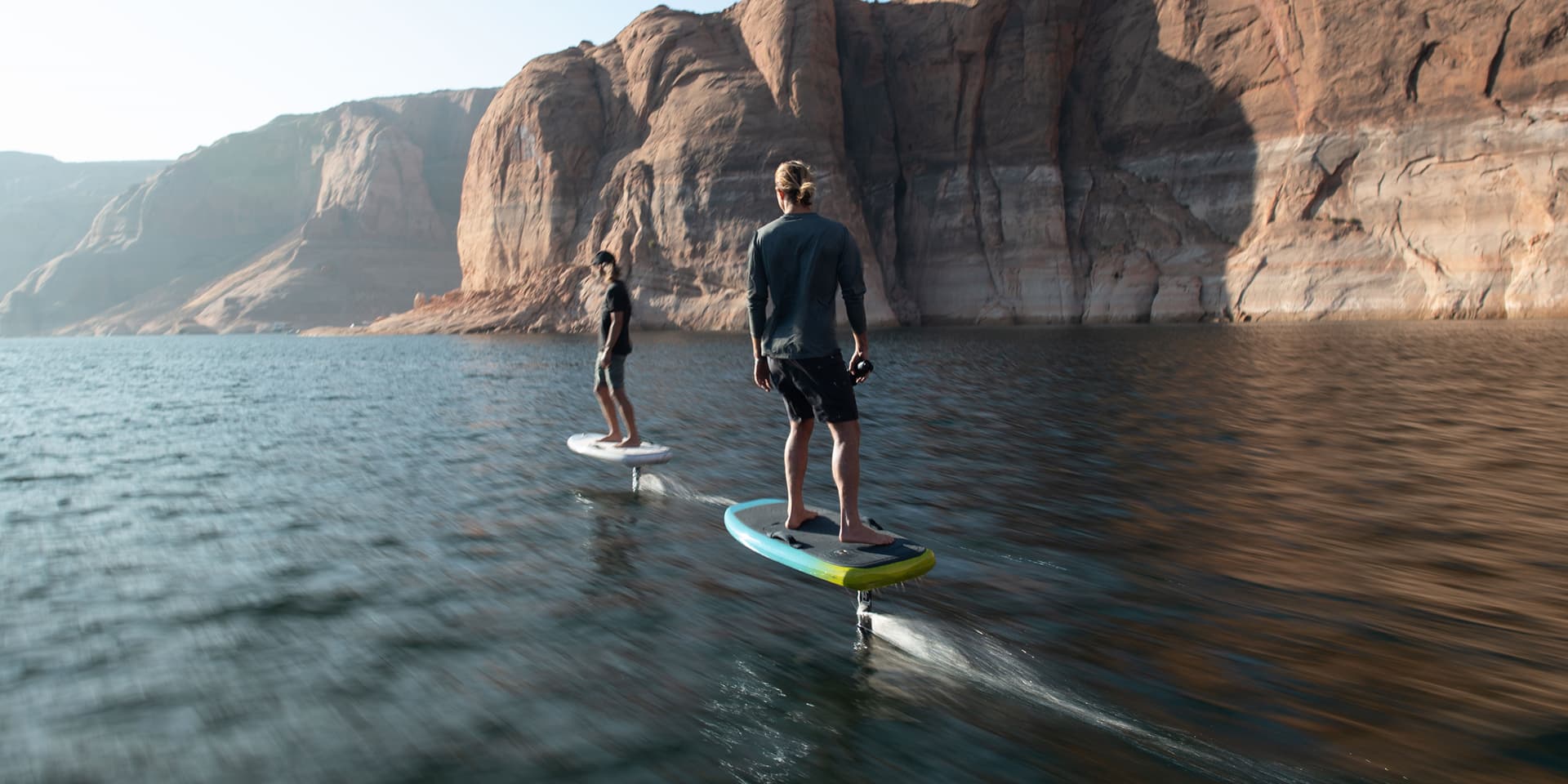
Being Near Water Improves Your Mood
The Healing Power of Water: How Being Near Water Improves Your Mental Health In our fast-paced and often stressful lives, finding solace and tranquility can be a challenge. One of the most effective ways to restore inner peace and improve mental well-being is by spending time near water. Whether it’s a calm lake, a flowing…
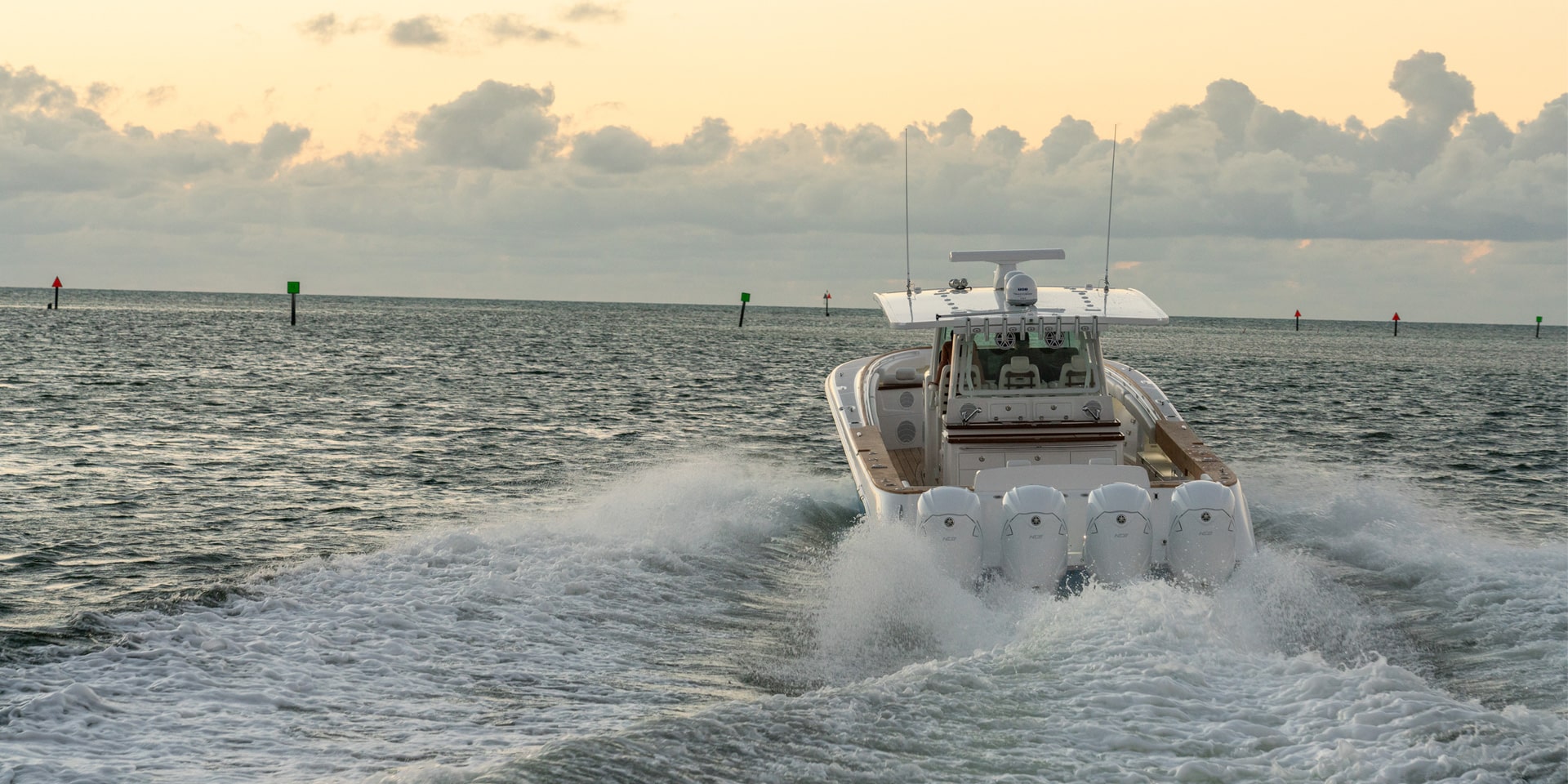
Boating Etiquette
Boating etiquette refers to a set of common rules and practices that boaters should follow while on the water to ensure respect and consideration for others. Here are some tips for good boating etiquette: Be aware of your surroundings: Always keep an eye out for other boats, buoys, and potential hazards in the water. Stay…
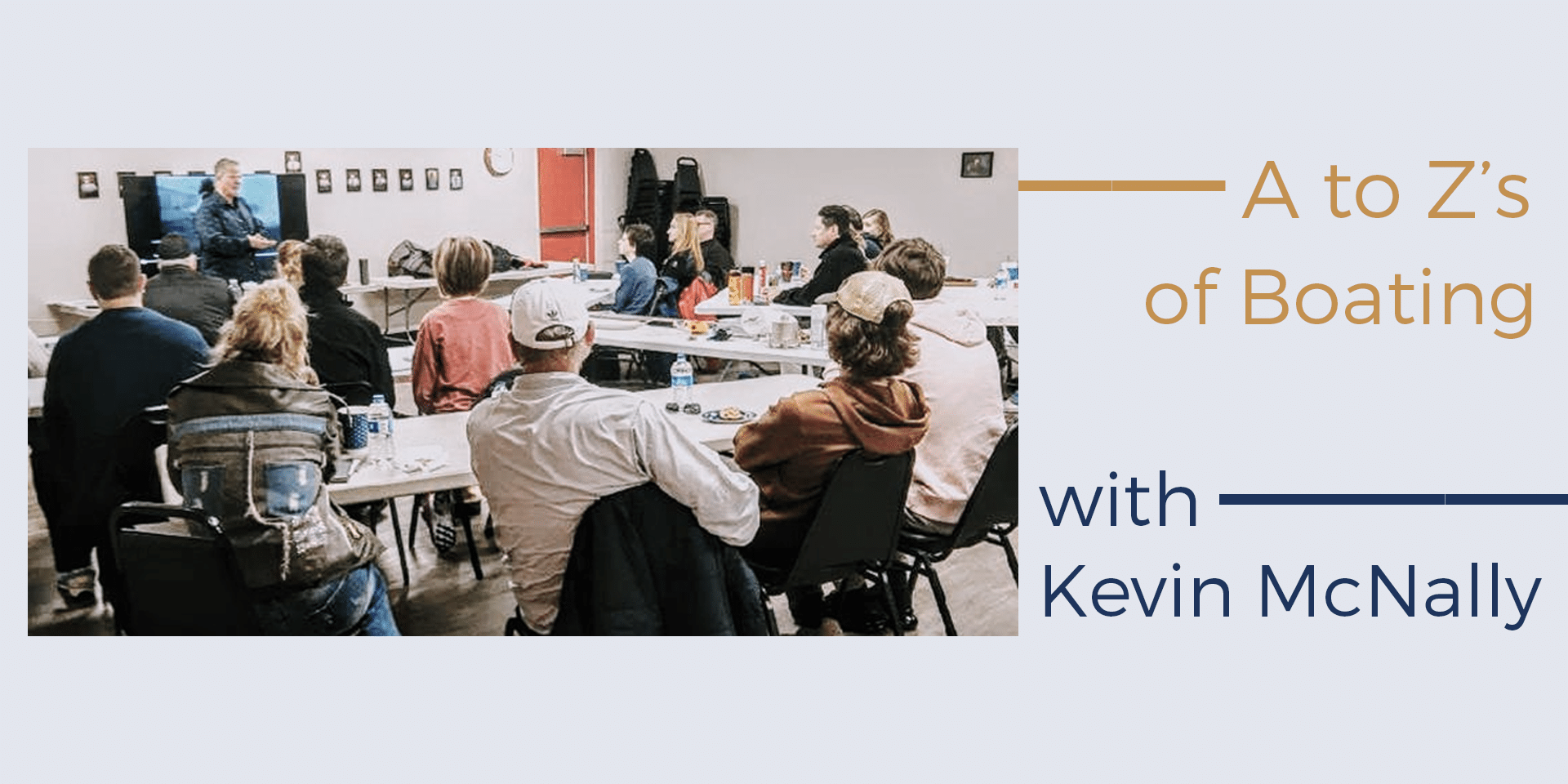
Kevin McNally Teaches Boating Safety Class
Jefferson Beach Yacht Sale’s very own Kevin McNally took to the class room to share his knowledge and expertise on boating safety
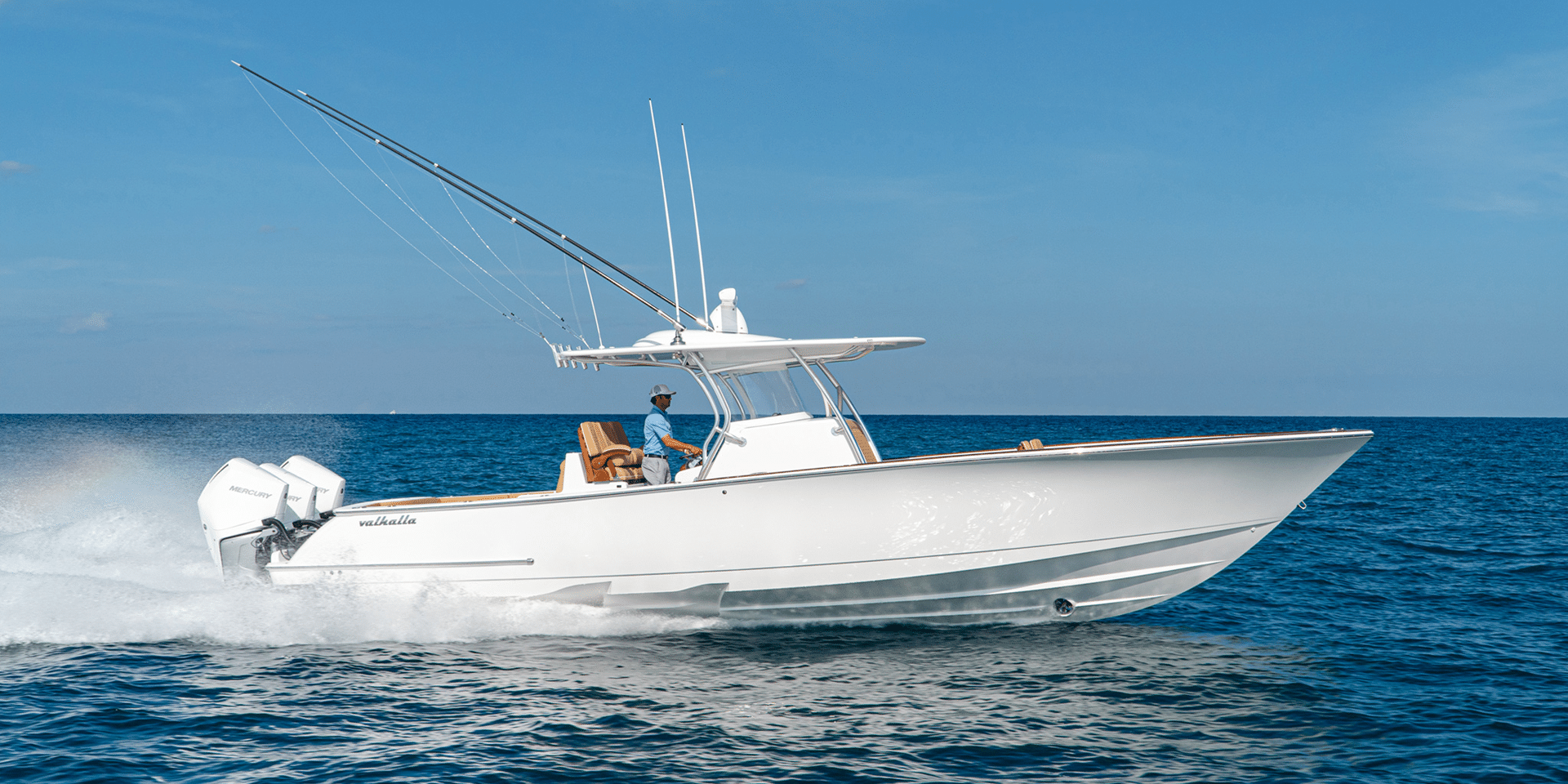
Valhalla Boatworks | Hull Design
Valhalla Boatwork’s innovative hull design takes these dream center consoles to the next level Valhalla Boatworks has created a magnificent lineup of luxury center consoles. The dream V Series lineup consists of five models: The V-33, V-37, V-41, V-46, and the all-new V-55. One of the most important features of these world class models is…
Two Flagships, One Boat Show
Viking introduced two flagships at one boat show with the 90 Sportfish Yacht and the V-55 premiering at the Miami International Boat Show. The Viking Yacht Company is one of the leading semi-custom boatbuilders in the world. Viking held a press conference at the Miami International Boat Show for the world premiere of two new…
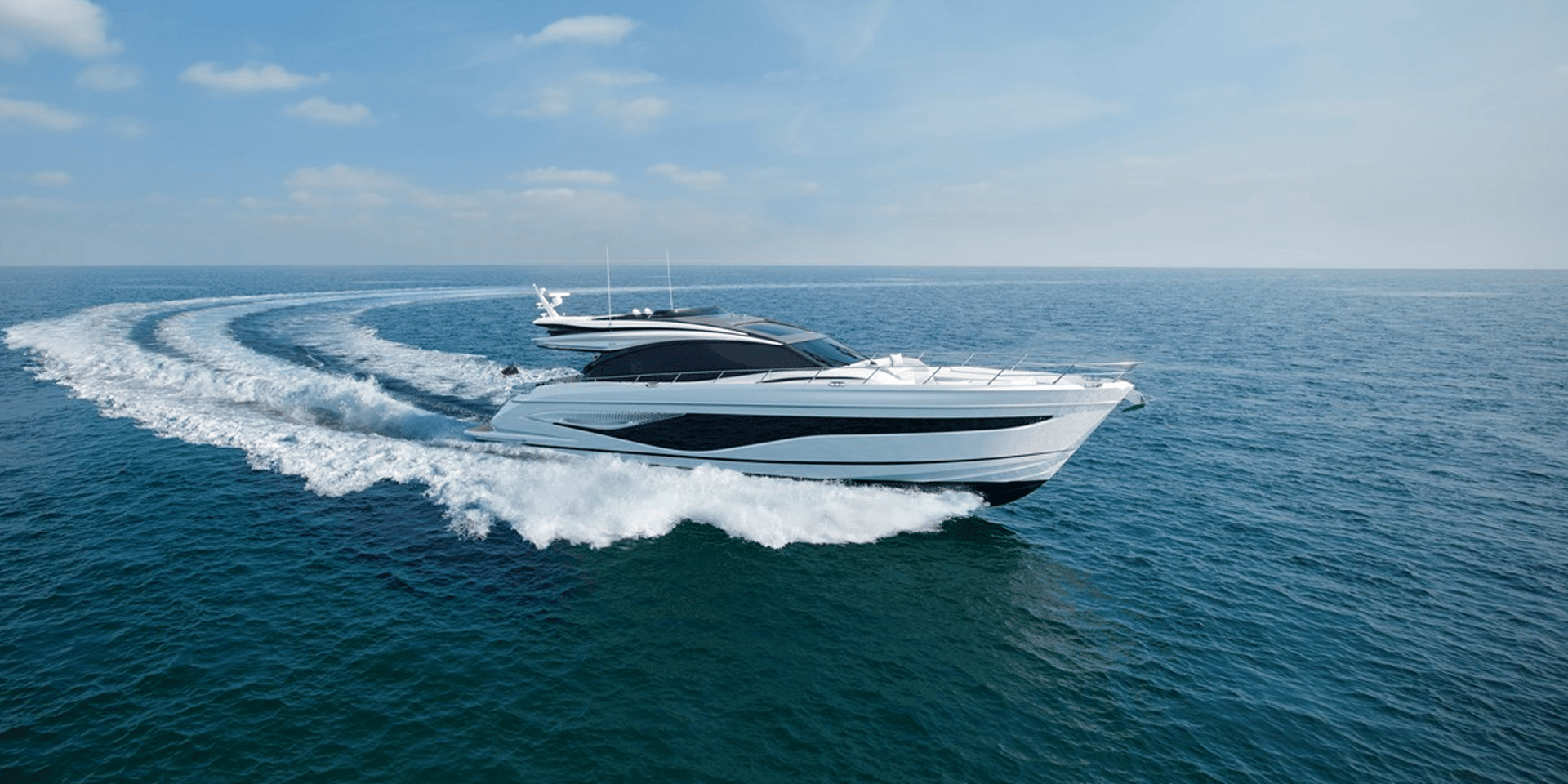
Princess Yachts Unveils the New Princess S72
Princess Yachts officially announced the all-new luxury Princess S72. The latest addition to the S Class range was unveiled at Boot Düsseldorf 2023. Princess Yachts invites eager anticipators to explore the all-new Princess S72. The new model was unveiled at the 2023 Boot Düsseldorf show. The S72 is the latest addition to the stunning S…
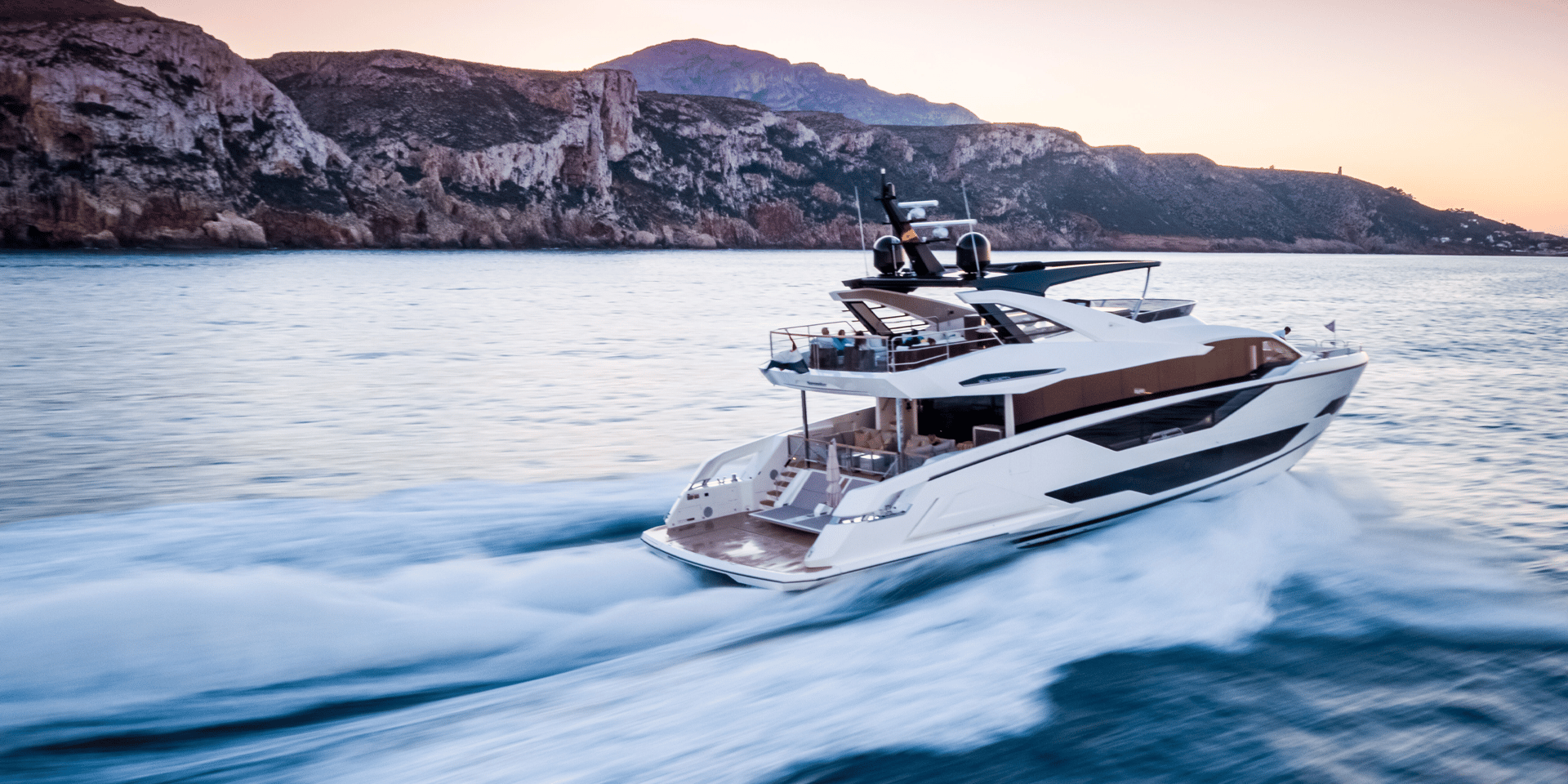
Sunseeker 90 Ocean Best Custom Yacht
The Motor Boat Awards has recognized the Sunseeker 90 Ocean for its, now, third recent award. During boot Düsseldorf 2023, the Sunseeker 90 Ocean Yacht received its third award as the best “Custom Yacht” at the Motor Boat Awards. The annual awards aim to celebrate the very best that the leisure boating industry has to…

Boaters Should Observe the Weather
Why Boaters Should Observe the Weather: The Best Apps to Keep You Safe When it comes to boating, understanding and monitoring the weather is an essential aspect of safety and enjoyment on the water. Mother Nature can be unpredictable, and being aware of changing weather conditions can help boaters avoid potential hazards and make informed…
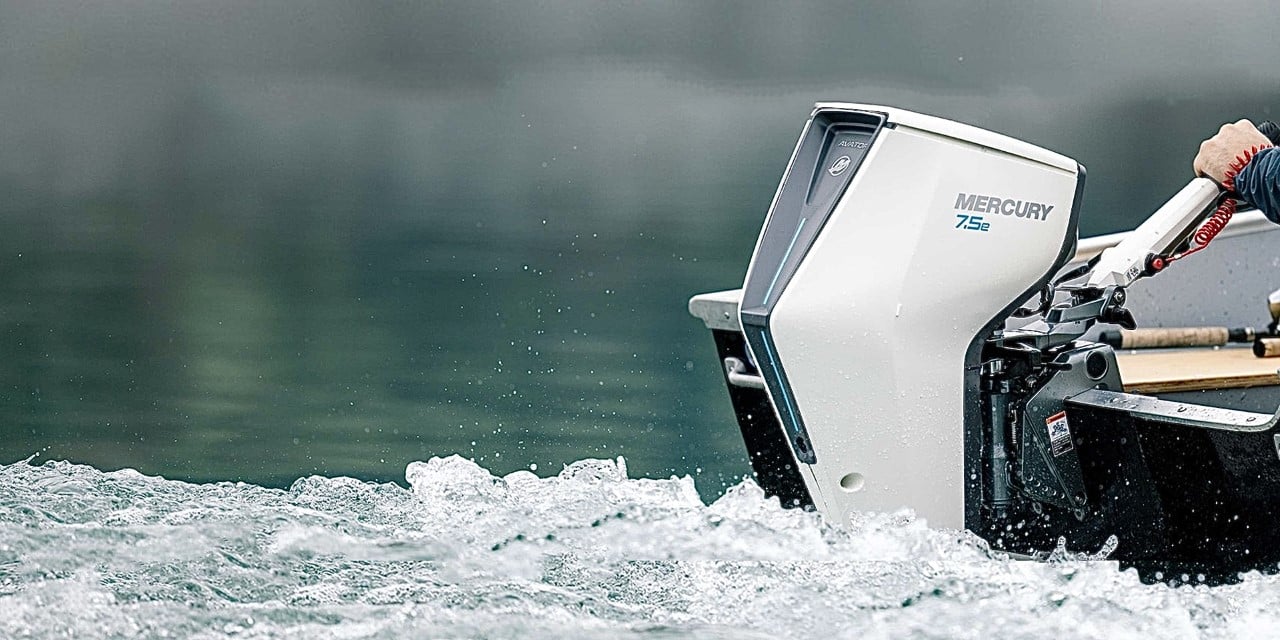
The Avator 7.5e Electric Outboard
Mercury Marine seeks to expand boating access with smart battery technology. Introducing the Avator 7.5e electric outboard, meant to create ease of use and connectivity. Mercury officially introduced the Mercury Avator 7.5e electric outboard. The announcement occurred at the 2023 Consumer Electronics Show in Las Vegas. Avator is Mercury’s next step forward in marine innovation….
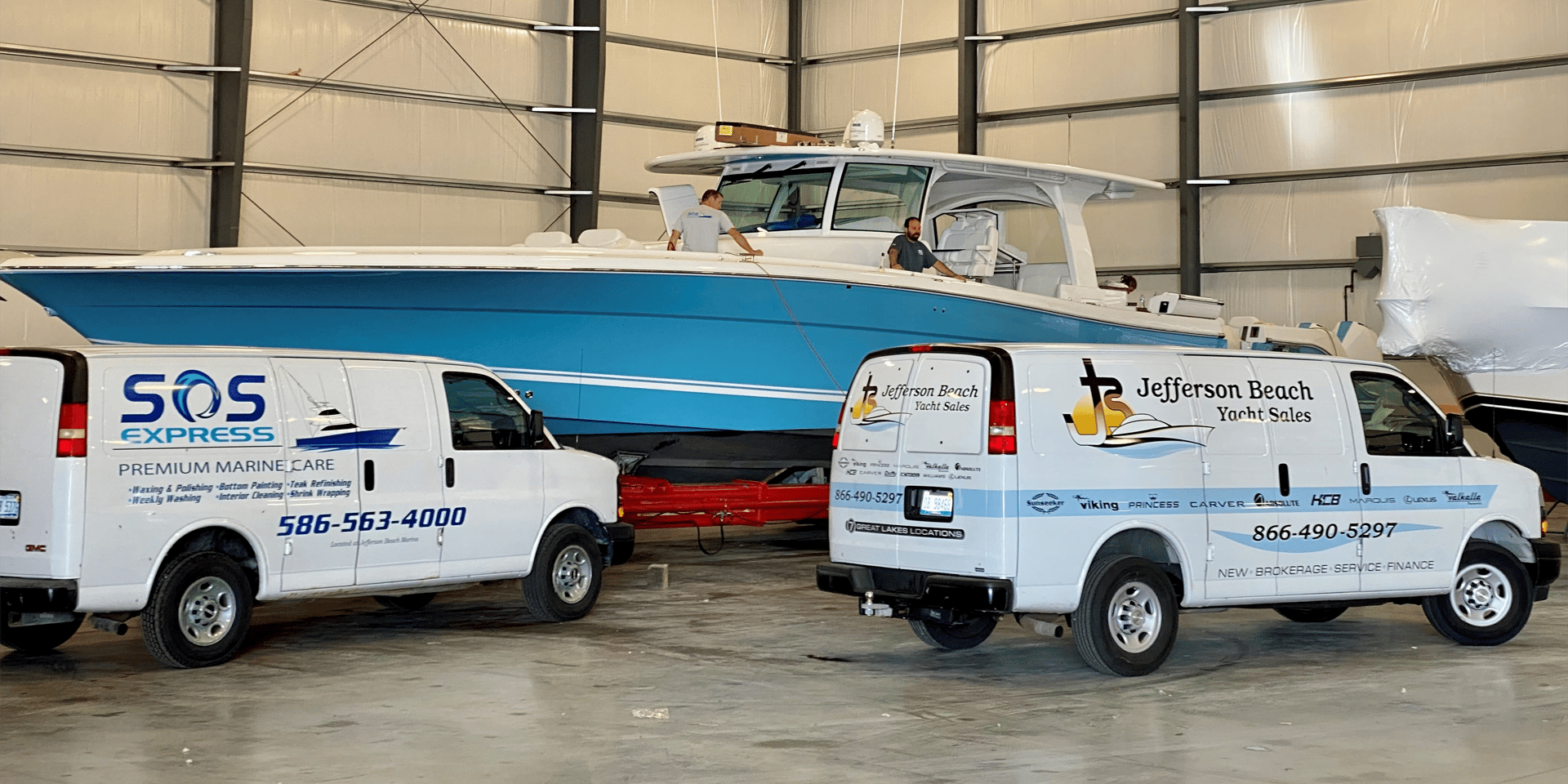
Winter Boat Maintenance PUNCH List
Have you submitted your winter boat maintenance PUNCH list? A punch list is a general list of boat maintenance items that need annual service. The best time to address this kind of work is during the winter months. It is however, important to get requests to your dealer or service provider early on. Furthermore, there…
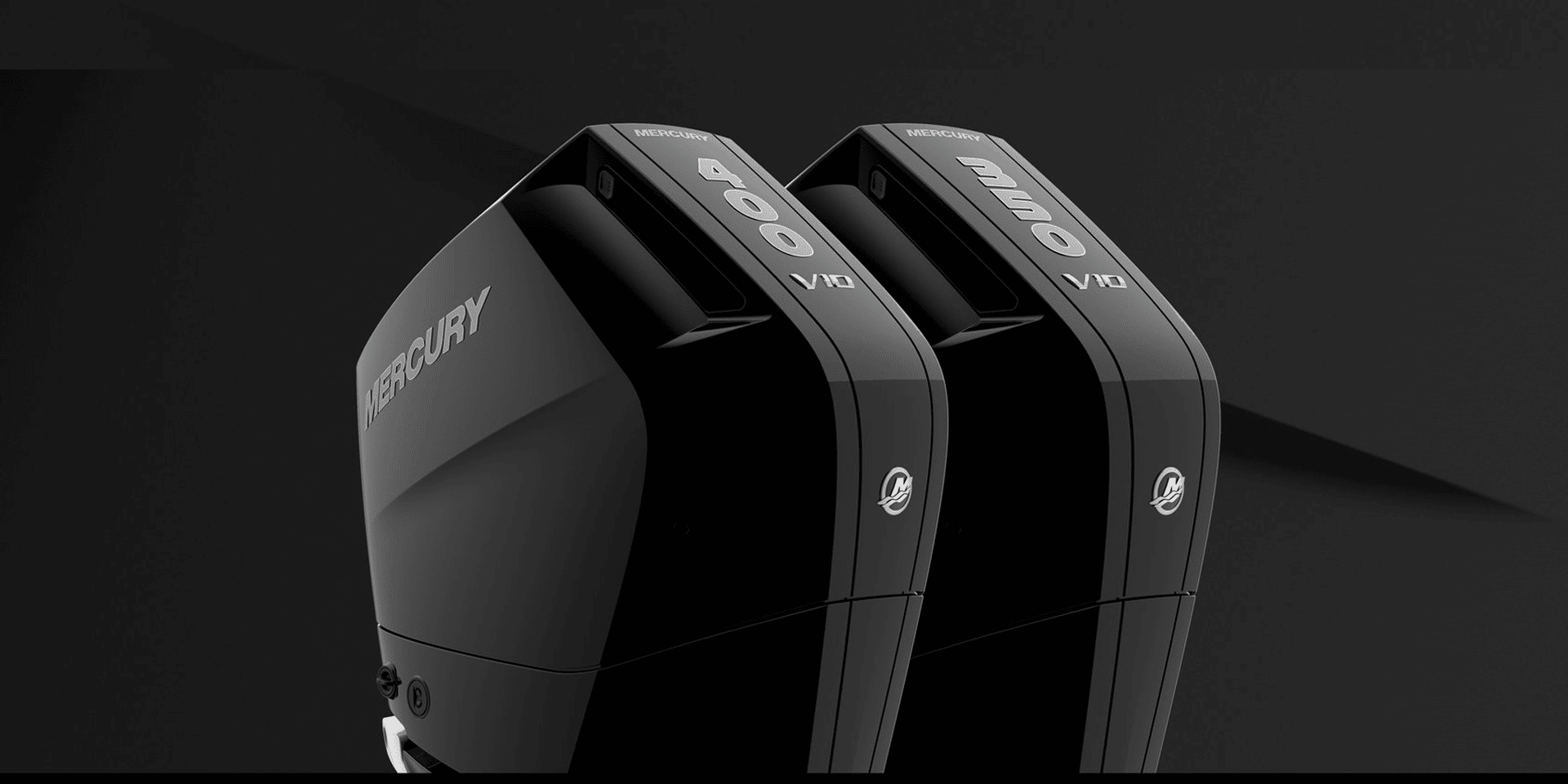
The Industry’s First V10 Outboards
Mercury Marine is eager to announce to the marine industry the all new 350 and 400HP Verado engines. The first V10 outboard engines. Mercury Marine is a division of Brunswick Corporation (NYSE: BC). The brand is ready to unveil the industry’s first ever V10 outboards. This news came with the official launch of its all-new…
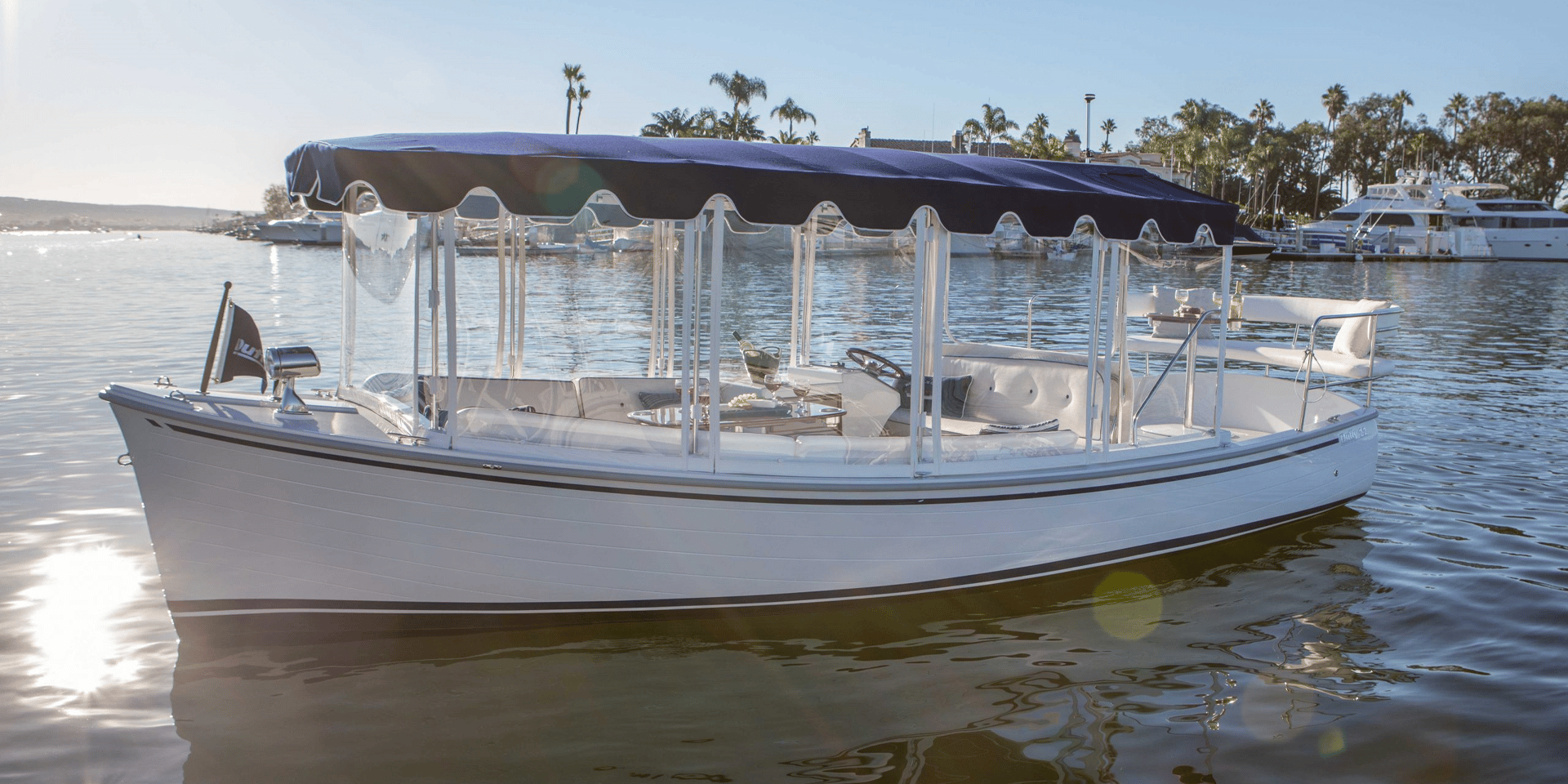
Duffy Is A Fully Electric Boat
Unplug, Untie, and Unwind A fully electric boat, Duffy’s are the first and finest of their kind dating back to the early launch in the 1970s. The brand is widely recognized for its premier cruisers that are electrically powered. The Duffy Motto – unplug, untie, and unwind. Easy Turns Duffy Electric Boats are known to…
New Absolute 52 Fly is the “Absolute Direction”
The 2023 new Absolute 52 FLY is the latest model in the Flybridge range, and it is a revolutionary yacht. This 52 possesses Absolute’s state-of-the-art design and engineering. It presents the brand’s extraordinary livability in this more compact dimension. She is an innovative work of marine architecture. She stands out as a dazzling highlight even…
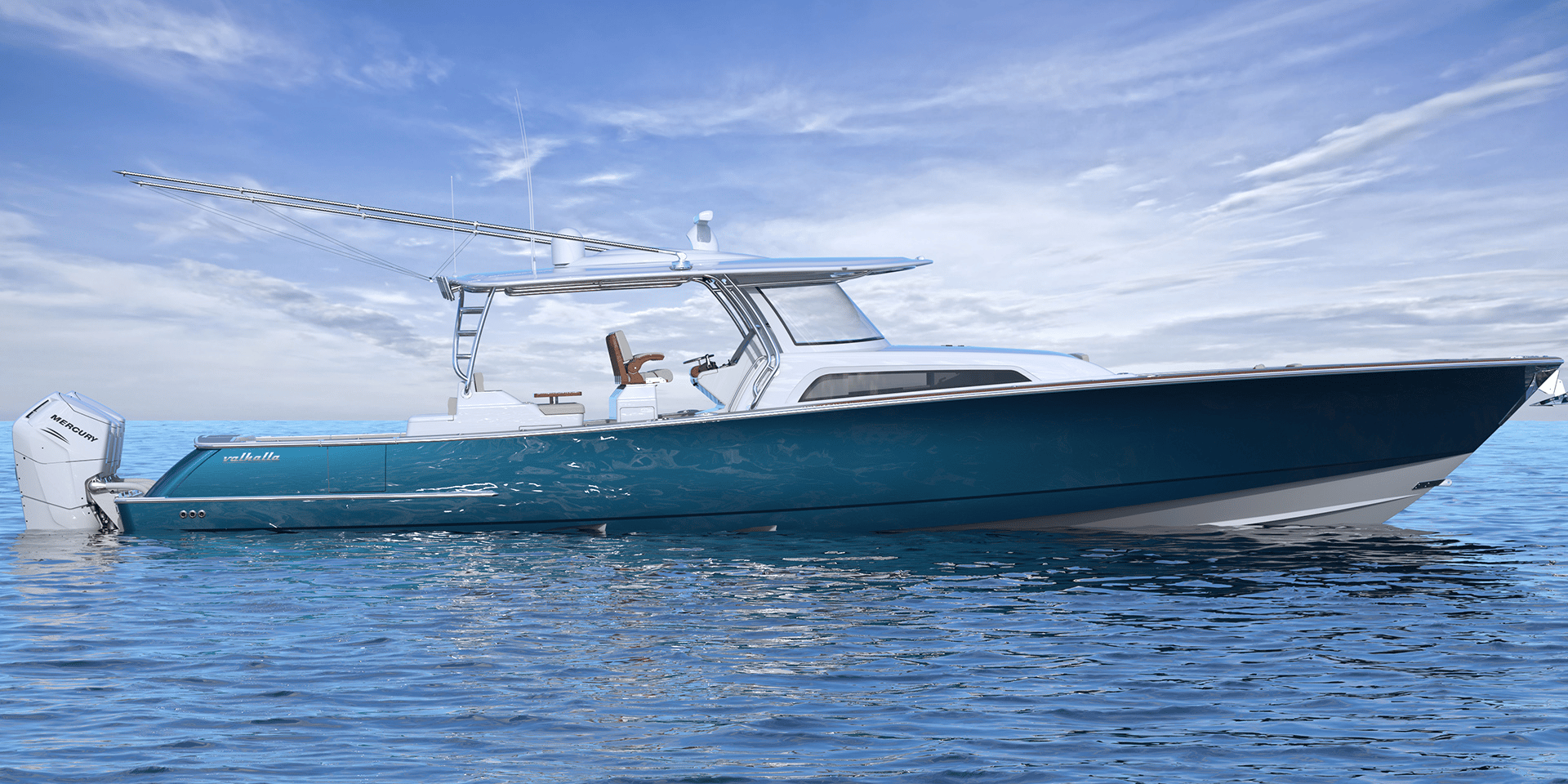
Valhalla Boatworks V-55 The New Flagship
Earlier this year, Valhalla announced its latest addition to the V series. This new flagship, the Valhalla Boatworks V-55 is set to make its world debut at the Viking Yachts and Valhalla Boatworks VIP event in February. What to Expect The V-55 will be the largest center console Valhalla Boatworks has ever built. According to…
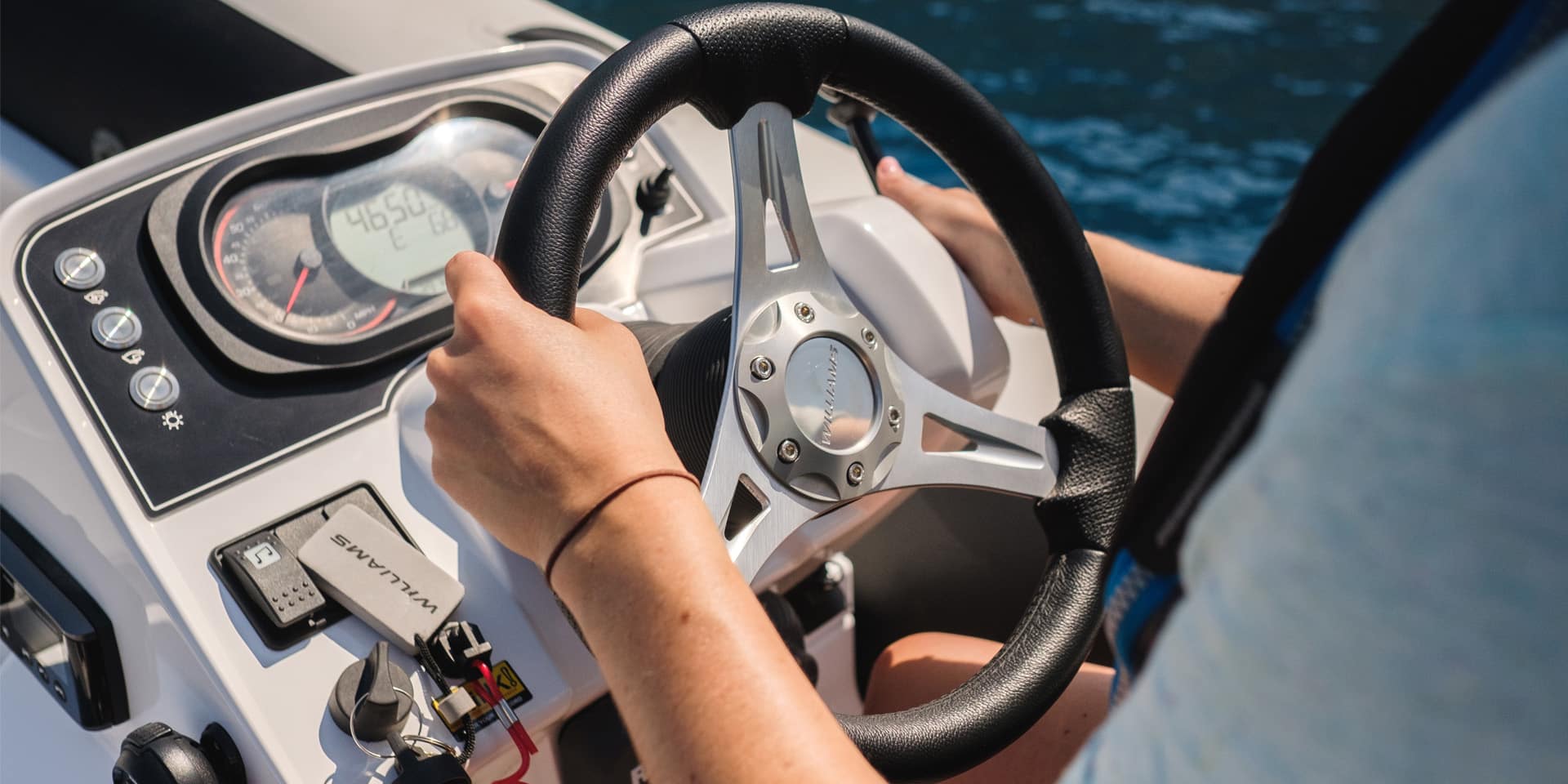
How to Drive a Jet Tender
Williams Jet Tenders claims the title of the original tender builders. It all started in 1996 with two brothers, John and Matthew Hornsby. Today, the brand is globally recognized for its creation of the world’s best tenders. For new owners or curious inquirers, how to drive a jet tender for the first time can seem…

Viking Makes Valhalla Boats
From the legendary Viking Yachts comes a new breed of center console that sets revolutionary standards Viking makes Valhalla boats and proudly introduced Valhalla Boatworks in 2019. Through this revolutionary company, Viking designs and builds high-performance center consoles. These center consoles maintain the same Viking quality, craftsmanship and expertise. Such expertise has led the marine…
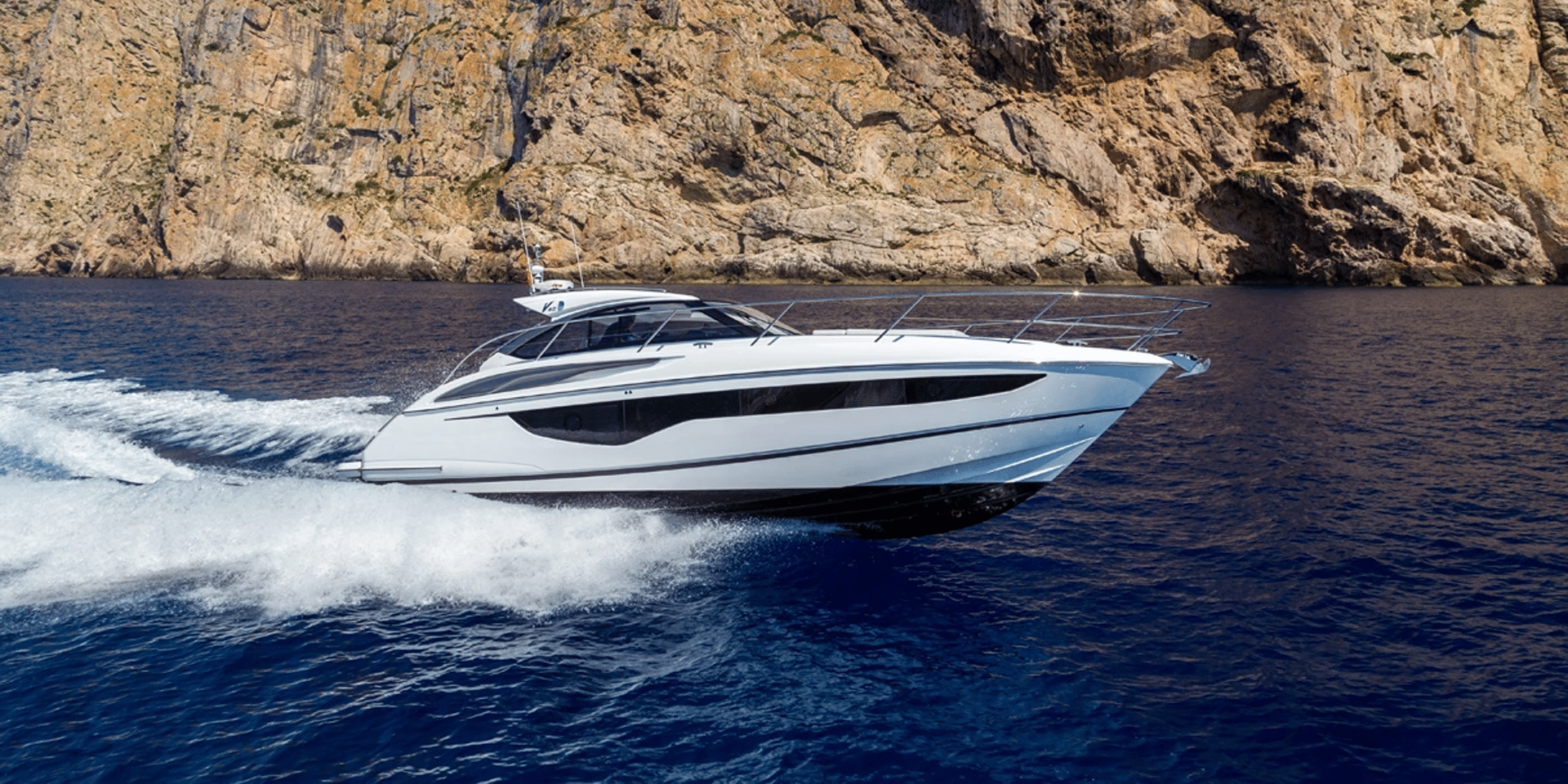
The Smallest Princess Yacht
What is the smallest Princess Yacht in its size range? Princess Yachts is a prestigious boat builder established in the mid 1960s. Princess is located in Plymouth England where it manufactures some of the world’s most technically advanced yachts. The brand is renown for its culture of innovation, quality, and beauty. The boat builder currently…
The Largest Princess Yacht
What is the largest Princess Yacht in its size range? Princess Yachts prides themselves in creating prestigious yachts full of top of the line luxuries and innovative creations. The boat builder currently has an impressive five class range consisting of its world famous X, Y, F, S, and V class. The question remains, which of…
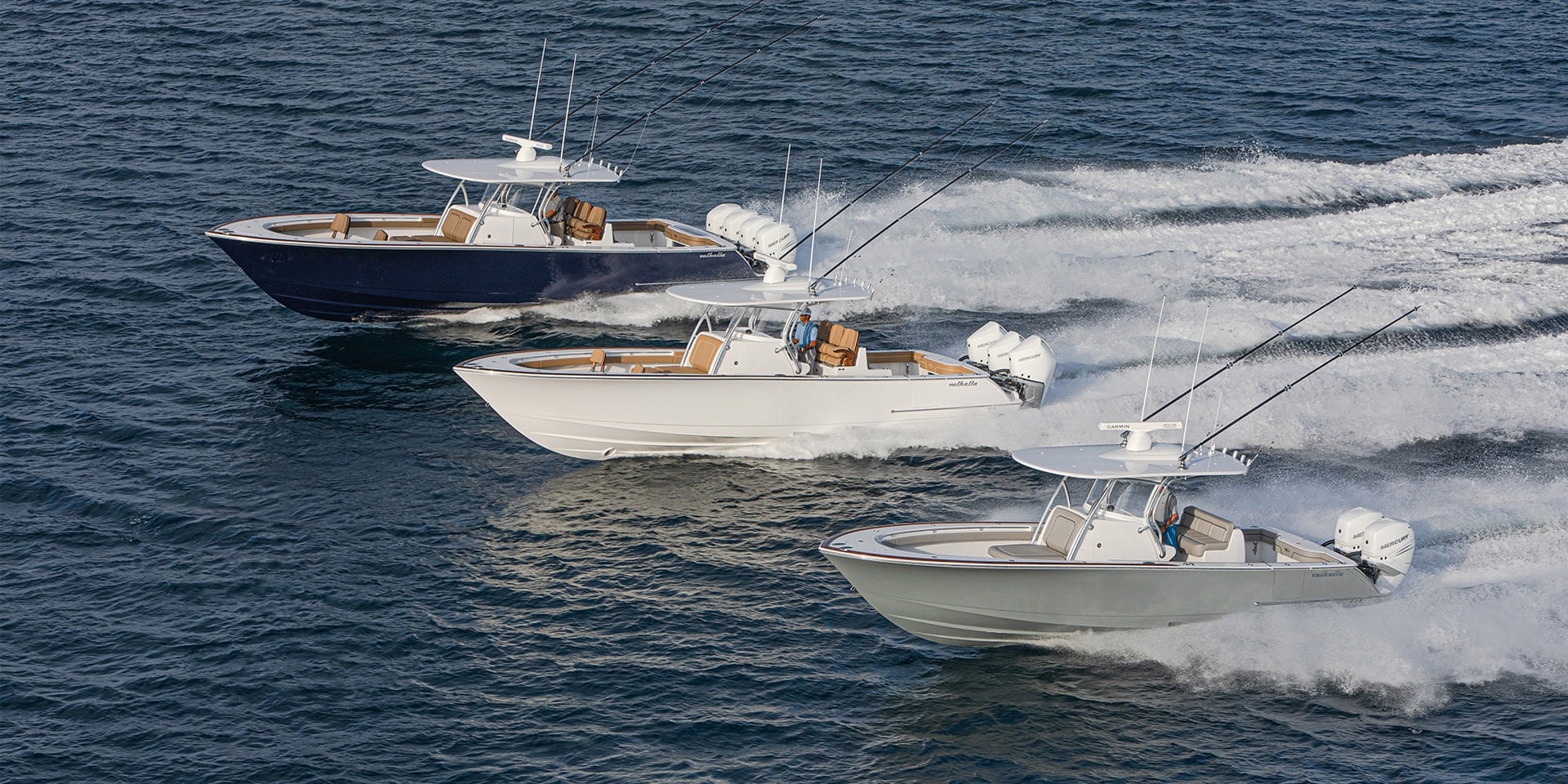
Valhalla Delivered Over 250 Boats
Valhalla Showcases Excellence with V41 Delivery. The company shows off the new Gap Tower beauty before its recent delivery to a satisfied customer.
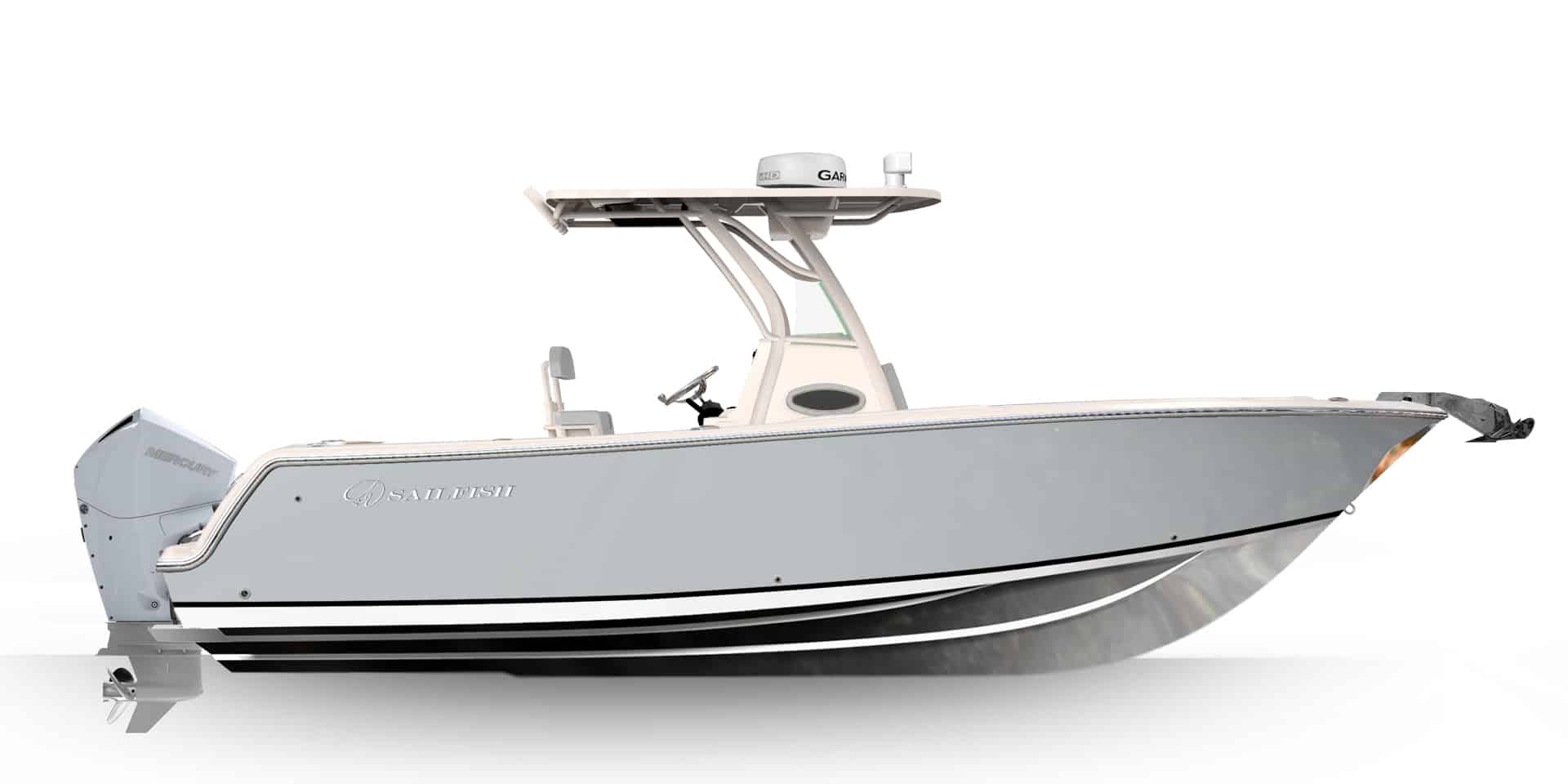
Sailfish Uses Sailtech Construction
Sailfish uses Sailtech Construction. A whole of a product is the sum of its parts. In Sailfish’s case, the result is far greater than the sum of its component parts. Sailfish uses Sailtech construction. Each designed step of manufacturing reinforces, layers and strengthens the whole. The materials that do this provide a compounded interest on strength…
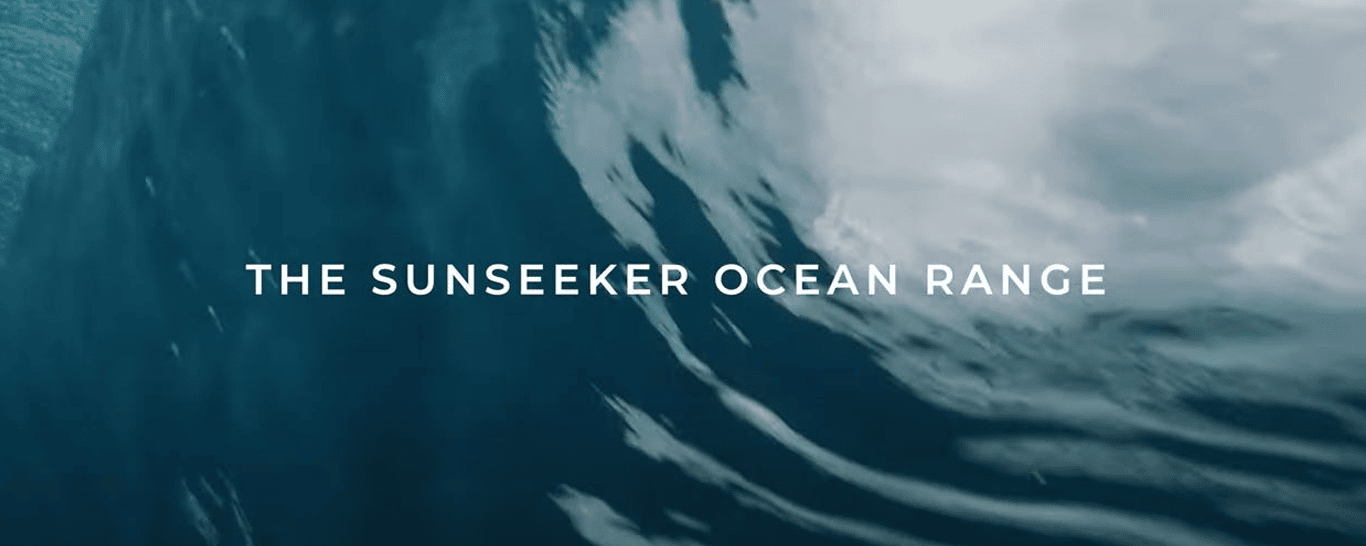
Introducing the New Sunseeker Ocean Range
Sunseeker introduced two new models at the Cannes Yachting Festival. These two new models result in the introduction of the new Sunseeker Ocean Range. At the Cannes Yachting Festival, Sunseeker made several exciting announcements. Sunseeker introduced two new models including the Ocean 156 and Ocean 182. Each of these models has a unique new naming…
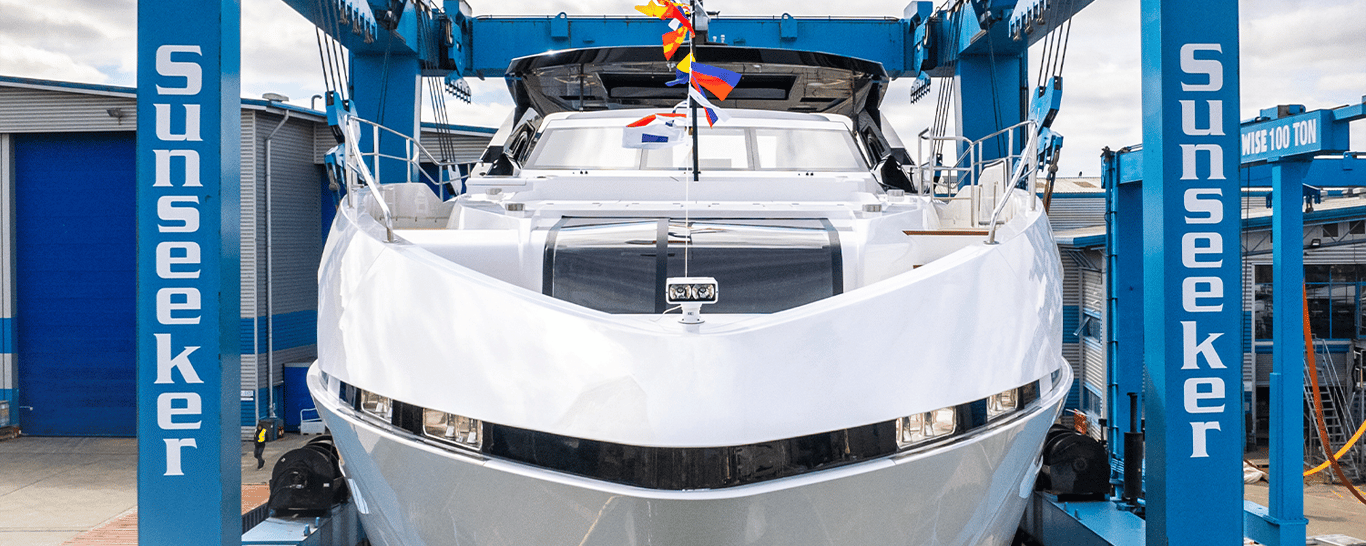
Sunseeker 100 Yacht is Awarded ‘Best Exterior Design’
The Sunseeker 100 Yacht took ‘Best Exterior Design’ at the World Yacht Trophies The World Yacht Trophies is one of the most prestigious awards in the yachting industry. Such awards allow yachts recognition around the world. This year’s awards marked a success for the Sunseeker 100 Yacht. The exceptional Sunseeker won the ‘Best Exterior Design’…

New “Coolest Black Family” Series
Ebony and Discover Boating launch new “Coolest Black Family” series celebrating families who enjoy life on the water. EBONY and Discover Boating are bringing the stories of four black families to life. The “Coolest Black Family” series celebrates African American families enjoying life on the water. Each family shares their unique perspectives on travel and…

JBYS Earned Princess Exceptional Sales Achievements
Erik Krueger and Ron Silvia recently attended the Princess Yachts Dealer Meeting. While attending, Jefferson Beach Yacht Sales received two Princess Exceptional Sales Achievements Awards. We are happy to present to you: #2 in the United States for Sales Award of Excellence awarded to Ron Silvia. #2 in the United States for Dealership Award of…
Team JBYS at Boyne Thunder
Boyne Thunder is an annual poker run, not a race, where the winner has the best hand. The run takes place on the shores of Lake Charlevoix and Lake Michigan and is hosted by Boyne City Main Street. This one-of-a-kind event includes power boaters from around the country and supports local charities in the community. This year, Jefferson Beach Yacht Sales was a sponsor and also ran in this unique boating event with our 2022 HCB 42 Lujo.
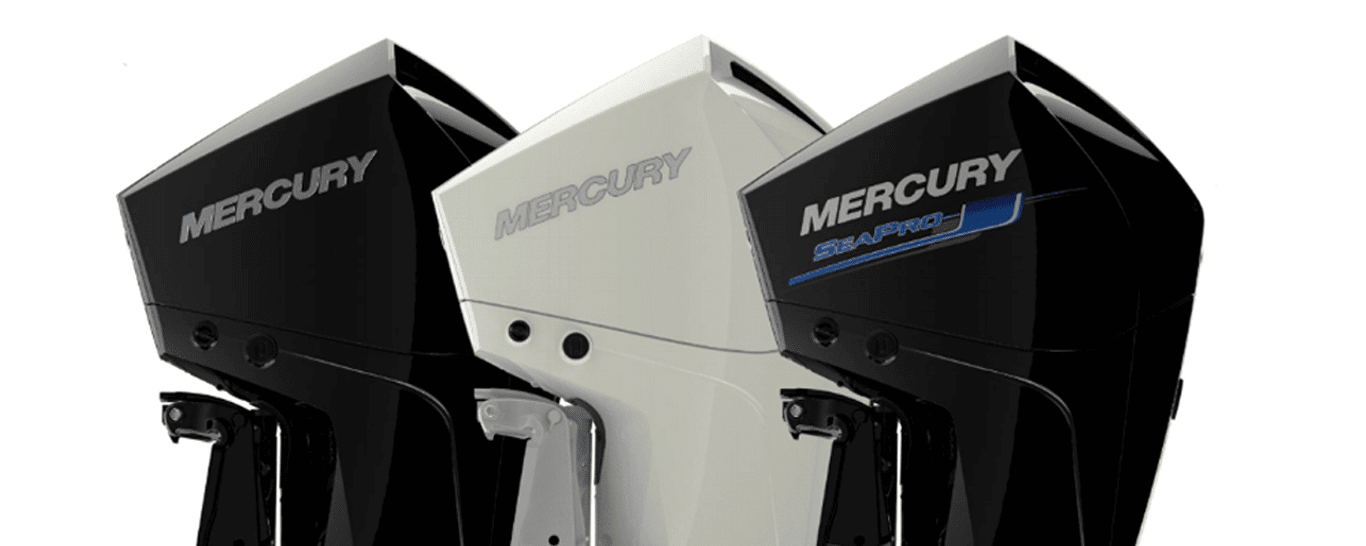
Mercury’s New Four Stroke Outboards
Mercury Marine introduces new 25 and 30hp four stroke outboards platform – the lightest and fastest 3-cylinder engines in class Mercury Marine, a division of Brunswick Corporation (NYSE: BC), today introduced its next generation of 25 and 30hp four stroke outboards – engineered from the ground up to be lighter, faster and easier to operate and…
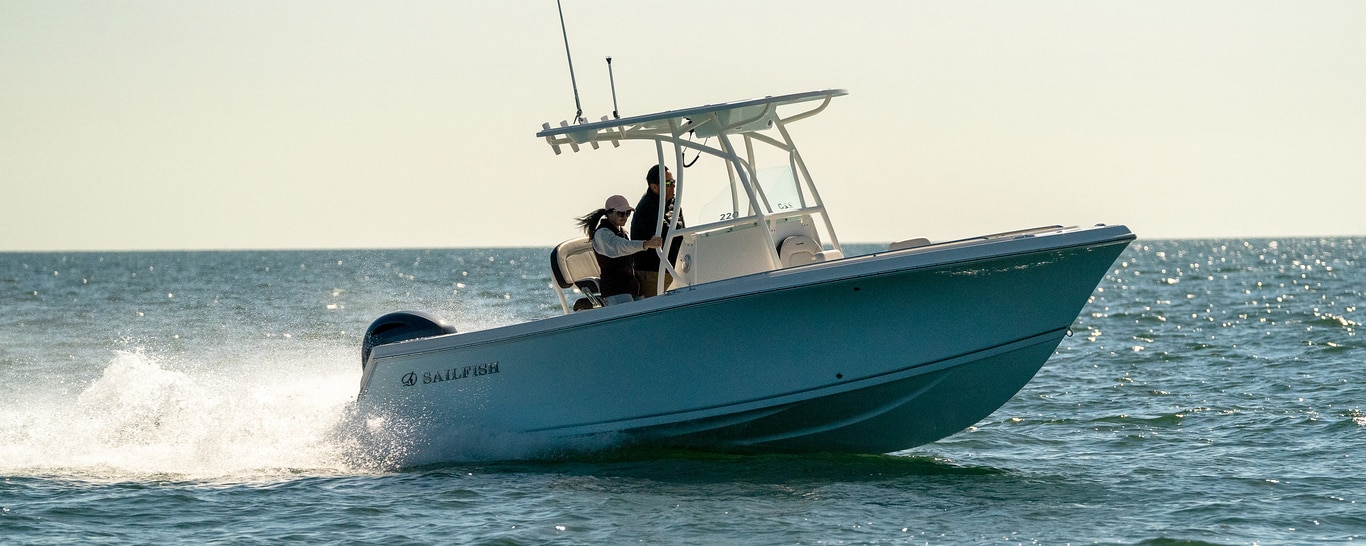
Positive Trim, Tab Down, and Throttle
How to get the most from a Sailfish VDS Hull using three easy steps It is often said (mostly from competitive owners) that Sailfish Boats have a “wet ride”. This is because of the operational differences required in the Variable Degree Stepped hull versus a traditional vee hull bottom. A traditional vee hull performs well in many conditions, slicing…
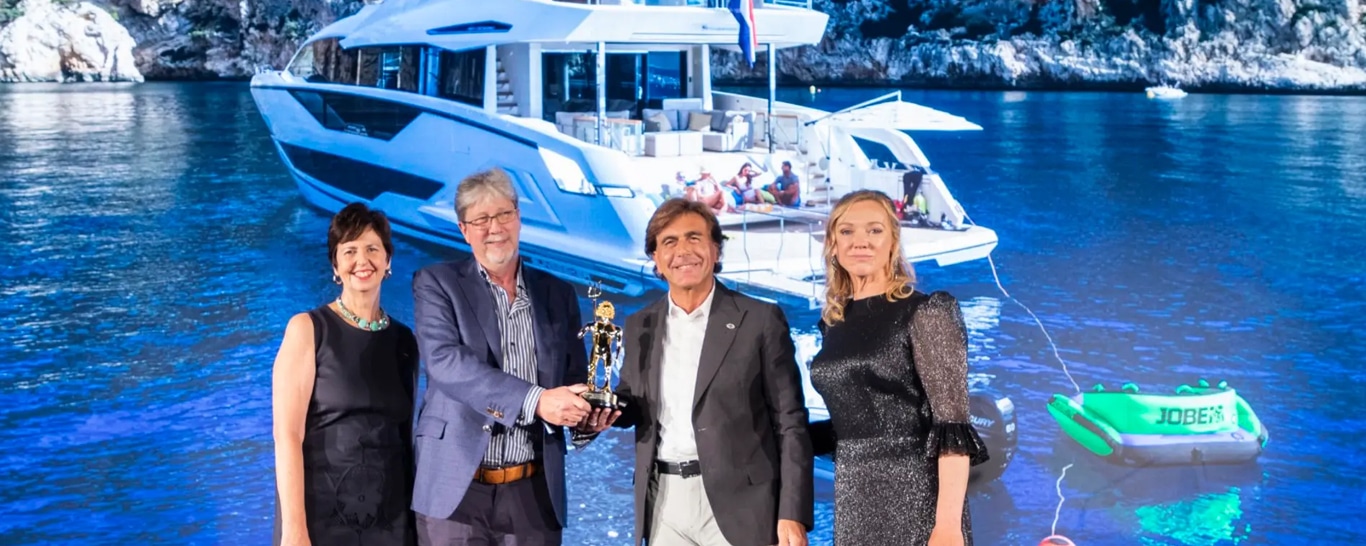
Sunseeker Wins Innovation of the Year Award
Sunseeker has won the ‘Innovation of the Year’ award at the BOAT International Design and Innovation Awards 2022 Sunseeker is delighted to announce it has won the ‘Innovation of the Year’ award at the BOAT International Design and Innovation Awards 2022 for its spectacular X-TEND™ system. The awards acknowledged everything from architecture, styling, innovation and…
Valhalla Joins Yamaha Plastics Recycling Program
Valhalla Boatworks steps on board with Yamaha to join their Rightwaters Plastics Recycling Program Valhalla Boatworks is the most recent addition to the list of boat manufacturers currently recycling plastic protective covers through the Yamaha Rightwaters plastics recycling program. To date, the program, which launched in August 2021, is responsible for returning 17,911 pounds of…
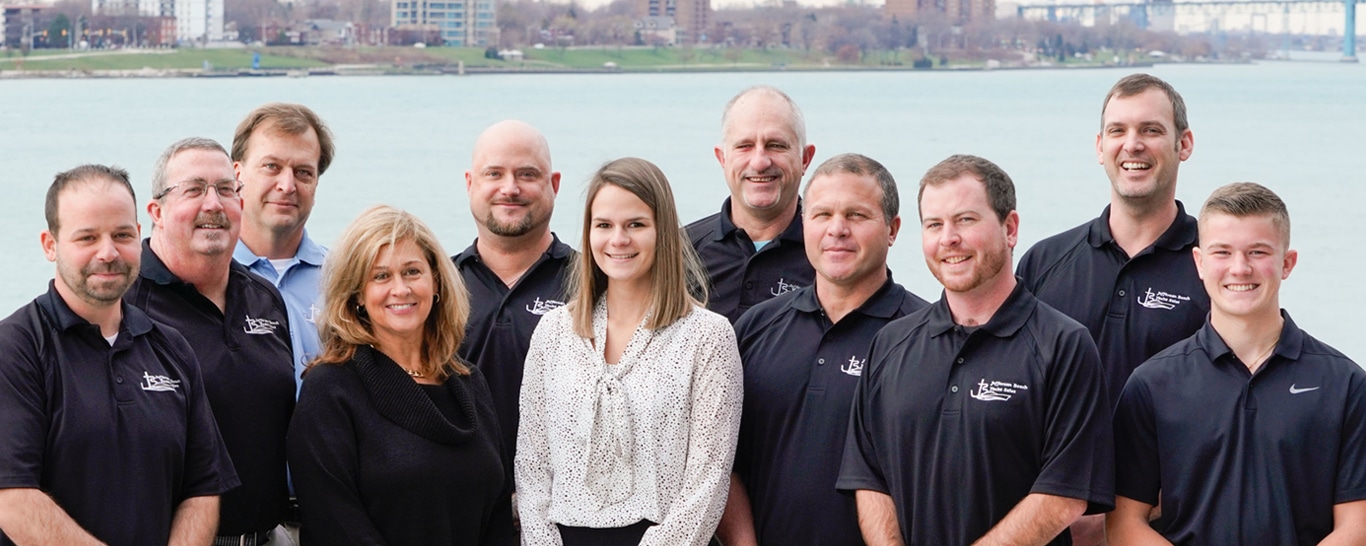
Join Our Service Department
Come Aboard and Join Our Crew! We are on course to grow our service department and looking for talented individuals. Become a part of our story and start your next adventure with us. Service Technician | Marblehead, OH Diesel Technician | St. Clair Shores, MI Gas/Outboard Technician | St. Clair Shores, MI, Holland, MI &…
E15 Gasoline
Boaters Beware: MBIA warns boaters not to fill up using E15 gasoline. E15 fuel, which contains 15 percent ethanol, will be sold in the summer months this year as a way to lower fuel prices. In the past E15 was not sold between June 1 through September 15 – the typical boating season for most…

Building the V-33
Valhalla Boatworks shines the spotlight on the V-33 Brothers Bill and Bob Healey founded Viking in 1964 with a commitment “to build a better boat every day.” It’s a philosophy they still use, along with their sister company Valhalla Boatworks, six decades later. This philosophy is one that shapes the Valhalla V-33. The building process…
The Sunseeker 100 Yacht Revealed
Sunseeker 100 Yacht Revealed We are incredibly proud to unveil the 100 Yacht here in Poole with the owner in attendance to see, for the first time, this spectacular new model. Our project team has worked incredibly hard to present the first build and prepare the vessel for initial sea trials and testing. The second…
Behind the Scenes with Garmin
By David Schmidt | May 11, 2022 | Yachting Magazine Take an inside look at how Garmin turns ideas into tech by Yachting Magazine Google Maps directs me onto Garmin Way, and I absorb the scale of what I’m seeing. A seven- story tower punctuates an otherwise two-story landscape ahead. Maintained grounds, ornamental trees and…
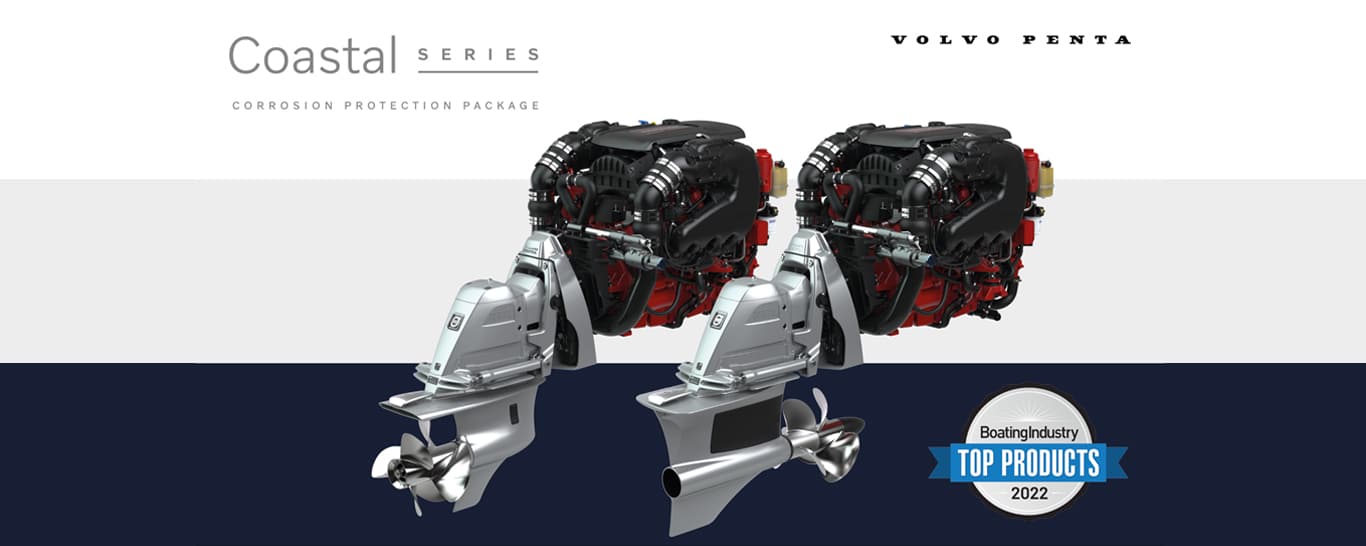
Volvo Penta’s Corrosion Protection
Volvo Penta’s diesel engines were the first choice for numerous award-winning vessels. This achievement was recognized at the Work Boat World Awards where Volvo Penta won Best Small Diesel Engine Supplier 2020.
Center Console: All Purpose Boat
A Center Console is the Do-All Boat, and Great for the Money Versatility makes the center console a great option for any water adventure. This explains why the center console is among the most popular in the Sailfish lineup. Sailfish’s center consoles maintain a layout that allows boaters to do whatever, whenever. This layout accommodates…
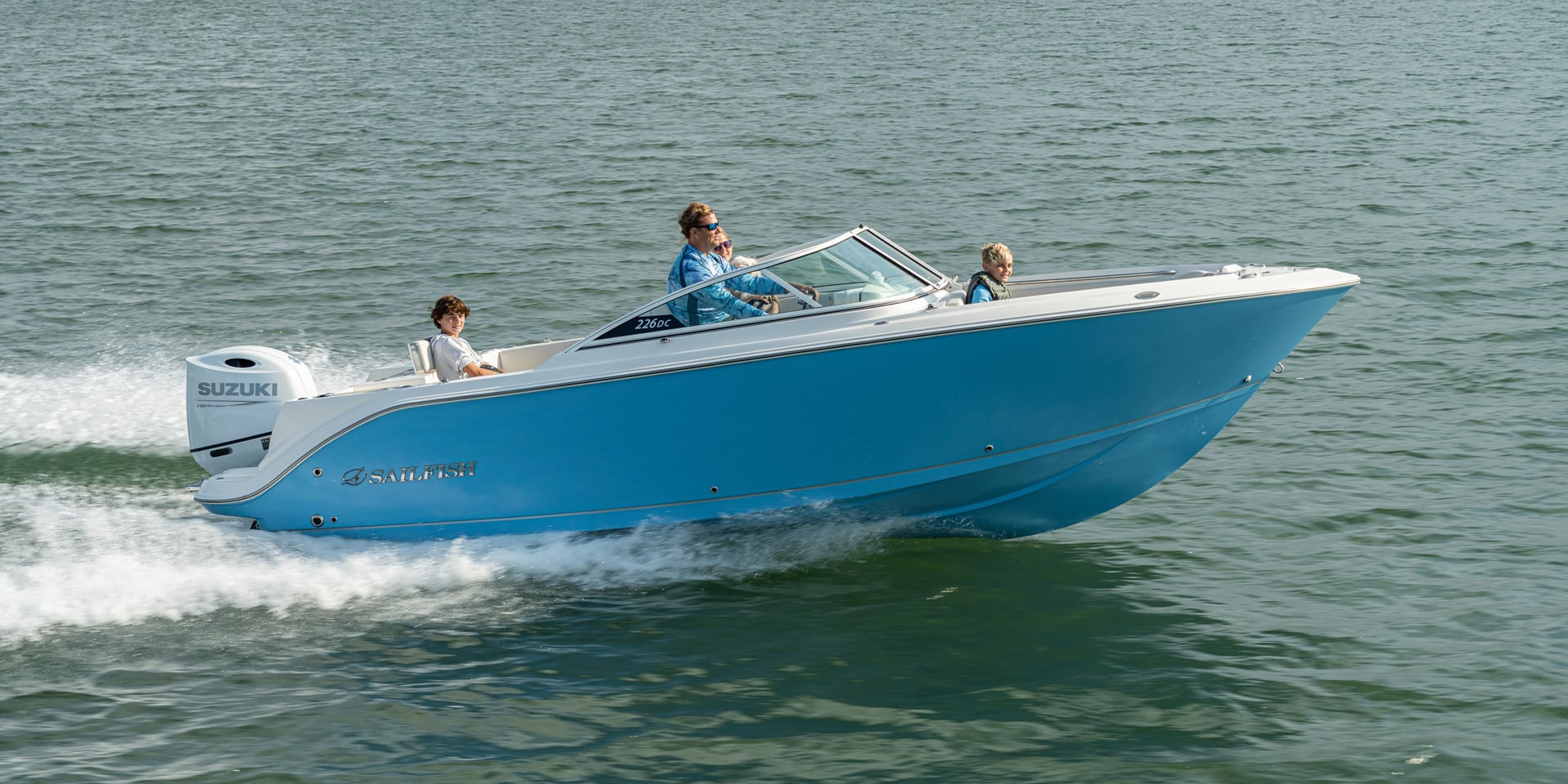
Sailfish is Smooth and Steady
The technology behind the Variable Degree Stepped Hull System sets Sailfish apart from the rest The technology behind its smooth ride is one thing that sets Sailfish apart. No matter the water conditions, Sailfish’s unique Variable Degree Stepped (VDS) hull system delivers the smoothest experience and ride stability in its class. This VDS hull technology…
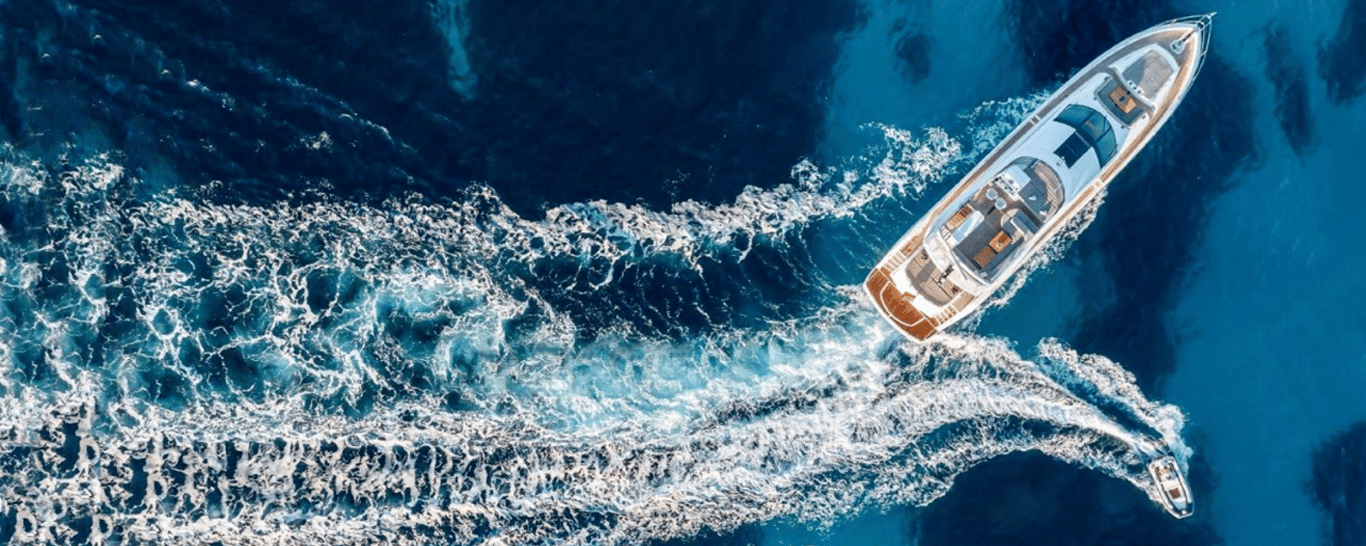
Williams and Sunseeker History
Williams Jet Tenders and Sunseeker International’s Bryan Jones discuss the shared history and partnership. Williams Jet Tenders took some time recently to sit down with Sunseeker International’s Marketing Manager, Bryan Jones, to find out about the shared history Williams and Sunseeker have. WJT: Sunseeker have been working with Williams for over 10 years now, can you tell us…
MCMF & MBIA Awarded State Grant
The Michigan Clean Marina Foundation and the Michigan Boating Industries Association have been awarded $302,700 in grant funding to increase awareness with boaters to prevent the spread of Aquatic Invasive Species The MCMF/MBIA funding project was announced March 1, during National Invasive Species Awareness Week (AIS Awareness Week). “With this funding we’re able to utilize…
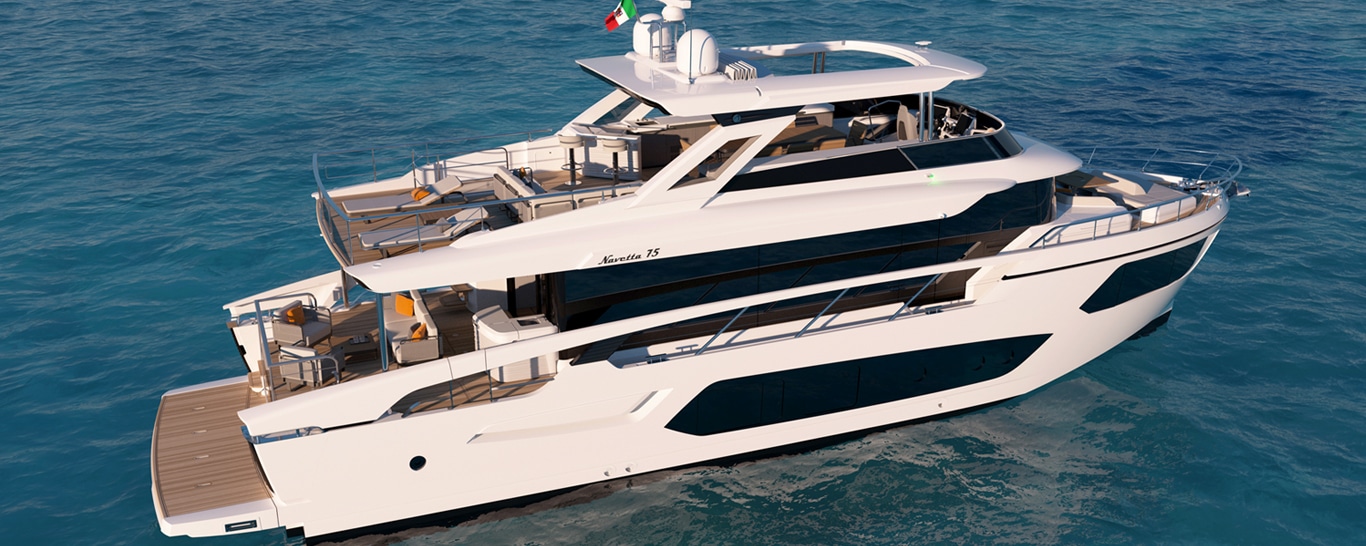
Absolute Welcomes New Navetta 75
Absolute Introduces the Navetta 75, The Largest Boat in the Shipyard Twenty years after it was founded, the Absolute shipyard celebrates its success by introducing Navetta 75, the new fleet flagship. The largest boat in the shipyard, “The Absolute Sphere” is designed to expand the Navetta range. It is no coincidence that Absolute chose the…

Avator Electric Outboard Concept
Mercury announces the exciting new vision with its Avator electric outboard concept. This new development represents Mercury’s next step in marine innovation and advanced technology. The formal release of electric outboard products can be expected later in 2022 and 2023. Avator creates a new boating experience for Mercury’s global customers through the electrification of outboard motors….
Mercury Has New Joystick System
Mercury introduces Joystick Piloting for Outboards with Bow Thruster for Precision Control of Large Outboard Vessels Mercury Marine has introduced Joystick Piloting for Outboards (JPO) with Bow Thruster. This is the industry’s first outboard joystick system with full and seamless integration of a bow thruster. This new system provides the ability to maneuver larger vessels…
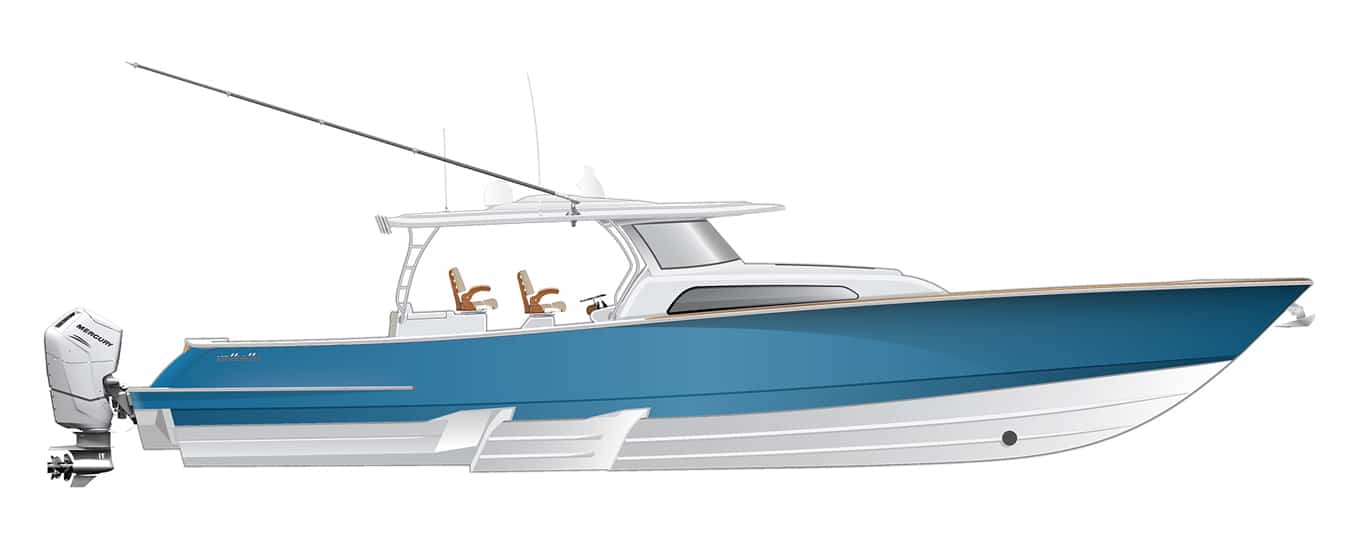
Valhalla Announces New V-55
Valhalla Boatworks announces the all-new V-55 center console – an evolution of Viking excellence. Twelve months after rocking the center console world with the introduction of the revolutionary V-46 center console, Valhalla Boatworks has stolen the spotlight again with the announcement of the all-new V-55. The latest flagship of the V Series is poised to…
Princess Y72 and F45 Best Flybridge
Princess Yachts Y72 and F45 Win The Motorboat and Yachting Best Flybridge Awards The Princess Y72 and Princess F45 were both awarded at the Motor Boat & Yachting (MBY) 2022 Motorboat Awards. The Princess Y72 was awarded winner for best Flybridge over 60ft. Judges took notice of the glamour, polish, and attention-to-detail. Such qualities are…
Absolute 48 Coupe Receives Award
The 48 Coupe is named the European Powerboat of the year 2022 in the “Up to 20M” Category Absolute Yachts is having a wonderful start to the year, and the Absolute 48 Coupe receives award. The Absolute 48 Coupé was awarded the European Powerboat of 2022 in the “Up to 20m” category. The winners were…
The Sunseeker Magazine
Sunseeker Encourages Boaters to Seek More with the Sunseeker magazine and Full Range Brochure. The official Sunseeker magazine provides readers with a true sense of what it means to buy into the Sunseeker brand. The magazine contains stunning photography as well as the latest industry news. Readers will also gain insight to Sunseekers newest models…
Importance of Hull Design
Boating Magazine highlights the importance of hull design in regards to Sailfish Boat’s “Variable Degree Stepped” hull design “The Sailfish 276 DC features the variable-deadrise concept, which provides a good balance between speed and stability.” In the world of boats, the major thing to consider is the importance of hull design and shape. Boats have…
Princess Announces All-New V50
Impeccable Handling and Advanced Technology Aboard the All-New Princess V50 – Efficient Volvo Penta IPS650 engines provide top speeds in excess of 30 knots – Sleek styling with an extended canopy to provide more usable outdoor space – Hand-crafted using premium materials of the highest quality, the V50 is stylish without compromising practicality or usability…

The Passing of a Legend
Viking Yachts Co-Founder Robert T. Healey Sr. (1929-2021) (New Gretna, New Jersey, December 14, 2021) – Robert T. Healey Sr., the co-founder of the Viking Yacht Company who helped build the company into an industry leader and led the fight that repealed the Federal Luxury Tax on yachts in the early 1990s, passed away last…
Tour the Sunseeker 88 Yacht
The Ultimate Yachting Experience The stunning all-new 88 Yacht showcases Sunseeker’s outstanding design and technology. This excellence, fueled by a passion to create the ultimate yachting experience for all on-board. The 88 Yacht’s exterior profile has black feature accents, angular hull glazing and glazed bulwark panels. These features make it one of the yard’s most…
Winterize Your Boat’s Electronics
Things to do to prepare your boat for winter. Sadly for many of us, the time has come. Before you put your boat up for the year, though, there are a few things you’ll want to do to winterize and prepare your onboard marine electronics for the upcoming inactivity. 1. Check cables/wiring. Check any exposed…
Sunseeker Wins Design Award
Sunseeker is delighted to announce its most recent win at this year’s Metstrade Boat Builder Awards Judges presented the “Innovative On-Board Design Solution” award to Sunseeker. This took place at a ceremonial event on Wednesday, November 17, 2021. The now multi-award-winning Sunseeker 65 Sport Yacht was recognized for its exceptional SkyHelm feature. The 65 Sport…
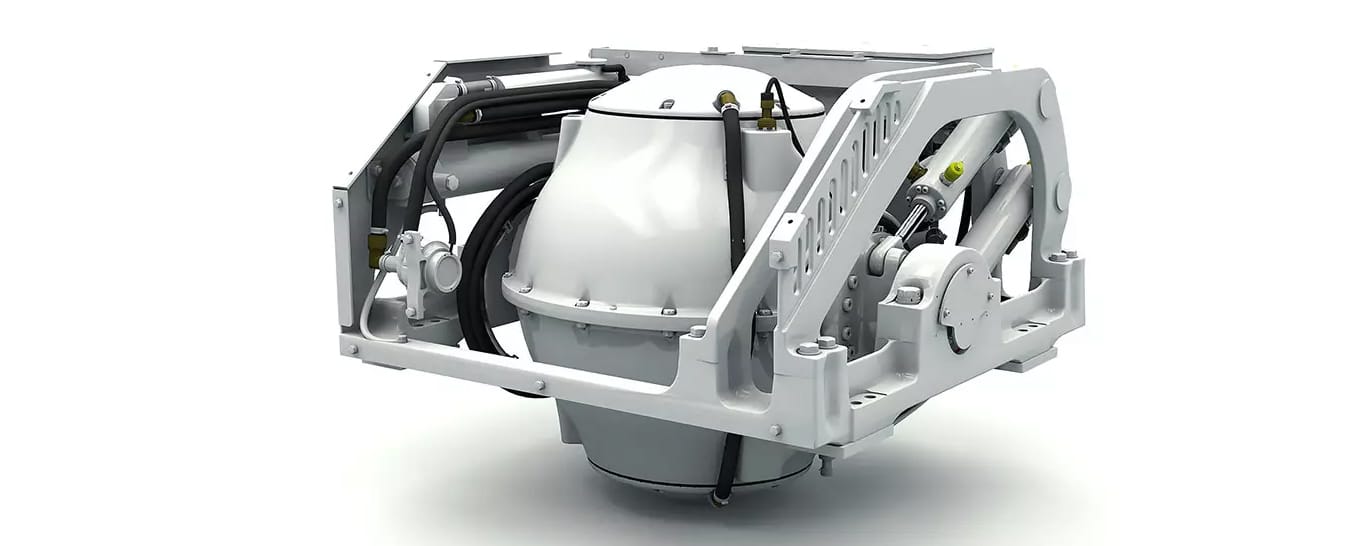
Seakeeper Maintenance Plan
Seakeeper Maintenance Seakeepers are designed to require minimal maintenance. Most of the critical components are contained in a sealed enclosure. This design protects these elements from moisture that could be corrosive. However, The closed-loop hydraulic circuit will need to be inspected and serviced periodically. The cooling circuit also requires occasional examination and maintenance. Follow the…
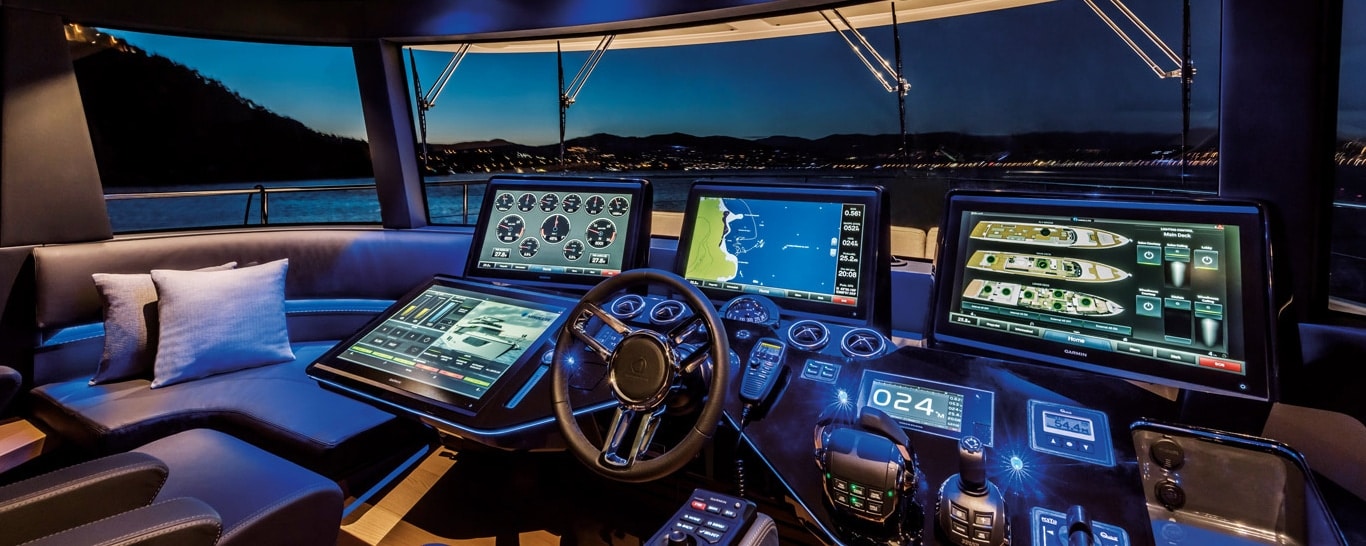
Volvo Penta Assisted Docking
Volvo Penta is a leader in technology that makes boating easier, safer, and more accessible than ever before. This commitment has been recognized at the 2021 METSTRADE Show where the Assisted Docking System received multiple DAME Design Awards. On November 16th the DAME Design Awards announced Volvo Penta’s Assisted Docking System was a joint winner of…
USCG Documentation VS State Titling
The Difference between Federal-Titling with the USCG and State-Titling Explained After purchasing a new boat, comes the question. Does the boat need to be federally-documented with the USCG or state-titled? What is the difference? There is often confusion surrounding these questions. Each form of titling has a specific set of criteria the vessel must meet…
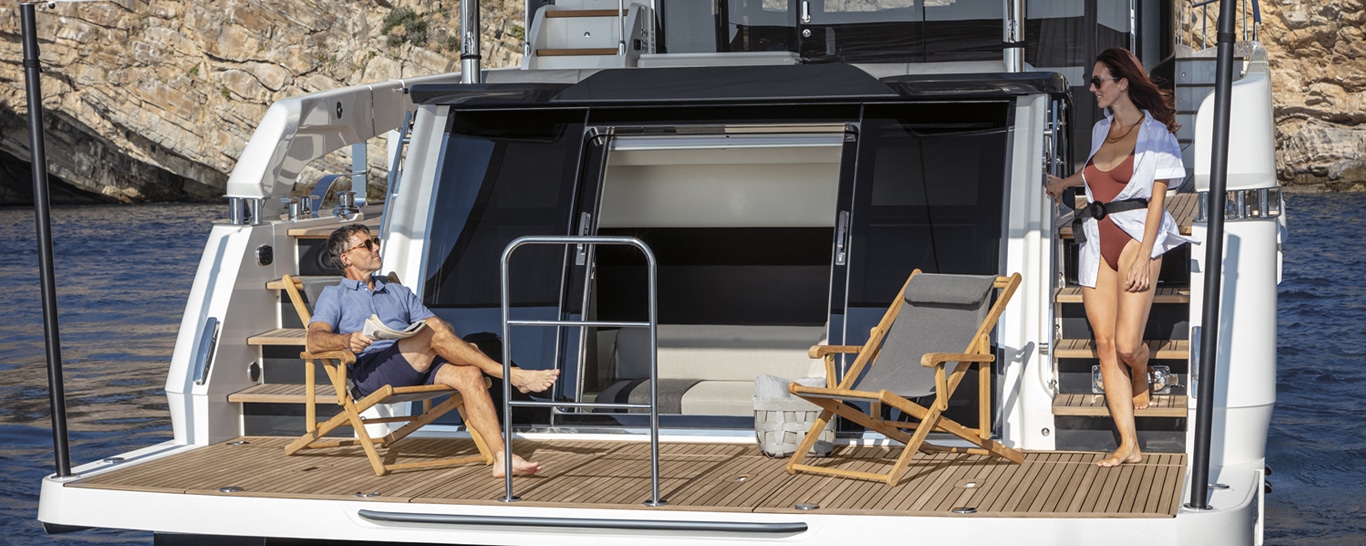
New Frontier of Absolute Yachts
For twenty years, the shipyard in Piacenza, Northern Italy, has been a reference point for international boating. Here are the strengths of its luxury yachts. Absolute Yachts is an Italian company that, since 2002, has been building luxury motor yachts between 47 to 73 feet. Its three ranges | Navetta, Flybridge, and Coupé – offer a high level of design…
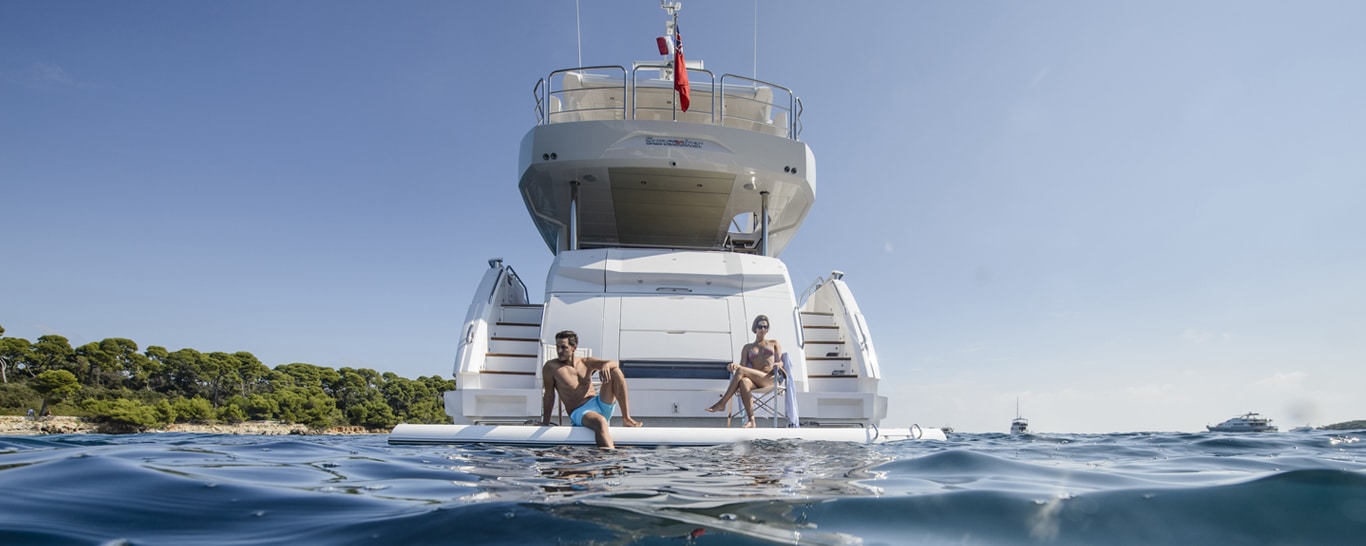
“Blue mind” is a term that describes the way water can positively affect our minds and emotions. When we spend time near water, whether it’s at the beach, a lake, or a pool, we often feel calm and relaxed. It’s like water has a special power to make us feel good. Imagine the feeling of…
Mercury Marine Gives Confidence
To some, boating is a performance-driven feast for the senses: the push of the throttle, the blast of the ocean air, the roar of the outboard engine(s) as the boat reaches plane. For others, it’s the overall stillness of the experience – the quiet connection with the boat and with those inside it – that…
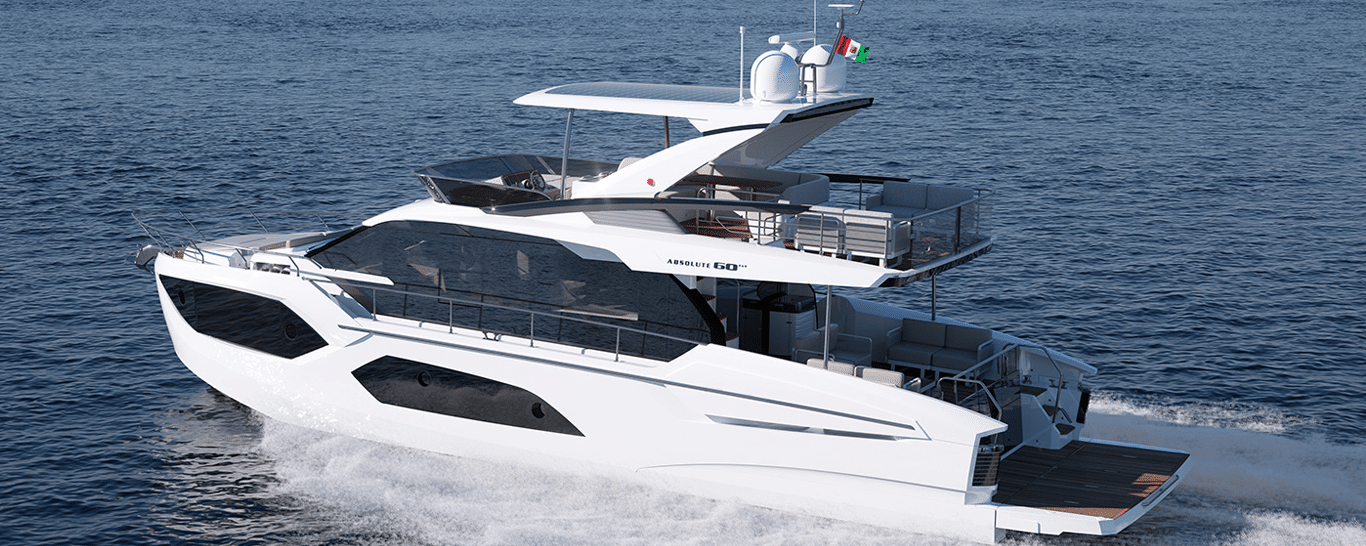
Absolute’s Models Triumph at Cannes
Absolute’s Innovation and Engineering Efforts Were Rewarded in Cannes With the Debut of the 2022 Season. Absolute entered the French Boat Show with its full Navetta range, two boats from the FLY range, and two 2022 new models: 48 Coupe – the first versatile and sporty creation in the brand-new Coupe line 60 Fly –…
Garmin Wins Manufacturer of Year
Garmin also recognized as a Most Innovative Marine Company in annual Soundings Trade Only awards Garmin® International Inc., a unit of Garmin Ltd. (NASDAQ:GRMN), the world’s largest and most innovative marine electronics manufacturer, today announced that it was named Manufacturer of the Year for the seventh consecutive year by members of the National Marine Electronics Association (NMEA) at its…

Absolute Yachts Presents the 56 Fly
LET CHARM AND PERSONALITY INSPIRE YOUR NEXT ROUTE The result of engineering innovation, Italian design and a passion for details, the latest project by the Piacenza-based shipyard is called 56 FLY – The Absolute Charisma. Featuring a strong, confident personality, 56 FLY was created to be noticed and to fascinate boat owners with a proven mix of comfort and…
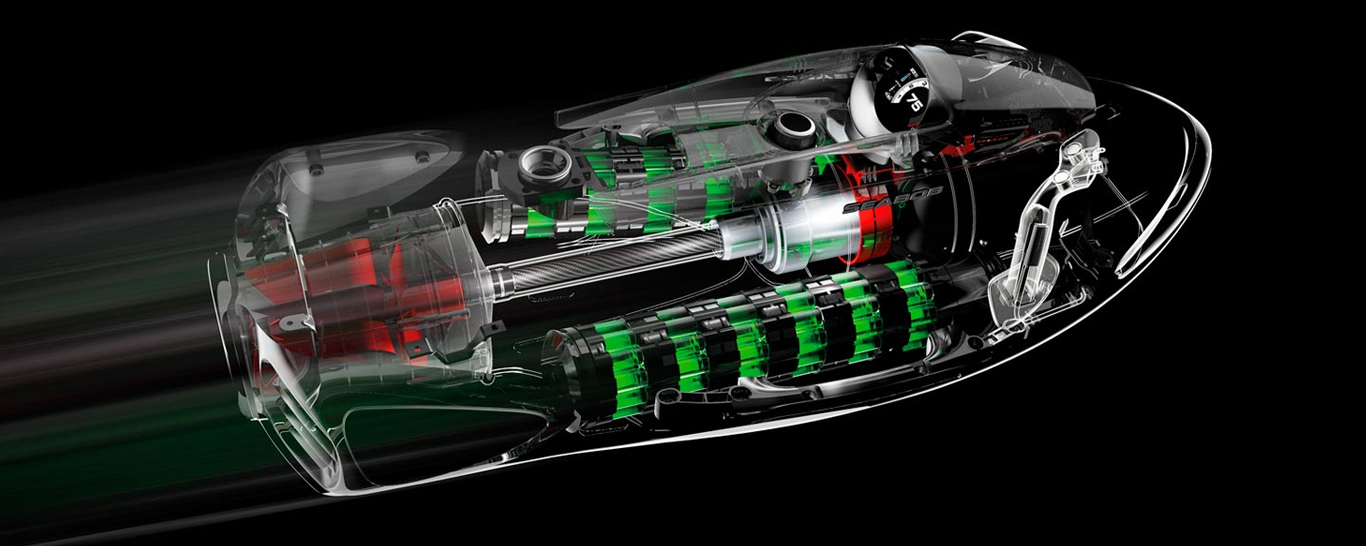
SEABOB Technology
Quality right down to the last detail. The SEABOB-Jet is the absolute paragon of cutting-edge technology. In order for the vehicle to live up to this claim, the drive unit was made using premium carbon elements, established ceramic coatings and precious metals resistant to salt water. Meticulously hand-crafted, this water sports vehicle is made of…

Yamaha Unveils MyYamahaOutboards
New App and Web Portal Improve Overall Customer Experiences, Enhance Outboard Values This summer, Yamaha Marine introduces MyYamahaOutboards, a new mobile app and web portal that revolutionizes the ownership experience and helps enhance customer satisfaction of Yamaha outboards. MyYamahaOutboards puts essential product and dealer information at owners’ fingertips, including a complete maintenance history for each…
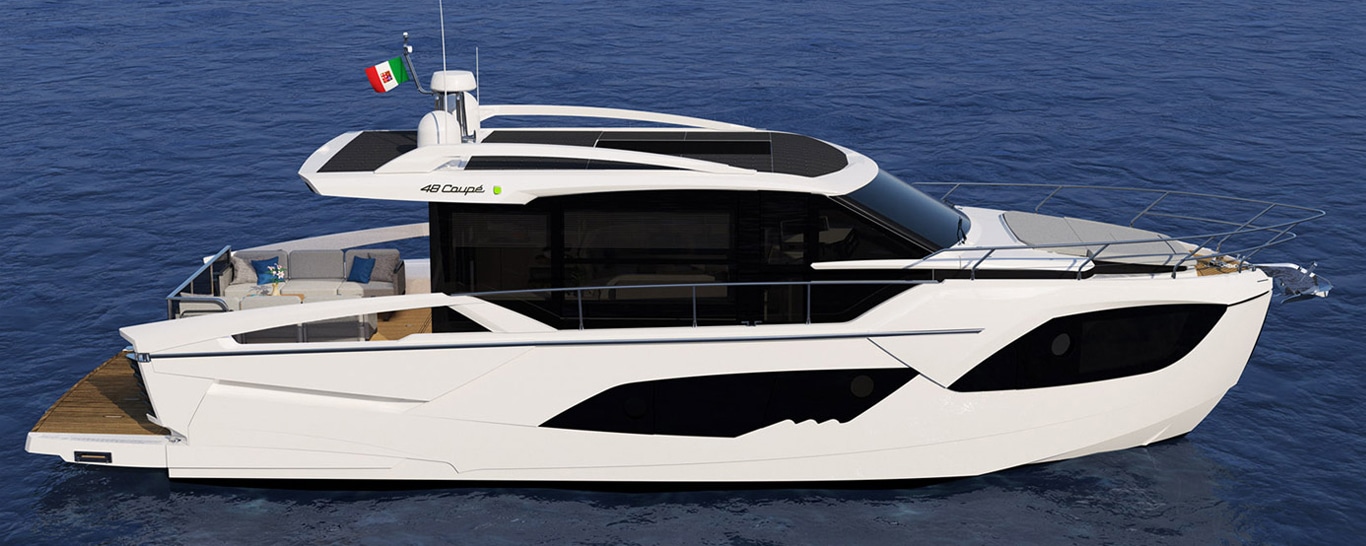
Absolute Launches New Coupe Model
Absolute Yachts throws down the gauntlet to the luxury yacht industry with the new Coupé range: sporty, devoted to comfort, and highly versatile. The Coupé range has been completely re-invented by the Italian shipyard: the revolutionary ideas that have made Absolute’s models famous are back on board, enhanced by intriguing new features. For instance, they have…
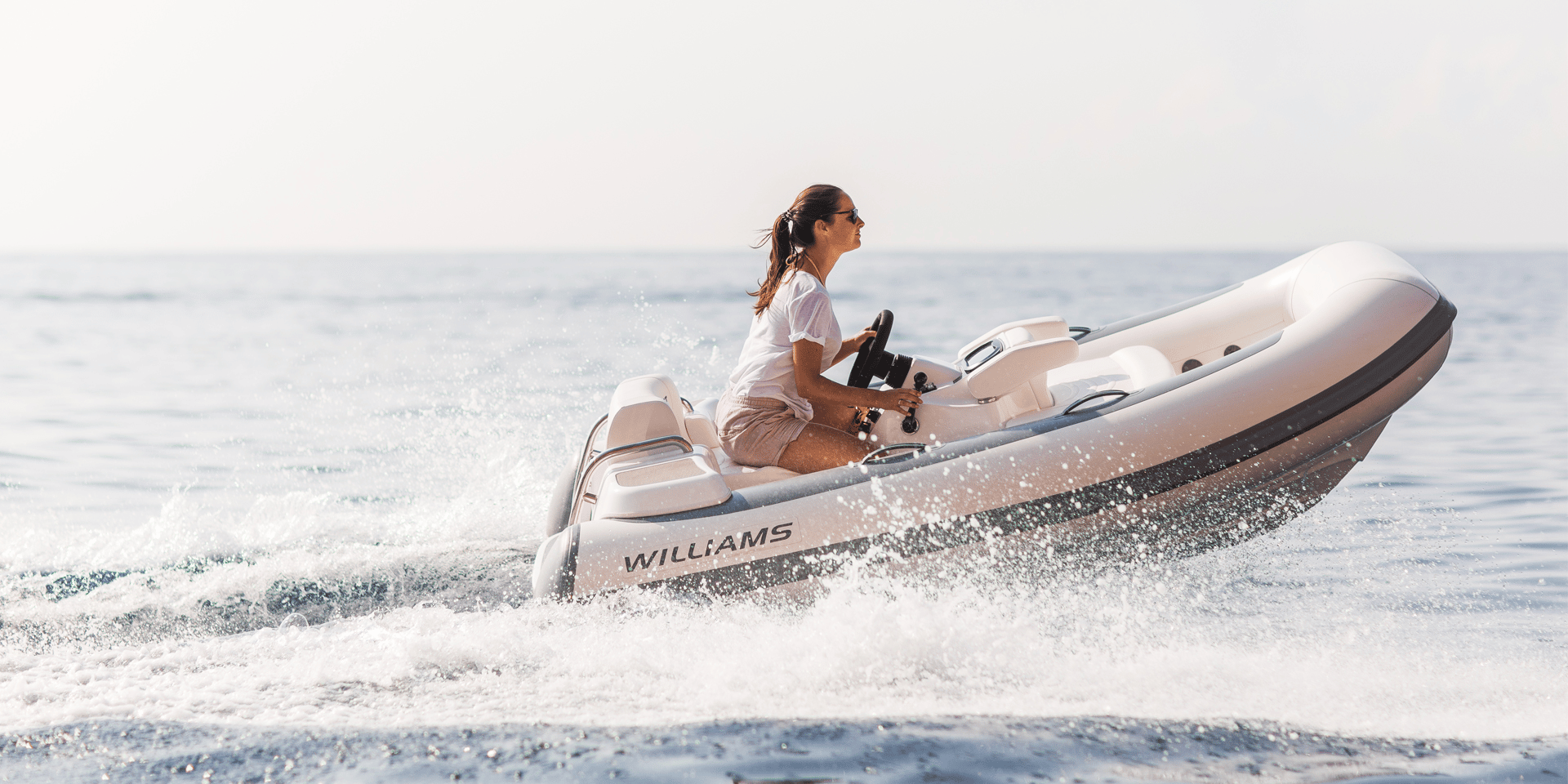
Williams launches 10,000th Tender!
UK manufacturer Williams Jet Tenders leads the waves with the launch of its 10,000th tender. Williams Jet Tenders is the world’s leading jet tender specialist hits a milestone this week – Williams launches 10,000th tender. Williams Jet Tenders is a British success story that began, as all good stories do, in a shed. Two brothers…
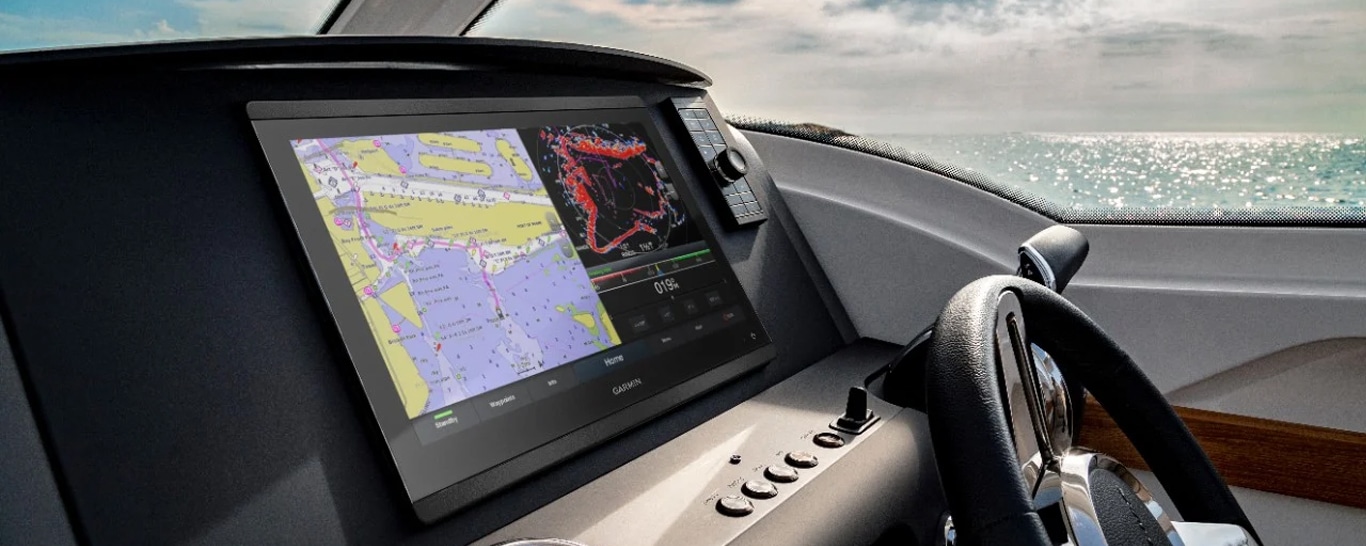
How to Read Nautical Charts
Even if you’re new to boating, it’s unlikely that you’re completely new to GPS systems. Maybe you have a car GPS to get you from point A to point B; maybe you rely on a smartphone; or maybe you’ve gotten very, very skilled at navigating Google Earth to creep on your favorite Zillow listings. (No…

Absolute 1st With Assisted Docking
Featuring IPS engines on all boats, Absolute Yachts is the first shipyard to provide the new Volvo Penta Assisted Docking system on its entire range. Absolute and its engine supplier Volvo Penta build on their long-standing partnership to offer boat owners around the world the Assisted Docking system, the latest innovation launched by the famous Swedish manufacturer in 2021. By…
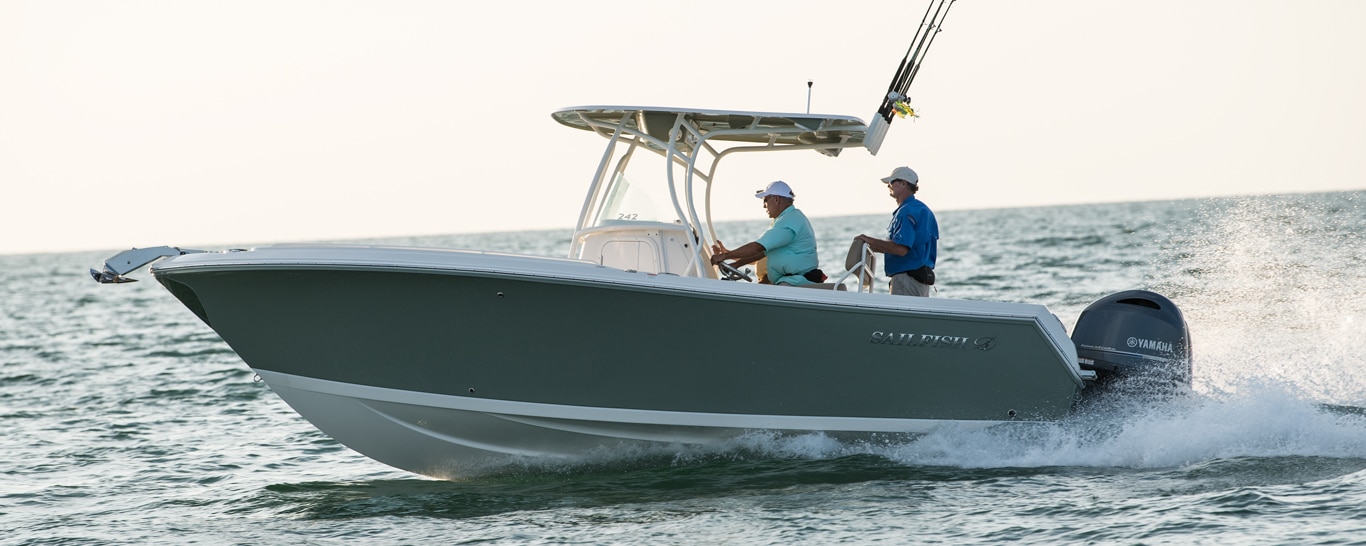
Sailfish’s Stalwart Stringer System Promise
The backbone of Sailfish Boats premium product. Boat manufacturers can talk all day about fancy fishing features or a boat’s rugged abilities. But ultimately the integrity of any boat comes down to its hull. And the integrity of any hull lies in its robust stringer system. Sailfish doesn’t cut corners or allow room for error…
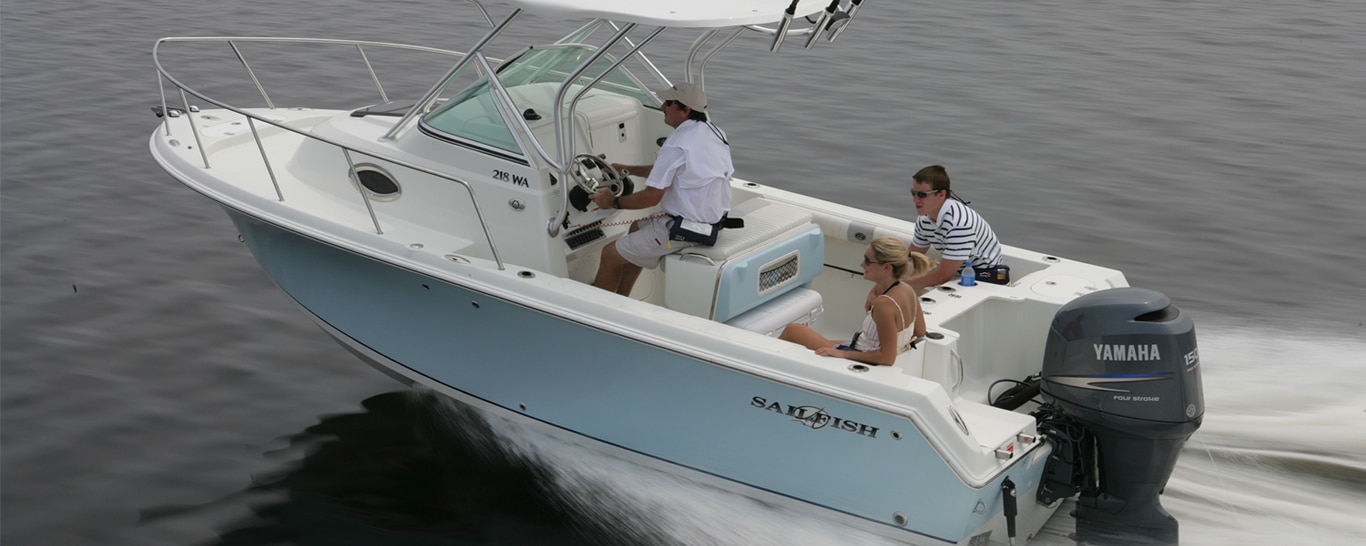
Sailfish Adds New Touch
The classic walkaround design is made to fit a broad range of functionality. There are many unique advantages to this style boat, which hosts everything from family days on the lake to long fishing excursions. Sailfish’s 220 WAC model is no exception, and tells its own unique story of fun and adventure. The 220 WAC…
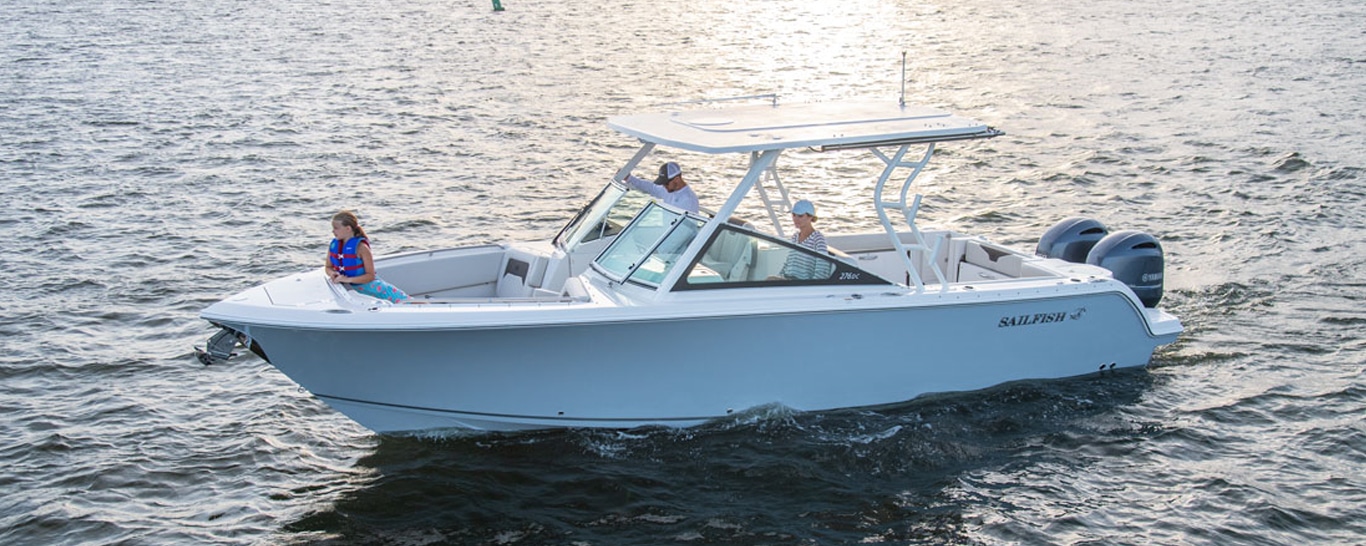
Center Console or Dual Console
Learn the subtle differences between the layouts to decide if you want a center console or dual console. Center Console or Dual Console? Both models are experiencing a surge in overall popularity – especially during the pandemic. With so many options available to anglers and families, it is important to understand the subtle differences between…
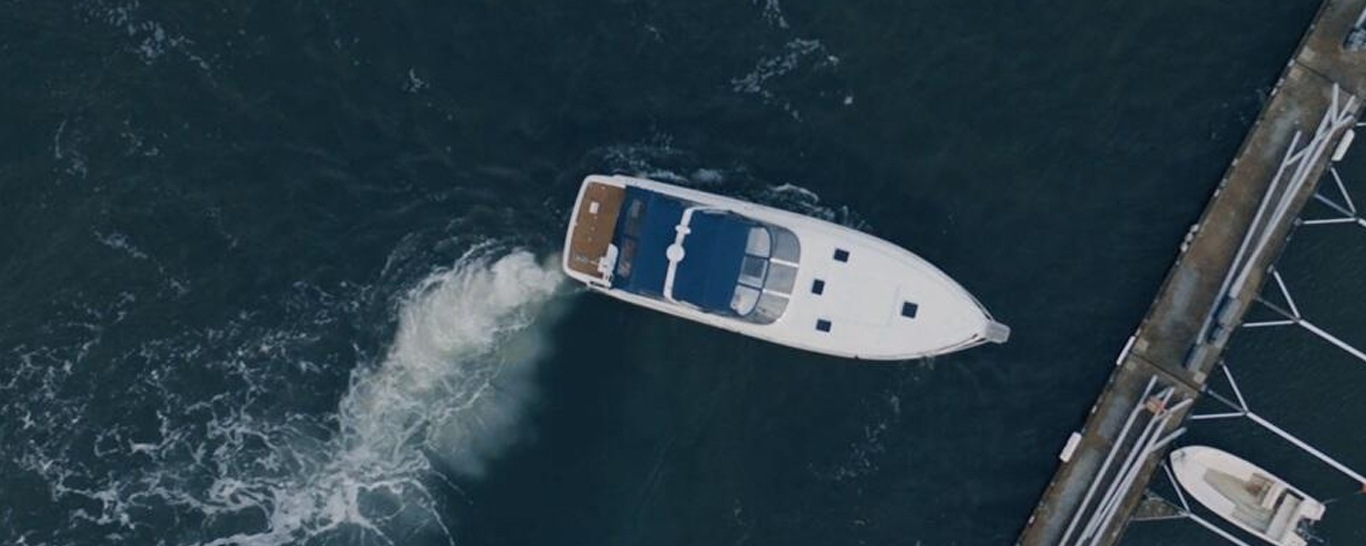
Volvo Assisted Docking Recognized
Volvo Penta’s Assisted Docking technology has been honored among the top products of the year by Boating Industry Magazine The top 50 boating products appeared in the May issue of the monthly boating trade magazine. They were chosen by the editors from hundreds of nominations, based on their impact on the industry, innovation and how…
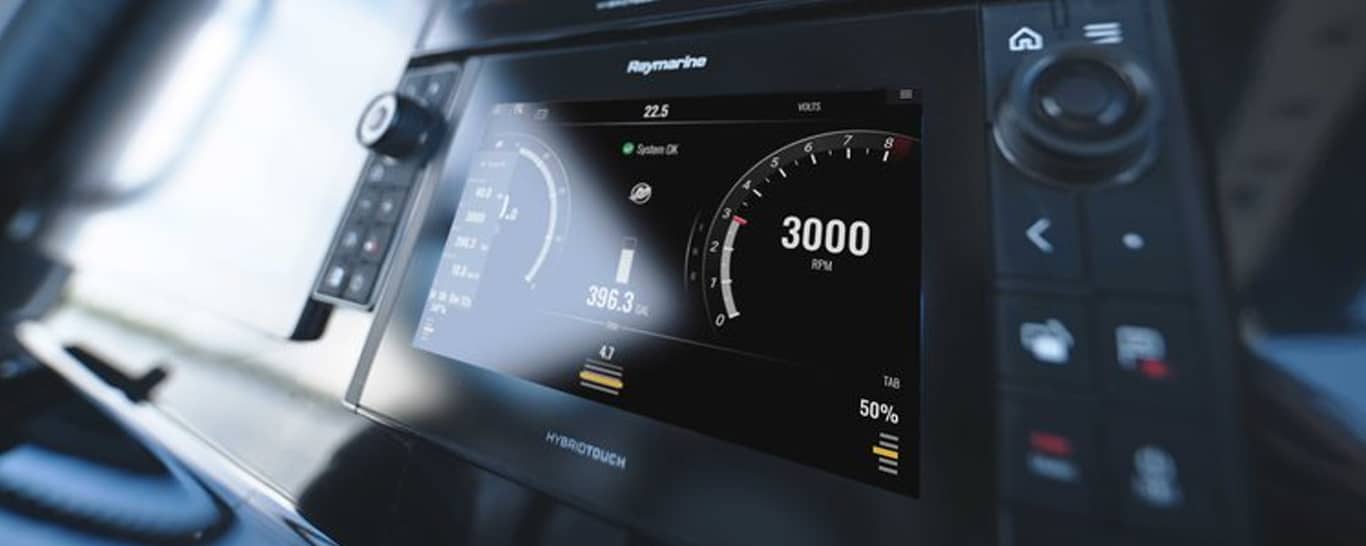
Mercury SmartCraft Connect
Mercury Marine®, a division of Brunswick Corporation (NYSE: BC), today launched SmartCraft Connect, which allows boaters to use Garmin and Raymarine multi-function displays (MFDs) to access detailed information about the status and operation of their SmartCraft-compatible marine engines. For years, Mercury has made advanced engine monitoring and alerts available to boaters through its powerful VesselView technology….
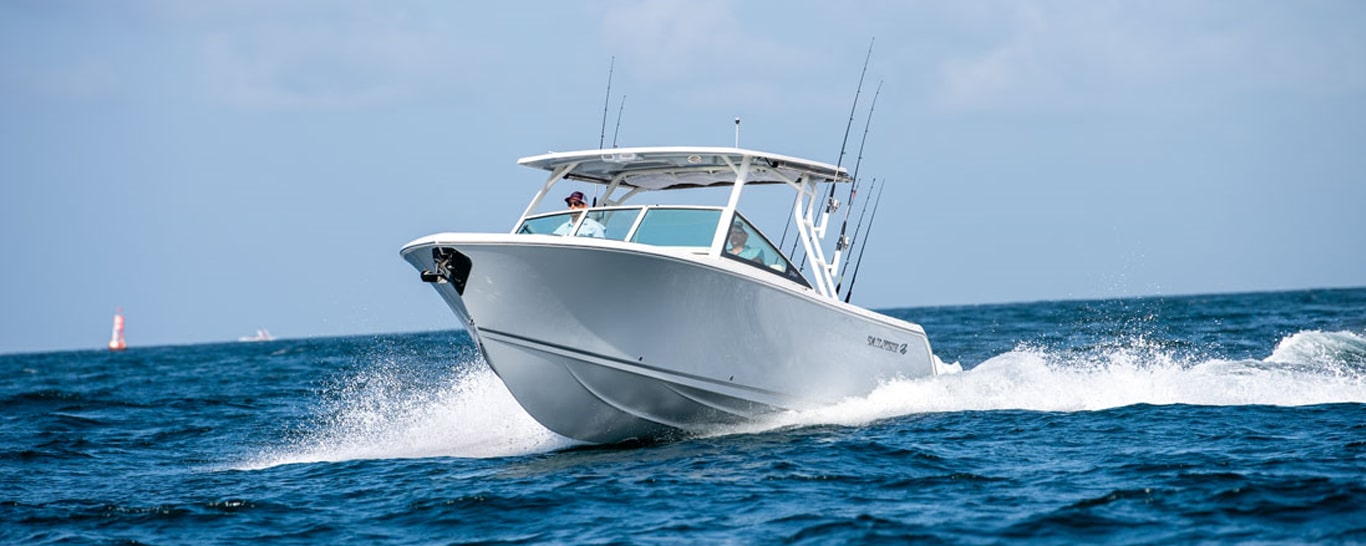
Power of Sailfish Hull Technology
If you want to know only one thing that that distinguishes a Sailfish boat, it is the technology behind its smooth ride – specifically the Sailfish hull technology. Sailfish’s unique Variable Degree Stepped (VDS) hull system is designed to deliver the smoothest experience and overall best ride stability in its class, in all water conditions. Sailfish’s VDS hull…
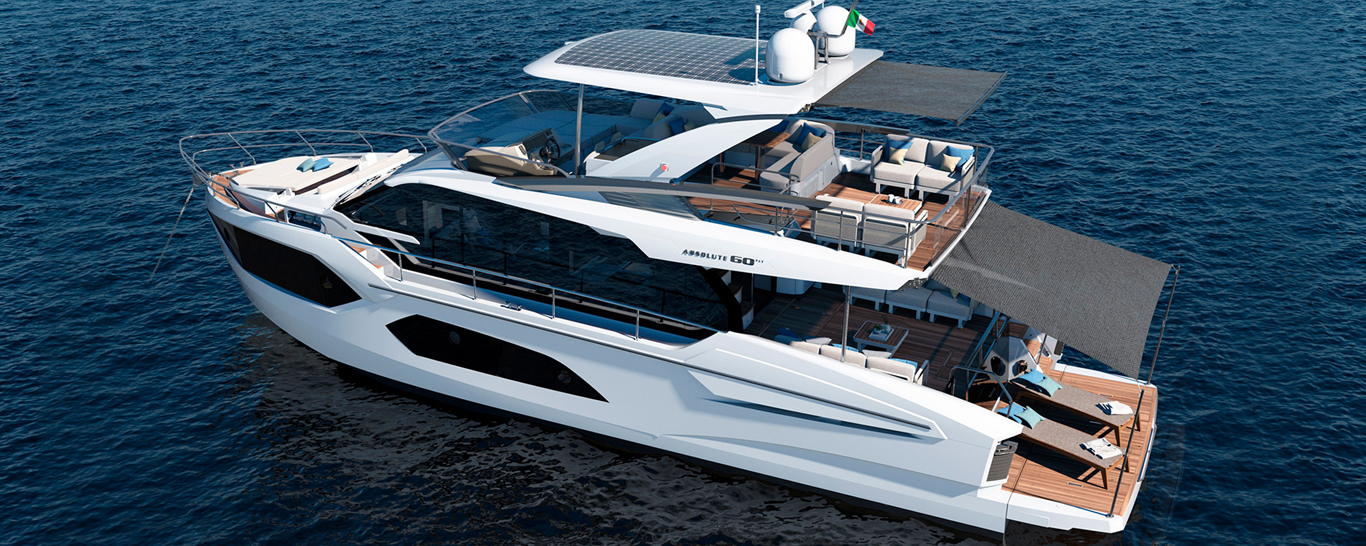
Launching the New Absolute 60 Fly
The Evolution of The Absolute Shipyard Launching the NEW 60 Fly and Coupe’ Range for Generation 2022 Absolute Yachts approaches the start of boating season creating high expectations for the Generation 2022 new models. A very optimistic opening awaits their shipyard thanks to the launch of a brand new range, as well as two exciting…

Yamaha Recognize for Excellence
Yamaha’s U.S. Marine Business Unit accepted the 2021 National Marine Manufacturers Association (NMMA®) CSI Award for excellence in customer satisfaction in five categories including Outboard Engine, WaveRunner® personal watercraft and Jet Boat as well as for Yamaha’s boat companies Skeeter® and G3® Boats. Yamaha has received this recognition in the Outboard Engine category every year…
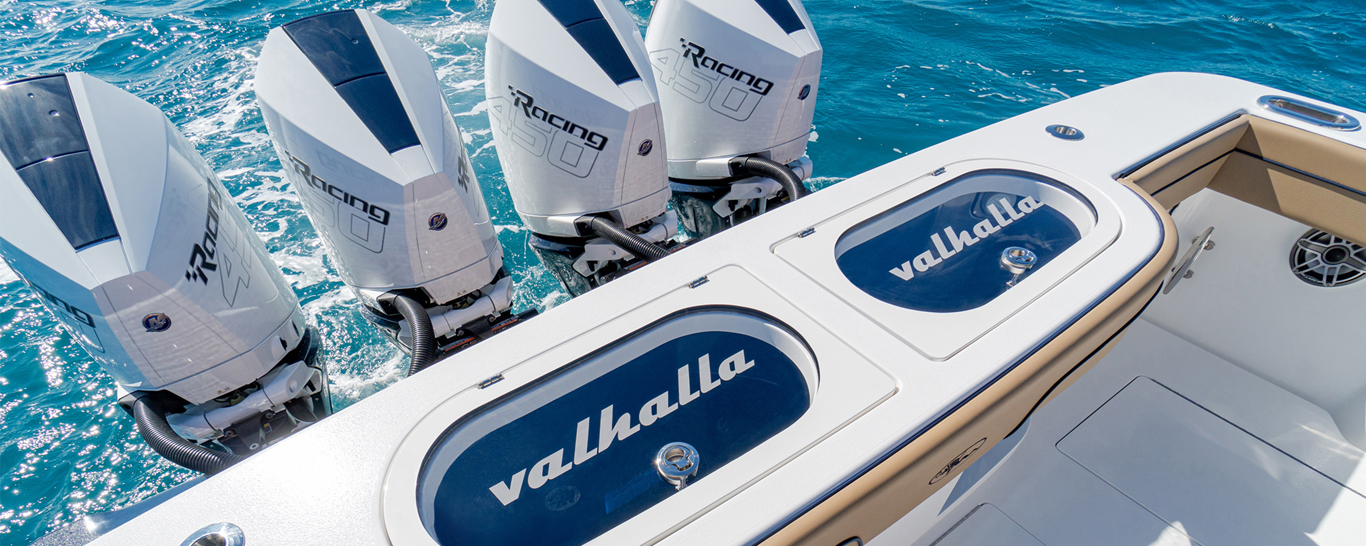
The Valhalla V46 Just Got Better
Now Offering Mercury’s Game-Changing Verado Outboards The world’s best big center console just got better. Valhalla Boatworks (VBW) is proud to announce that it will offer Mercury’s new game-changing 7.6-liter V12 600-hp Verado outboards on the Valhalla 46, the newly introduced flagship of the V Series. “We’re extremely excited,” said Viking President and CEO Pat…
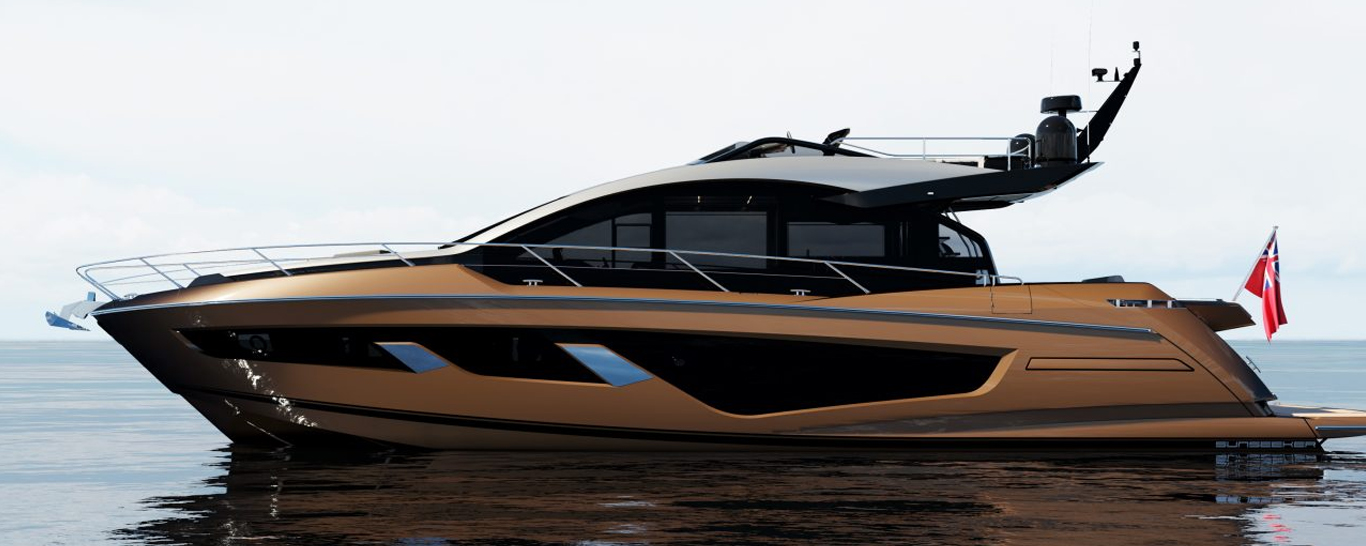
Sunseeker’s 65 SY | Volvo Penta IPS
When Sunseeker International revealed its radically new 65 Sport Yacht design in late 2020, it was almost certainly the sculptured exterior styling, innovative helm concept, and stylish interior appointments that initially caught the eye. But behind that sleek exterior is another impressive development that is set to have an equally impressive impact on the cruising…

New V12 600hp Verado by Mercury
Mercury Marine®, a division of Brunswick Corporation, today introduced the new 7.6‑liter V12 600hp Verado® outboard engine. With this launch, Mercury continues to transform the high-horsepower outboard market, providing its most powerful and capable outboard, which includes several industry‑first features for a wide variety of applications. “With boats continuing to grow bigger and performance expectations…

Volvo Penta | Work Boat World Award

Updated V6 Offshore Outboards
Yamaha Marine kicks off 2021 with brand new product offerings including updated V6 Offshore outboards that combine new benefits with a reliable performance legacy. The new F250 and F300 V6 Offshore Digital Electronic Control (DEC) models boast built-in Digital Electric Steering (DES), Thrust Enhancing Reverse Exhaust (TERE) and other XTO Offshore®-inspired features. “The new, updated…
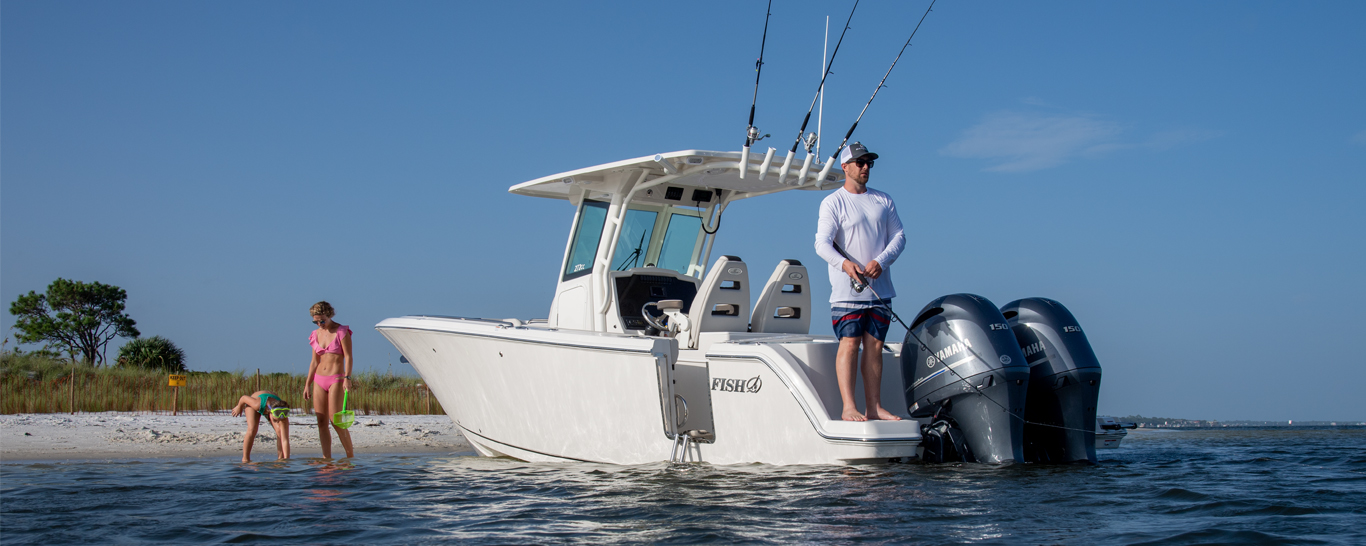
JBYS Adds Sailfish to Brand Lineup
Sailfish Boats has seen an immediate impact and growth spurt since the addition of Rob Parmentier as President and CEO. In recent months, Sailfish has added five new dealers to its list of partners, and Jefferson Beach Yachts Sales (JBYS) is excited to be among them. Erik Krueger, Jefferson Beach Yacht Sales Vice President, said,…
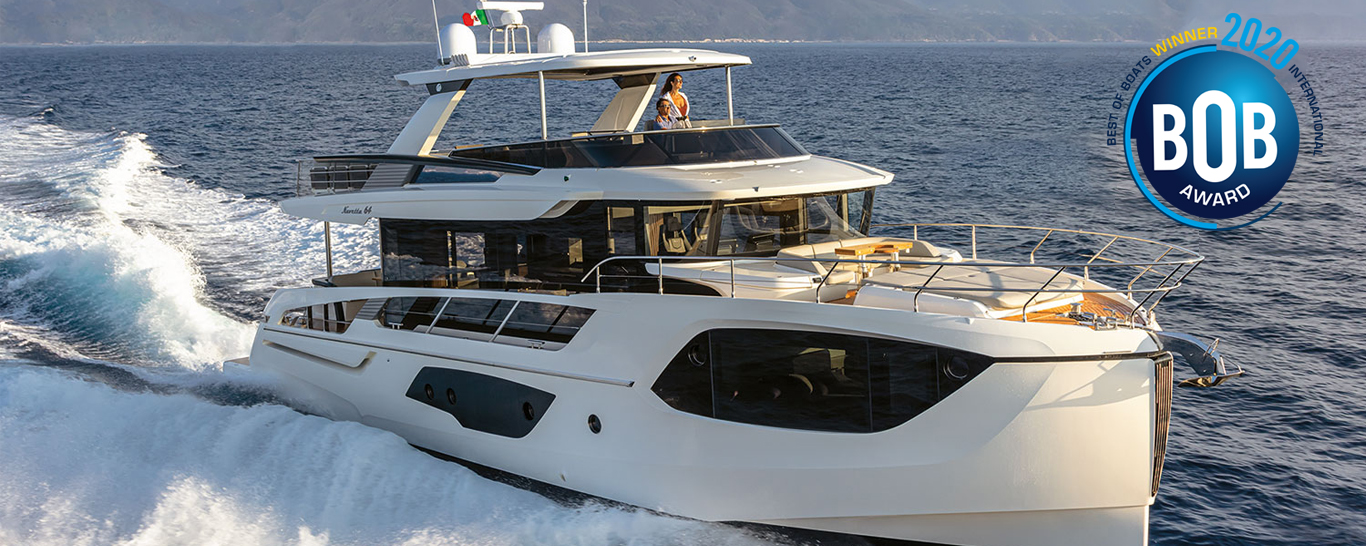
Absolute 64 Navetta is the “Best for Travel”
Best of Boats Awards 2020 Absolute 64 Navetta is the “Best for Travel” On Thursday, November 19th, the Best Of Boats Award 2020 award ceremony took place in Berlin. This is the only award in the motorboating world that aims at identifying the best yachts based on five categories: 1. Best for Beginners 2. Best for Family…
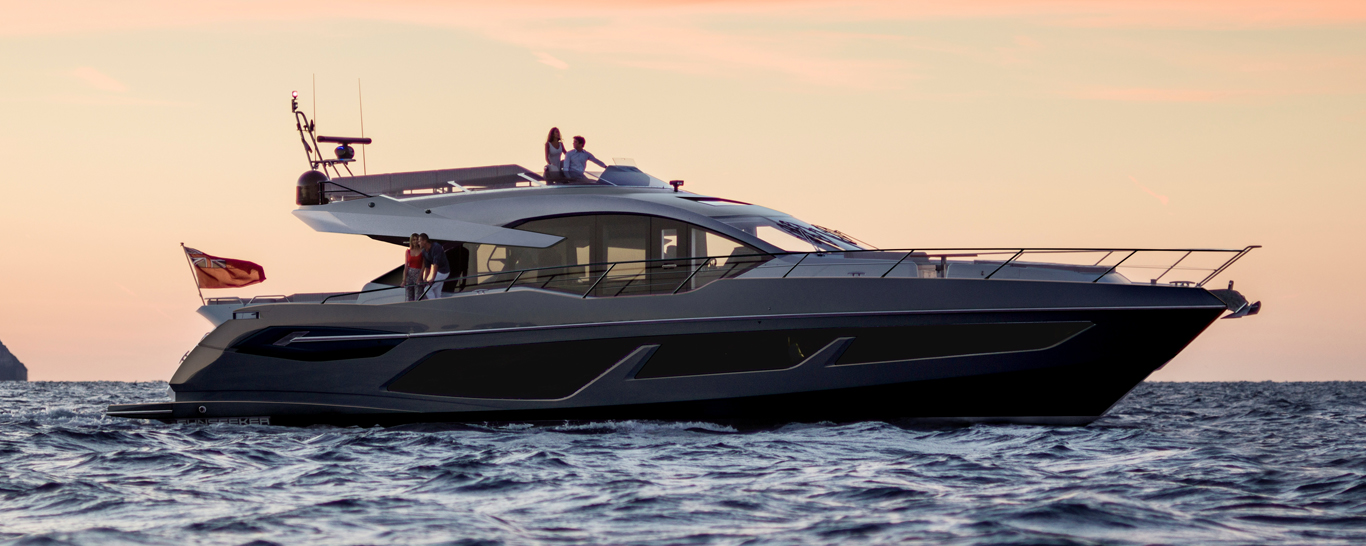
New Sunseeker 74 and 74 SY XPS
Sunseeker International has revealed its Predator 74 and 74 Sport Yacht will now be available as an XPS Limited Edition. Both yachts will feature dramatic new styling and numerous luxurious appointments which are only available together, as part of an optional package. The XPS package on offer is available with the largest 1900 MAN engine…
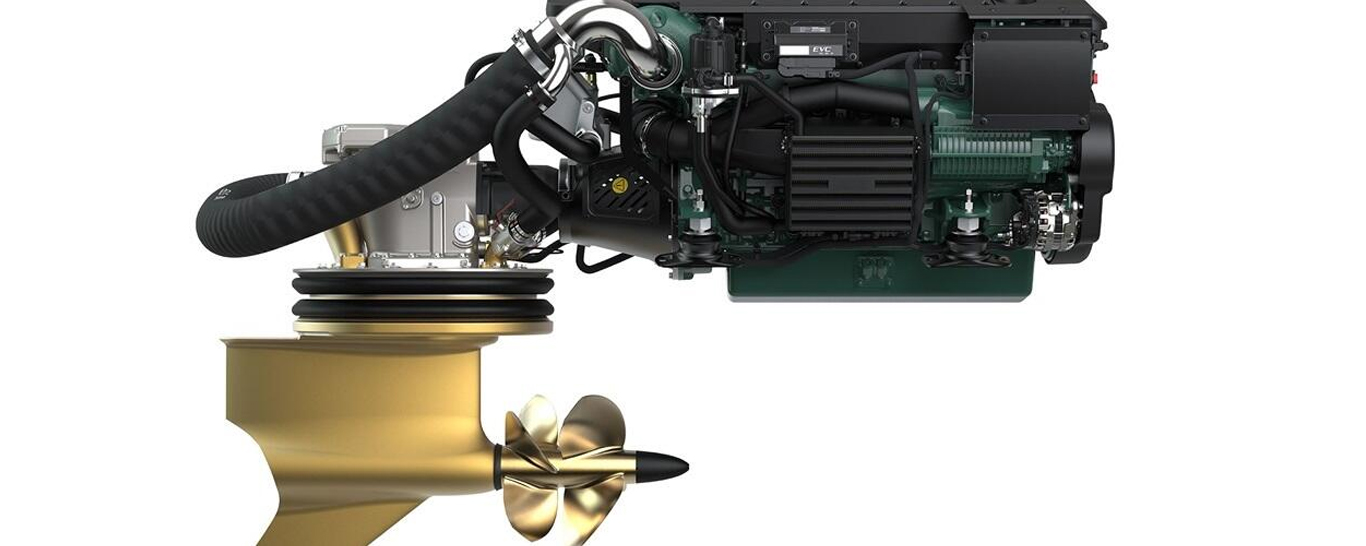
Volvo Penta Hits 30,000 Installations
Volvo Penta Inboard Performance System (IPS) units deliver a unique user experience Up to 30% reduced fuel consumption and 30% less CO2 emissions compared to traditional inboard shafts. The company has now supplied 30,000 Volvo Penta IPS solutions across the marine sectors. Environmental care has been a core value at Volvo Penta since 1972 and…
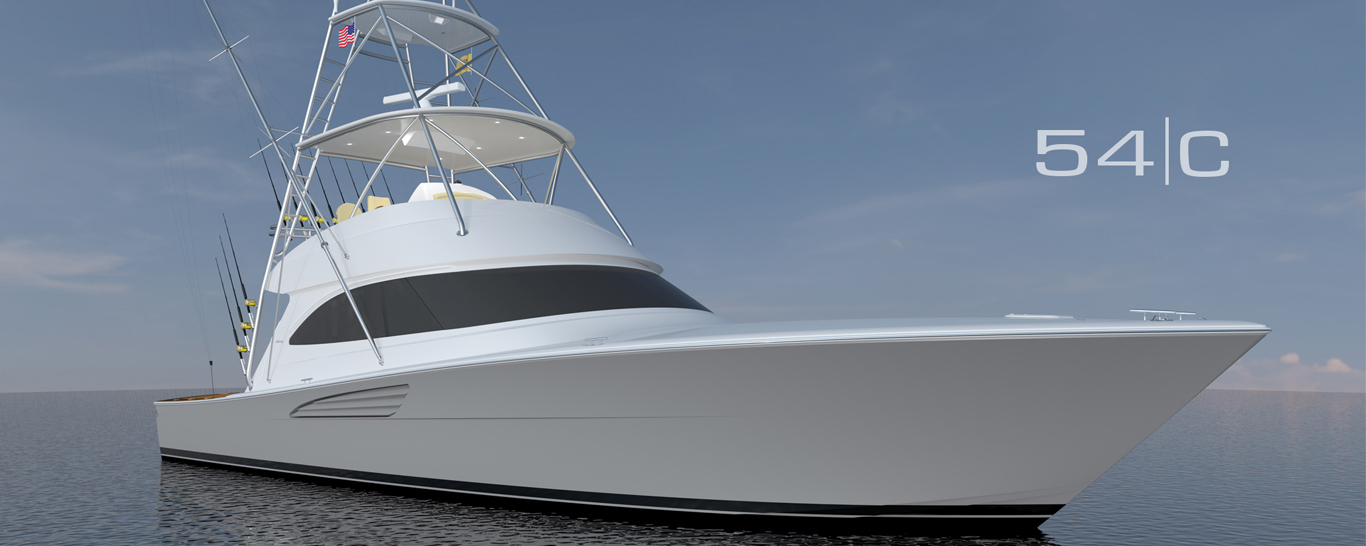
The New Viking 54 Convertible
Viking reaffirms its domination of the mid-size convertible with the new Viking 54 Convertible Following their mantra to build a better boat every day, Viking has consistently brought new and exciting yachts to you for 56 years. With multiple generations in various size ranges, their commitment to their customers and level of expertise shine through…

Best in Innovation 2020 Navetta 64
Sometimes we wonder if the real success is the one that makes you clap or the one that makes your heart beat. When talked about passion, well, the ambition could be to get both results. Thus, after having successfully overcame the initial confrontation with dealers, media and the first shipowners on board, the new Navetta…
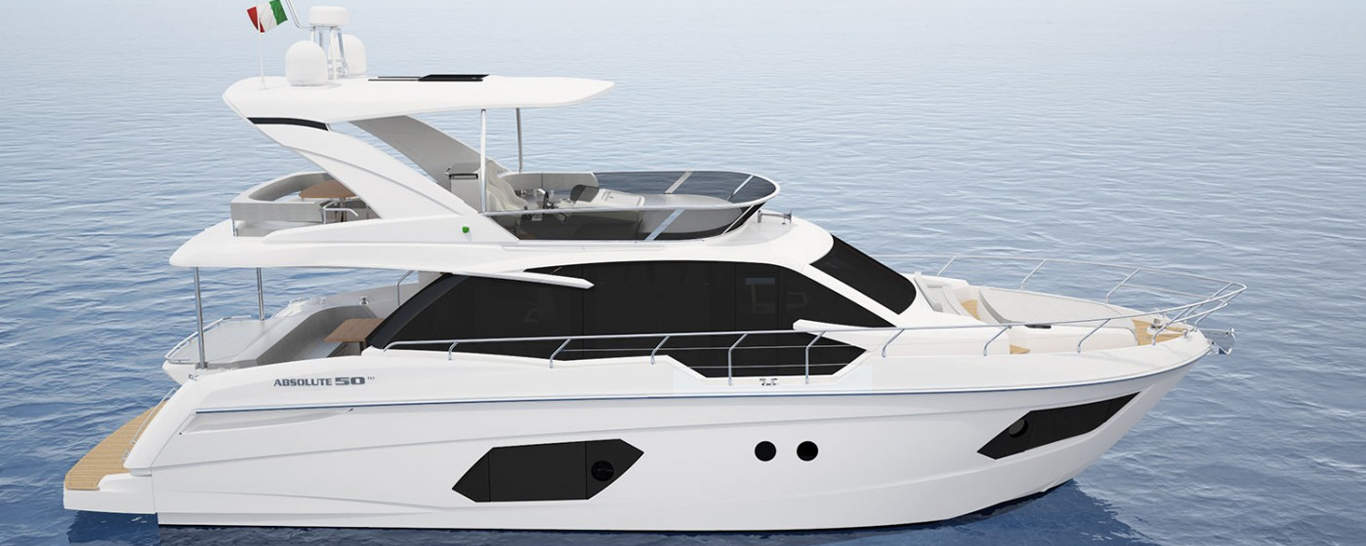
Absolute 50 Fly- The Achievement
Success, Beyond The Most Ambitious Goals With an excellent balance between size and functionality, as well as a large availability of room devised to foster comfort, Absolute 50 Fly – The Absolute Achievement – captures the essence of our ambition: offering amazing size, maximum comfort, and absolute livability. This dynamic and innovative yacht is decidedly…

Sunseeker Superyachts Explained
The largest and most opulent in the range, Sunseeker Superyachts represent the finest in Sunseeker style, design, practicality and ingenuity. Superyacht Division The Superyacht Division houses a distinctive range of yachts from 30M-50M. The division allows clients to grow through the range of superyachts with greater flexibility in terms of design and layouts. From floor…
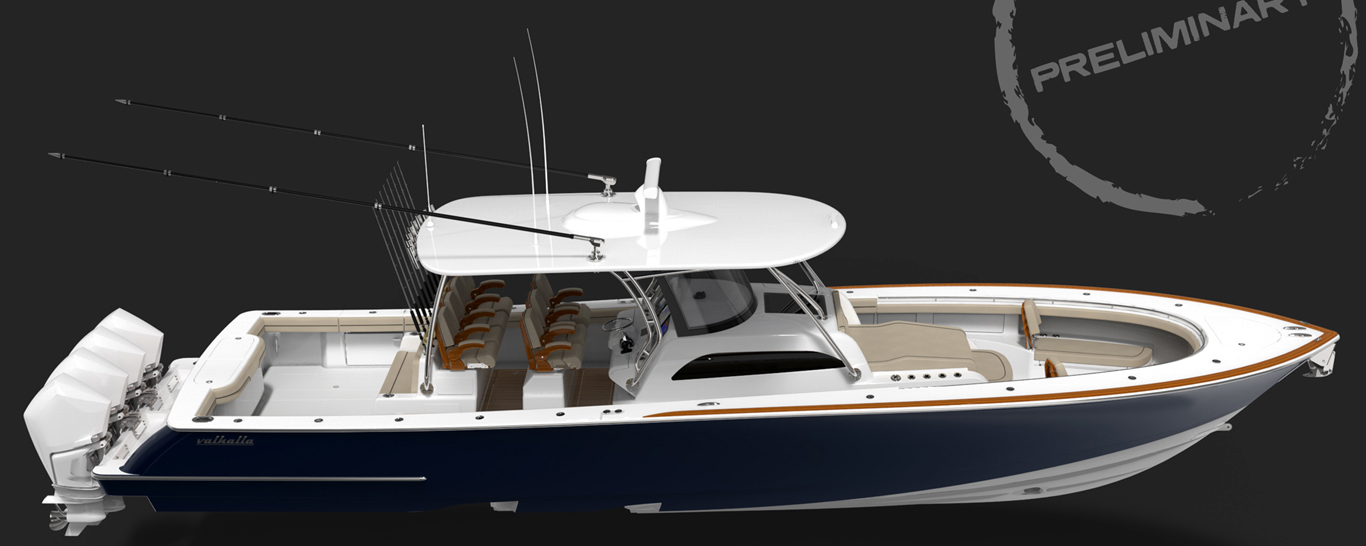
V Series Expansion: Valhalla Boatworks V-46
The V Series Expands with the Valhalla V-46 Building on the overwhelming success of the V Series high-performance luxury center consoles, the Viking Yacht Company has begun the next chapter in the evolution of the Valhalla Boatworks – the V-46. Viking announced the creation of Valhalla Boatworks (VBW) in February 2019, and introduced the first…

Mercury Awarded | Energy Efficiency
Initiatives reflect company’s belief that industry can champion significant and sustainable improvements to protect the environment Mercury Marine today was named a winner of the 2020 Energy Efficiency Excellence Award by Wisconsin’s Focus on Energy program. The award, timed to coincide with Earth Day, honors Wisconsin businesses, organizations and communities that make outstanding efforts toward…
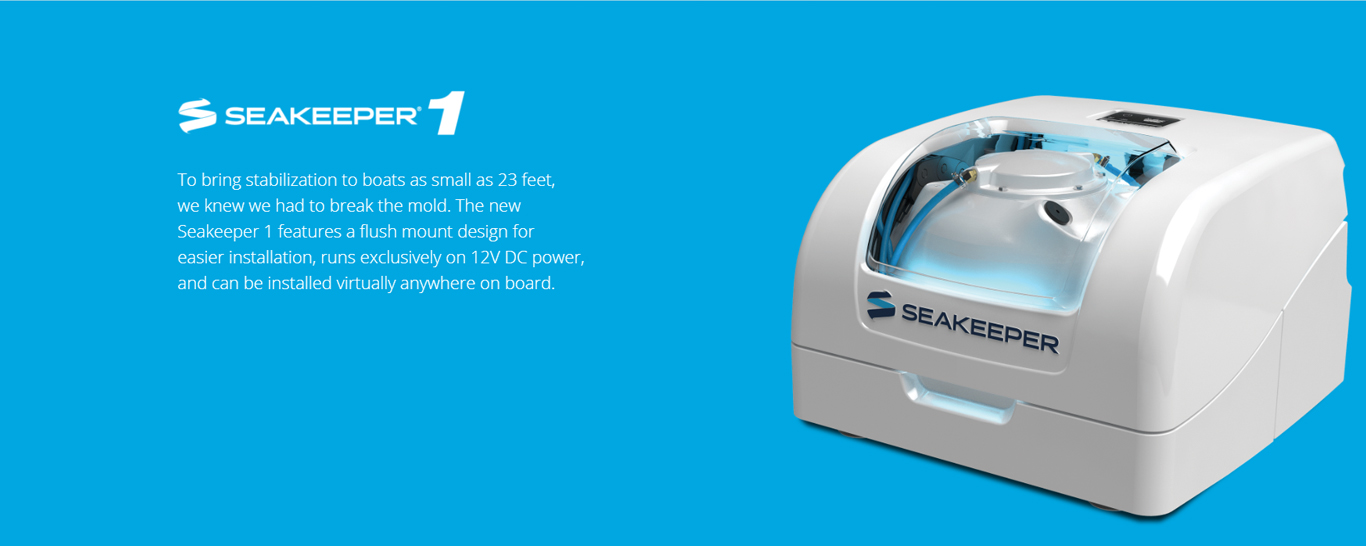
Seakeeper 1 Launches
For the first time, stabilization available for boats as small as 23′ CALIFORNIA, Md. (February 12, 2020) – Seakeeper, the leader in marine stabilization, launched its newest, smallest, and most radically different model yet, the Seakeeper 1, today at a media event before the Miami International Boat Show. The Seakeeper 1 is designed to eliminate…
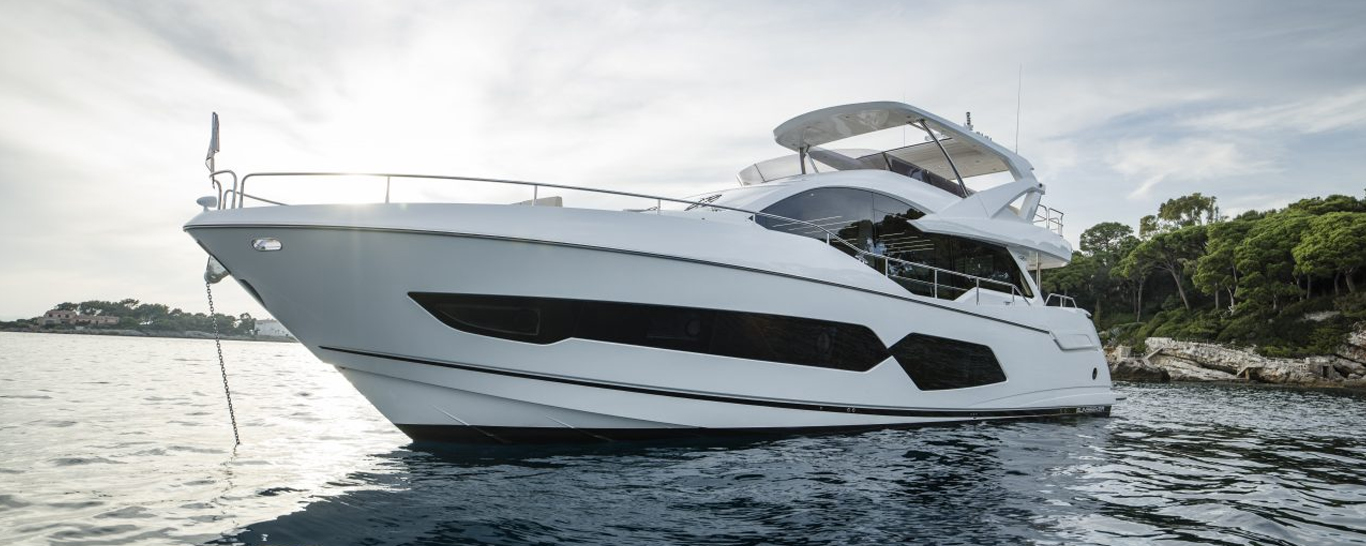
Sunseeker 76 Yacht Wins Award
Sunseeker’s 76 Yacht was announced as the winner of the ‘Flybridges over 60ft’ award at the Motor Boat Awards. Held at a glittering awards ceremony in Dusseldorf and attended by global boat brands and industry VIPs, the award was a welcome win for one of Sunseeker’s most successful models in its range. The 76 Yacht…
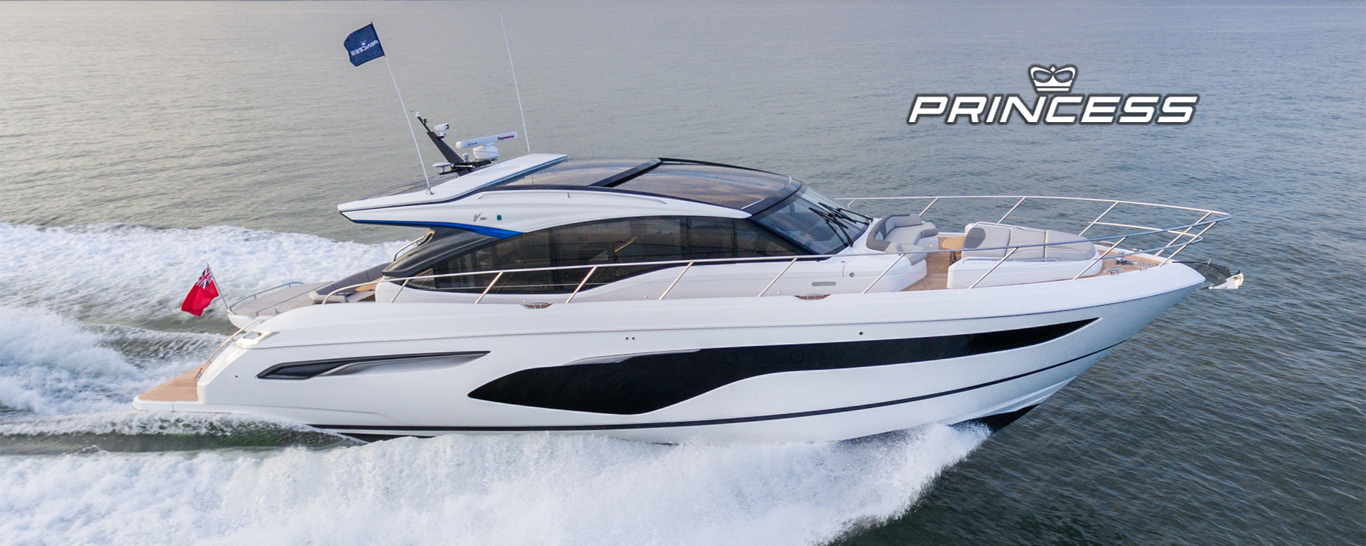
Exceptional Sales Achievement with Princess Yachts
Team JBYS Recognized in England Team JBYS was recognized in England today, at the Princess dealer meeting, for our Exceptional Sales Achievement with Princess Yachts America as the #2 Dealership of Excellence in the United States! Incredible work on behalf of every crew member at Jefferson Beach Yacht Sales whose genuine standards of excellence across all…

Seakeeper Serious About Small Boats
Multiple efforts confirm commitment to making stabilization a reality for all boaters With the goal to stabilize every boat on the water, Seakeeper, the leader in marine stabilization, is taking large strides to make that goal a reality. There is no one-size-fits-all guide to stabilization, but one thing is certain – the smaller the boat,…
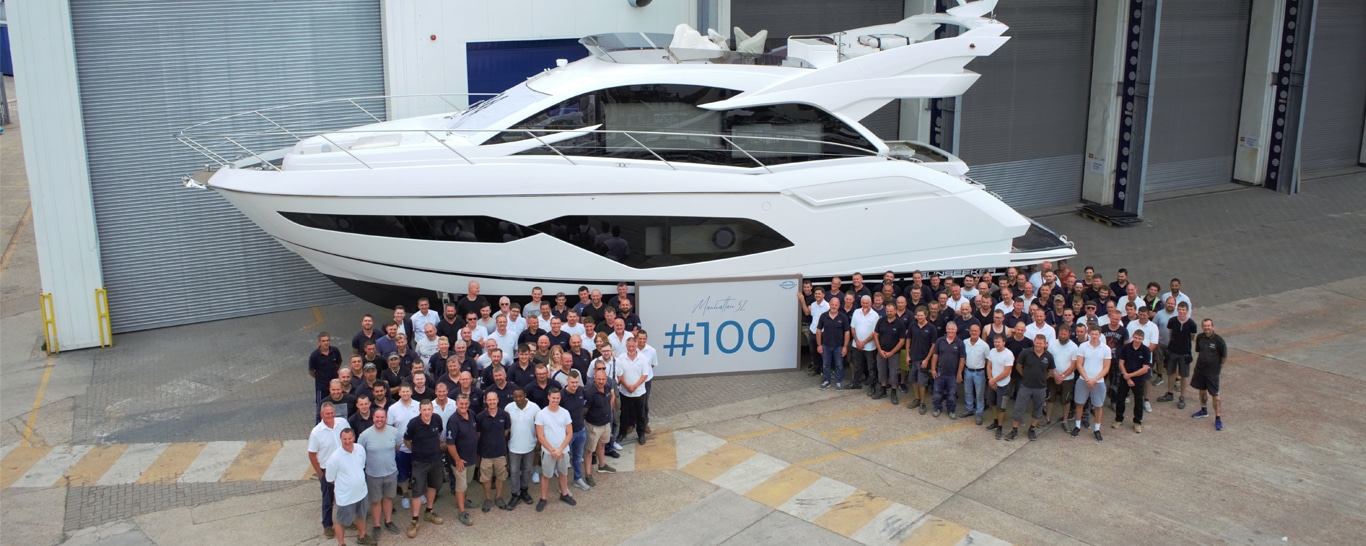
100th Sunseeker 52 Manhattan
100TH SUNSEEKER MANHATTAN 52 UNDERLINES ITS PLACE IN HISTORY Fastest selling model in the company’s history reaches a key milestone As of July 2019 JBYS has sold six 52 Manhattans! Sunseeker International is celebrating the production of 100 Manhattan 52s today, a very important milestone for the fastest selling model in the company’s history. The talented…

Princess Best Flybridge Up to 60′
Princess Wins Best Flybridge up to 60′ at 2019 Motor Boat Awards Princess is delighted to announce that the Princess F55 has won the 2019 Motor Boat Award for Best Flybridge up to 60ft. The awards are hosted by Motor Boat & Yachting magazine and are judged on the boat’s design, ability and value for money in…

Valhalla Pricing Announced
Valhalla Boatworks announces V-Series Pricing This new breed of center consoles sets evolutionary standards in performance, engineering, quality and fishing capabilities. Built by the Viking Yacht Company, Valhalla Boatworks was developed to fulfill a strong desire for high-end center console which is equally adept and equipped for coastal or offshore missions. The V series consists…

Braithwaite Brothers Receive Award
The pioneering brothers behind Sunseeker International were awarded the coveted Outstanding Achievement award at the 2018 Luxury Briefing Awards, held at The Savoy Hotel in London on Monday evening. In recognition of a combined career spanning more than 100 years, Robert and John Braithwaite’s remarkable story is one of innovation, daring, perseverance and the unwavering desire to create the finest luxury performance motor yachts in…

HCB Signs JBYS
HCB SIGNS JEFFERSON BEACH YACHT SALES AS LATEST ANNEX. HCB Center Console Yachts™ continued to enjoy traction in its new factory partner business model with the signing of Jefferson Beach Yacht Sales (JBYS). HCB creates custom, offshore center console yachts ranging from 39 to 53 feet, with a new 65-foot model debuting at the Fort…

Absolute 58 Fly Best in its Class
The “Asia Boating Awards” had already awarded Absolute in 2017, attributing to the Absolute 50 Fly, novelty of the nautical season 2016-2017, the “Best Flybridge Yacht up to 55 feet” award. A few days ago, another novelty of the Italian shipyard stepped to the podium: the Absolute 58 Fly has been proclaimed at the Singapore…

Exceptional Sales Achievement
Ron Silvia Congratulations to our very own Ron Silvia for earning a Sales Award of Excellence for Exceptional Sales Achievement with Princess Yachts! Ron is responsible for the presence of numerous Princess Yachts cruising up and down the Chicago River and throughout the Great Lakes.
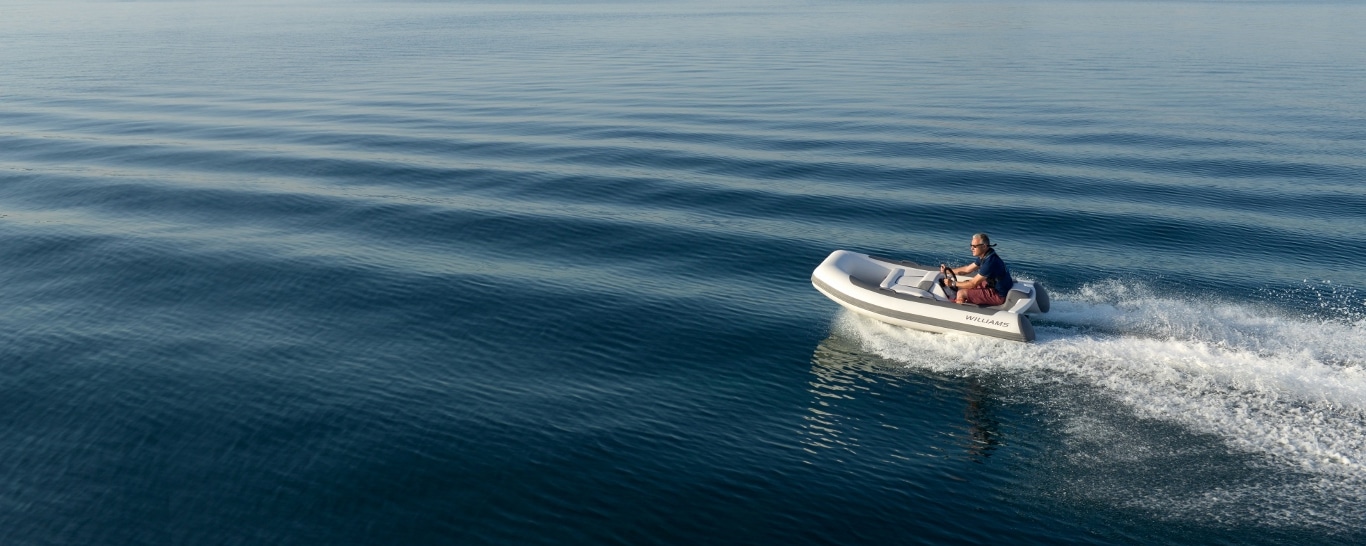
Williams Takes Order 100th MiniJet
WILLIAMS TAKES ORDER FOR 100TH MINIJET SINCE SEPTEMBER LAUNCH Williams Jet Tenders, the world’s leading jet tender manufacturer, recently took its 100th order for the new Minijet 280 following its world debut at the Cannes Yachting Festival in September. The Minijet 280 is the first in a brand new range for Williams, offering customers a smaller, lighter…
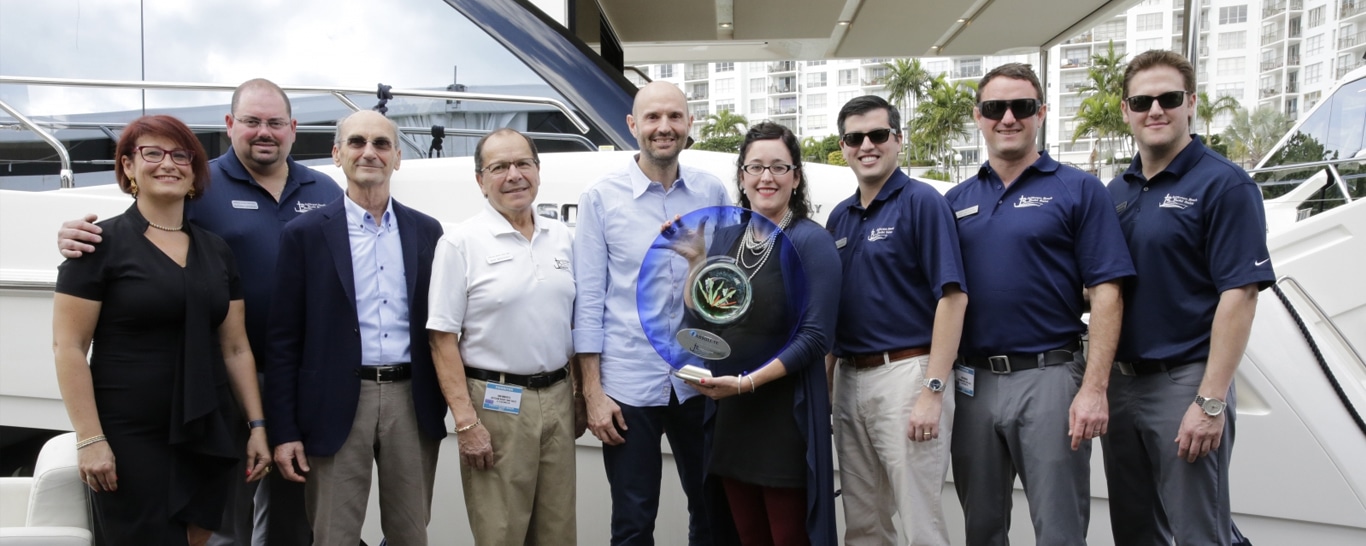
JBYS Earns Top Dealer for Absolute
Top Dealer in North America – 2016 Jefferson Beach Yacht Sales was awarded the 2016 Top Dealer in North America for Absolute Yachts at the recent Yachts Miami Beach Boat Show. As presented by the Absolute Ownership, JBYS won “for the passion, energy and enthusiasm deployed while introducing the Absolute brand into their region, where…

JBYS 5th Earns Distributor Award
Praise from Sunseeker International Once again, Jefferson Beach Yacht Sales has earned a Distributor of the Year Award from Sunseeker International! This is our 5th experience receiving such an award, and this time our award was given in recognition of annual SALES GROWTH. It was with great pleasure and pride that Greg Krueger, JBYS President, and…
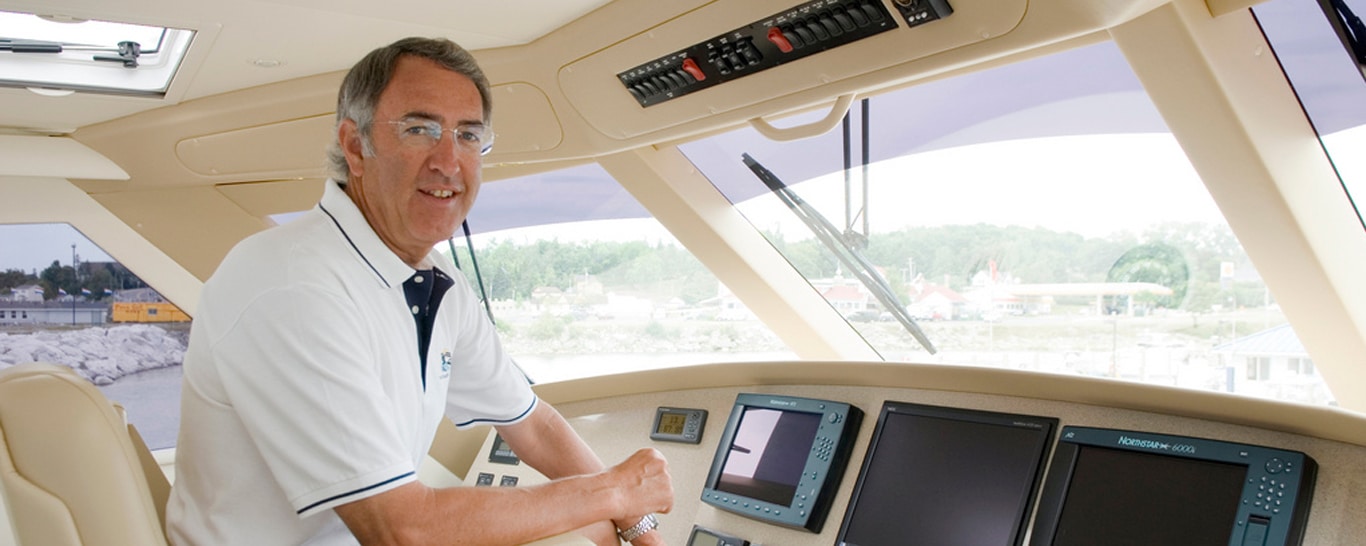
Greg Inducted | MBIA Hall of Fame
JBYS President, Greg Krueger, was inducted into the Michigan Boating Industry Association (MBIA) Hall of Fame on December 1, 2011. “Greg has made great contributions to the MBIA and our industry during his time on the Board and throughout his life,” said MBIA President, John Ropp. “We owe a great deal of gratitude to Greg for…

JBYS Earns Sunseeker Award
Delivering the BEST IN THE WORLD Customer Service Once again, Jefferson Beach Yacht Sales has earned a Sunseeker Distributor of the Year Award from Sunseeker International in recognition of our achievements to deliver BEST IN THE WORLD customer service! It was with great pleasure and pride that JBYS president, Greg Krueger, accepted the 2011 award from Robert Braithwaite,…

JBYS Achieves Sunseeker Service Award
Distributor of the Year – Bronze Award We are please to report receipt of a Distributor of the Year Bronze Award in recognition of our achievements to deliver BEST IN THE WORLD customer service from Sunseeker Yachts. Presented to us on our very own piece of Royal Doulton, this award is a true honor – and…
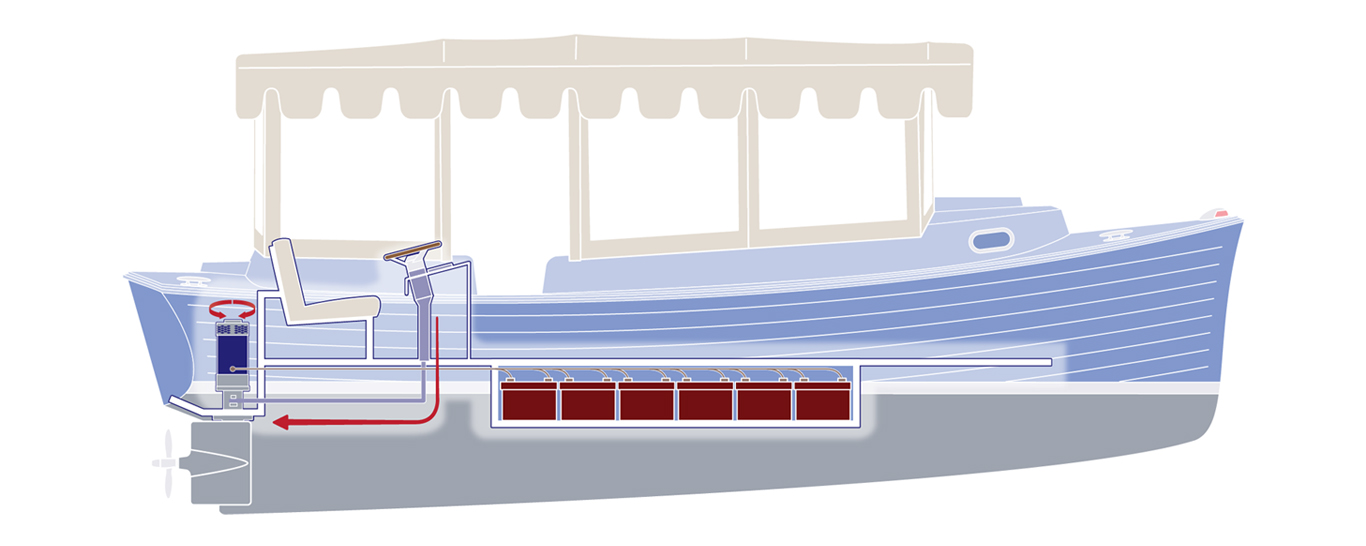
THE DUFFY POWER RUDDER™
Our patented Duffy Power Rudder is yet another example of what sets Duffy apart from any other electric boat company out there. The Duffy Power Rudder was meticulously designed and built over a period of nearly 10 years using the knowledge we had accumulated from 30 years of prior experience building electric boats. The result is something that we are…
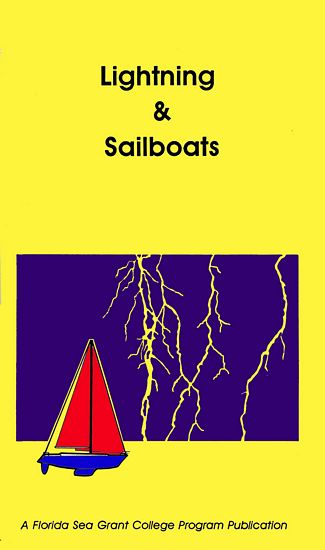
Source: Ewen M Thompson. Lightning and Boats, University of Florida Sea Grant. www.thomson.ece.ufl.edu/lightning
Great choice! Your favorites are temporarily saved for this session. Sign in to save them permanently, access them on any device, and receive relevant alerts.
- Sailboat Guide
Lightning is a 18 ′ 11 ″ / 5.8 m monohull sailboat designed by Sparkman & Stephens and built by Clark Boat Company, Lippincott Boat Works, Nickels Boat Works, Inc., Allen Boat Co., Helms - Jack A. Helms Co., J.J. Taylor and Sons Ltd., Lockley Newport Boats, Skaneateles Boat & Canoe Co., Mobjack Manufacturing Corp., Siddons & Sindle, Loftland Sail-craft Inc., and Eichenlaub Boat Co. starting in 1938.

Rig and Sails
Auxilary power, accomodations, calculations.
The theoretical maximum speed that a displacement hull can move efficiently through the water is determined by it's waterline length and displacement. It may be unable to reach this speed if the boat is underpowered or heavily loaded, though it may exceed this speed given enough power. Read more.
Classic hull speed formula:
Hull Speed = 1.34 x √LWL
Max Speed/Length ratio = 8.26 ÷ Displacement/Length ratio .311 Hull Speed = Max Speed/Length ratio x √LWL
Sail Area / Displacement Ratio
A measure of the power of the sails relative to the weight of the boat. The higher the number, the higher the performance, but the harder the boat will be to handle. This ratio is a "non-dimensional" value that facilitates comparisons between boats of different types and sizes. Read more.
SA/D = SA ÷ (D ÷ 64) 2/3
- SA : Sail area in square feet, derived by adding the mainsail area to 100% of the foretriangle area (the lateral area above the deck between the mast and the forestay).
- D : Displacement in pounds.
Ballast / Displacement Ratio
A measure of the stability of a boat's hull that suggests how well a monohull will stand up to its sails. The ballast displacement ratio indicates how much of the weight of a boat is placed for maximum stability against capsizing and is an indicator of stiffness and resistance to capsize.
Ballast / Displacement * 100
Displacement / Length Ratio
A measure of the weight of the boat relative to it's length at the waterline. The higher a boat’s D/L ratio, the more easily it will carry a load and the more comfortable its motion will be. The lower a boat's ratio is, the less power it takes to drive the boat to its nominal hull speed or beyond. Read more.
D/L = (D ÷ 2240) ÷ (0.01 x LWL)³
- D: Displacement of the boat in pounds.
- LWL: Waterline length in feet
Comfort Ratio
This ratio assess how quickly and abruptly a boat’s hull reacts to waves in a significant seaway, these being the elements of a boat’s motion most likely to cause seasickness. Read more.
Comfort ratio = D ÷ (.65 x (.7 LWL + .3 LOA) x Beam 1.33 )
- D: Displacement of the boat in pounds
- LOA: Length overall in feet
- Beam: Width of boat at the widest point in feet
Capsize Screening Formula
This formula attempts to indicate whether a given boat might be too wide and light to readily right itself after being overturned in extreme conditions. Read more.
CSV = Beam ÷ ³√(D / 64)
One of the most popular one-design classes in the US since the 1940’s. But fleets also exist in other parts of the world. Although originally designed for wood planked construction, nearly all boats since the early 1960’s have been built of fiberglass. Ballast above is max weight of centerboard.
Embed this page on your own website by copying and pasting this code.
- About Sailboat Guide
©2024 Sea Time Tech, LLC
This site is protected by reCAPTCHA and the Google Privacy Policy and Terms of Service apply.
Watch CBS News
Carnival cruise ship catches fire for the second time in 2 years
By Emily Mae Czachor
Updated on: March 25, 2024 / 9:57 AM EDT / CBS News
A Carnival cruise ship will be out of commission for repairs for at least a week after its exhaust funnel caught fire and partially collapsed Saturday during a trip to the Bahamas. It marked the second time in just under two years that the funnel on this same ship, the Carnival Freedom, went up in flames while carrying passengers.
What caused the most recent incident is still being investigated, according to the cruise company. No one on board the ship was injured, but Carnival said two fire crew members were treated for minor smoke inhalation.
The Carnival Freedom left from Port Canaveral, Florida, on Thursday and was supposed to travel for several days through the Bahamas before returning Monday to Port Canaveral. It was not immediately clear how many passengers and crew were on board the Freedom when the fire erupted, but the cruise ship can accommodate 2,980 guests and 1,150 crew members at capacity. CBS News contacted Carnival for more information.
The ship initially reported a fire at around 3:15 p.m. EDT on Saturday, on the port side of the ship's exhaust funnel as it sailed 20 miles off of the Bahamas' Eleuthera Island en route to Freeport, the company said in a statement. It had changed course to turn toward Freeport, at the northern tip of the island chain, after cancelling a stop farther south in Princess Cays because of bad weather. Eyewitnesses said that a lightning strike may have sparked the fire, a claim that Carnival said "is being investigated but cannot yet be confirmed."
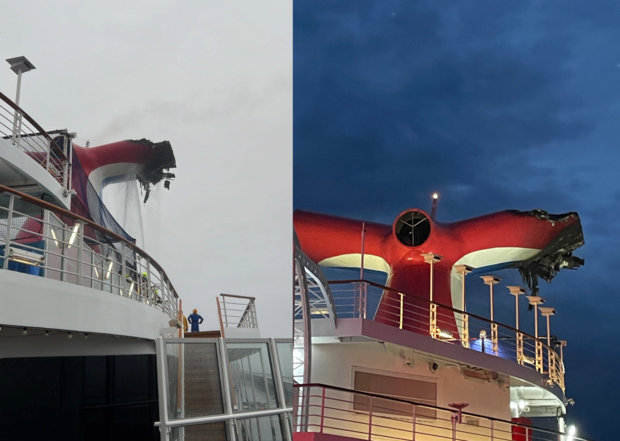
A fire response team was activated quickly to put out the blaze once it broke out, as the Freedom's captain shifted the cruise liner toward the heavy rain nearby in hopes that would help. The fire was extinguished by 5:20 p.m., Carnival said, including flames from a portion of the funnel that broke off and fell onto one of the ship decks. Funnels are essentially used as smokestacks or chimneys to expel fumes and engine exhaust.
The U.S. Coast Guard said the Carnival Freedom crew was able to extinguish the fire Saturday without their help. They were aware of the fire, though, and issued a Captain of the Port order to the cruise ship before it was scheduled to enter Port Canaveral, Florida, on Monday. Captain of the Port orders are broad mandates that the Marine Safety and Security Council describes as a tool granting Coast Guard crews "with operational controls over an emergent situation posing safety, security, or environmental risks."
"We are continuing to monitor the situation," the Coast Guard said in a statement.
Although Carnival said at first that it did not expect the fire to impact trips on the Freedom cruise set to depart Port Canaveral on Monday and Friday, a technical assessment carried out in Freeport on Sunday revealed more significant damage to the ship than they originally thought. The damage would "require an immediate repair to stabilize the funnel" after disembarking guests in Port Canaveral on Monday, the company said in an updated statement following the assessment.
"The funnel has been stabilized for the ship's return to Port Canaveral overnight to disembark guests, and then it will go to the Freeport shipyard on Monday afternoon to begin the required repairs," Carnival said on Sunday. "We sincerely regret the impact to our embarking guests, as we know they have been looking forward to their spring break vacation."
Both Carnival Freedom cruises scheduled for this week have been cancelled. Carnival said guests who had booked those cruises would receive full refunds and future cruise credits.
The Carnival Freedom's exhaust funnel last went up in flames less than two years ago, in May 2022. It was in Grand Turk at the time, during a planned five-day trip from Port Canaveral. The ship had 2,504 guests and 972 crew on board, Carnival said at the time. None of the passengers or crew were hurt.
- Cruise Ship
Emily Mae Czachor is a reporter and news editor at CBSNews.com. She covers breaking news, often focusing on crime and extreme weather. Emily Mae has previously written for outlets including the Los Angeles Times, BuzzFeed and Newsweek.
More from CBS News
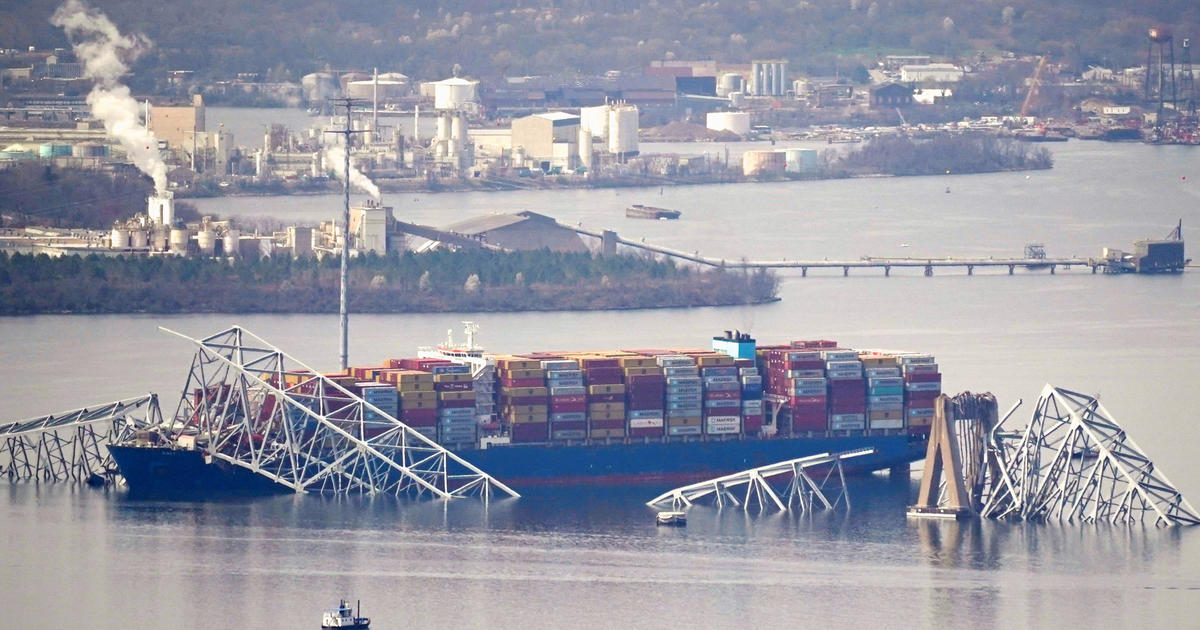
What to know about the Key Bridge collapse in Baltimore
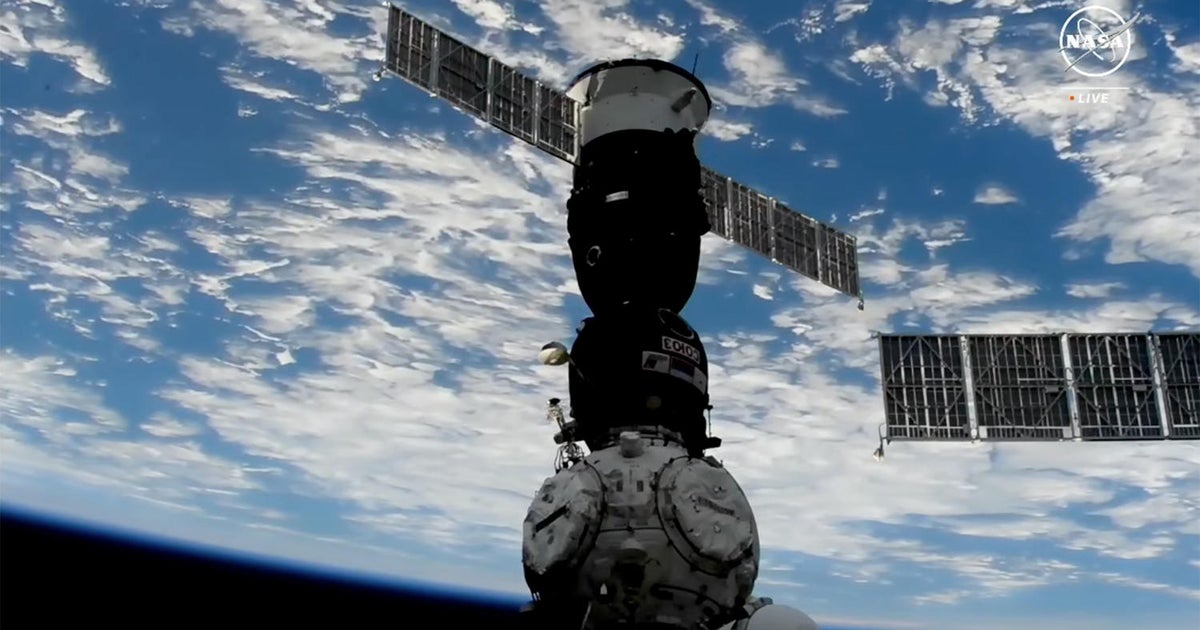
Soyuz crew docks at space station after 2-day rendezvous

Russia observes national day of mourning as concert hall attack death toll climbs
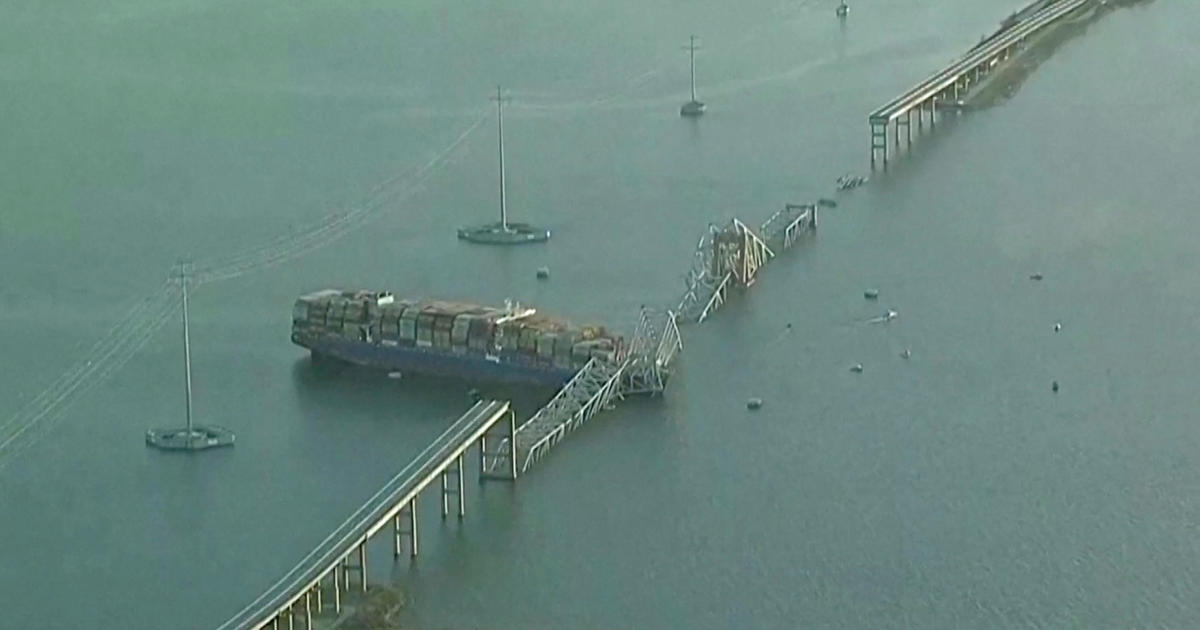
Maps and video show site of bridge collapse in Baltimore

- Rivers and Lakes
- Severe Weather
- Fire Weather
- Long Range Forecasts
- Climate Prediction
- Space Weather
- Past Weather
- Heating/Cooling Days
- Monthly Temperatures
- Astronomical Data
- Beach Hazards
- Air Quality
- Safe Boating
- Rip Currents
- Thunderstorms
- Sun (Ultraviolet Radiation)
- Safety Campaigns
- Winter Weather
- Wireless Emergency Alerts
- Weather-Ready Nation
- Cooperative Observers
- Daily Briefing
- Damage/Fatality/Injury Statistics
- Forecast Models
- GIS Data Portal
- NOAA Weather Radio
- Publications
- SKYWARN Storm Spotters
- TsunamiReady
- Service Change Notices
- Be A Force of Nature
- NWS Education Home
- Pubs/Brochures/Booklets
- NWS Media Contacts
NWS All NOAA
- Organization
- Strategic Plan
- Commitment to Diversity
- For NWS Employees
- International
- National Centers
- Social Media
- Strong winds and widespread blowing dust sweep across West Texas (March 24th)
- Rounds of cool mid-March rain (March 15th-17th)
- Spring Outlook: Warmer for most of U.S., wetter in the Southeast
- Two days of wind, dust and critical fire weather (February 26th-27th)
- Leap day starts off wet, and wintry for some (February 29th)
- The latest regional and national road conditions
Privacy Policy
Lubbock, TX
Weather Forecast Office
Strong winds and widespread blowing dust blanket West Texas (24 March 2024)
- Submit a Storm Report
- Local Hazardous Weather Outlook
- Latest Storm Reports
- Storm Prediction Center
- Experimental Graphical Hazardous Weather Outlook
- Surface Observations
- Observed Precipitation
- West Texas Mesonet
- Local Data Links
- Road Conditions
- Observed Snowfall
- National Snowfall Analysis
- Local Enhanced Lubbock Radar
- Local Standard Lubbock Radar (low bandwidth)
- Regional Standard Radar (low bandwidth)
- National Standard Radar (low bandwidth)
- Hourly View
- Activity Planner
- Forecaster's Discussion
- Winter Weather (Experimental)
- Area River & Lake Levels
- Precipitation Analysis
- Additional Precipitation Analysis
- West Gulf River Forecast Center
- Arkansas/Red Rivers Forecast Center
- Lubbock Area Reservoir Information
- Drought (local)
- Local Drought Information Statements
- Additional Local Data
- Local Calendar
- Weather Event Archive
- Science and Local Research
- Fire Weather Research
WFO Lubbock's Winds Reports for March 24, 2024
Wfo midland's wind reports from march 24, 2024.
Quick Links West Texas Weather Roundup
Radar Lubbock Amarillo Midland United States Worldwide
Social Media Facebook Twitter YouTube
Local Climate Local Climate Products Historical Station Data
Global Climate El Nino/Southern Oscillation NOAA Climate Prediction Center NASA Climate Climate Change Information
Education Jetstream Lightning Safety Flood Safety Heat Safety Fire Weather Safety Wind Safety Winter Safety For Kids Class Materials
US Dept of Commerce National Oceanic and Atmospheric Administration National Weather Service Lubbock, TX 2579 S. Loop 289 Suite 100 Lubbock, TX 79423-1400 806-745-4260 Comments? Questions? Please Contact Us.
- Hillsborough
How the Baltimore bridge collapse compares to the fall of the Sunshine Skyway
- Jay Cridlin Times staff
Americans awoke Tuesday to images from a devastating scene in Baltimore , where a cargo ship rammed overnight into a major bridge, crumpling the road and sending cars into the water.
For some in the Tampa Bay region, the scene conjured memories of the biggest bridge disaster in local history: The collapse of the Sunshine Skyway bridge after it was hit by a freighter in 1980.
Though they occurred 44 years apart, it’s hard to shake the similarities between both tragedies. Here’s how they compare.
Both opened in the 1970s
The original Skyway was a two-lane bridge that opened in 1954. It was expanded to two bridges — one northbound, one southbound — in 1971. It was the newer, southbound bridge that collapsed in 1980.
Baltimore’s Francis Scott Key Bridge opened in 1977, just a few years after the southbound Skyway.
But in its own way, the southbound Skyway was a full generation older than the Key. It was built with similar specs to the 1954 original. Those bridges had a clearance underneath of just around 150 feet, whereas the Key’s clearance was around 185 feet — close to that of the current Skyway.
Stylistically similar, structurally different
With its towering yellow suspension cables, the modern Sunshine Skyway bears little resemblance to the Key Bridge. But the original looked more similar, with webs of steel trusses at the middle.
The first Skyway was a cantilever bridge, with arms that spanned outward from support pylons farther from the middle. One benefit of this style is that a direct hit to a pylon won’t necessarily take down the entire bridge — just the span stretching out.
The Key Bridge, however, is a continuous truss bridge, which relies on connective support from span to span, truss to truss. It’s efficient engineering, but it also means that when one support element goes out, the rest of the bridge likely will, too. Indeed, videos of the disaster at the Key Bridge — one of the longest continuous truss bridges in the world — show the whole thing dropping into the water within seconds.
What went wrong
The Skyway crash occurred on a stormy Friday morning. John Lerro, the harbor pilot captaining the 19,734-ton Summit Venture, said he couldn’t see where he was going and didn’t have an up-to-the-minute weather forecast as he approached. It was only as he came to within a few hundred feet of the bridge that he got his bearings and realized he was outside the shipping channel, with the wind pushing him astray.
Spend your days with Hayes
Subscribe to our free Stephinitely newsletter
You’re all signed up!
Want more of our free, weekly newsletters in your inbox? Let’s get started.
“The radar was out; the visuals were out,” Lerro said in 1990. “I ought to have put the ship aground.”
Weather did not appear to be an issue in Baltimore. Video of the collapse shows the 948-foot ship, christened the Dali, slowly approaching a pylon, its lights briefly shutting off, cars passing overhead, the water fairly still.
Maryland Sen. Ben Cardin told the Baltimore Sun that the ship apparently lost power, which shut down its steering.
Crash and collapse
In both Baltimore and St. Petersburg, the ships approached slowly, inevitably, with pilots unable to right their steering paths before impact.
“It takes an incoming ship of that size — of any size basically — a full mile to come to a complete stop,” said Bill DeYoung, the St. Petersburg author of “Skyway: The True Story of Tampa Bay’s Signature Bridge and the Man Who Brought it Down.”
“Harbor pilots will tell you you have to make decisions way in advance. You have to have your next six moves already in your mind and make them in advance,” DeYoung said.
The Key fell almost instantly into the water. The Skyway’s collapse also unfolded quickly, though some drivers had time to hit their brakes or slam into reverse. One driver in St. Petersburg would later compare the sight of headlights plunging into the water to “Roman candles on the Fourth of July.”
Recovery and aftermath
Thirty-five people died in the Skyway collapse. By mid-morning Tuesday, authorities in Maryland had recovered at least two survivors from the cold Patapsco River. They still were searching for at least a half-dozen more.
Investigators exonerated Lerro for decisions he made as the Summit Venture’s pilot, though the tragedy haunted him until his death in 2002 due to complications from multiple sclerosis.
“There’s a lot of armchair quarterbacking about what Lerro did and what Lerro could have done,” DeYoung said, “but I think people who do that don’t take into account all the circumstances he faced.”
To replace the fallen Skyway, Florida leaders debated options ranging from a tunnel to a bridge rebuilt with the same specs as the original. A new cable-stayed Skyway, inspired by the Brotonne Bridge in France, opened in 1987.
Engineers added several key safety measures designed to prevent a similar crash, including island-like mounds of rocks shoring up the tallest supports and huge, disc-like structures called dolphins that act as bumpers protecting the bridge from wayward ships. The main span was moved about 1,000 feet east to smooth out a dogleg left turn for ships entering Tampa Bay.
Like a lot of older continuous truss bridges, the Francis Scott Key Bridge did not have similar safety measures in place.
Replacing the Francis Scott Key Bridge, a key commuter corridor and gateway to a major port, won’t take as long as it took to rebuild the Sunshine Skyway. When a similar truss bridge collapsed in Minneapolis, Minnesota in 2007, a sturdier replacement opened just over a year later.
President Joe Biden said that once search and rescue efforts wrap up, local, state and U.S. officials would “send all the federal resources” and “move heaven and earth” to restore the bridge “as soon as humanly possible.”
Jay Cridlin is a reporter covering politics. He can be reached at [email protected].
MORE FOR YOU
- Advertisement
ONLY AVAILABLE FOR SUBSCRIBERS
The Tampa Bay Times e-Newspaper is a digital replica of the printed paper seven days a week that is available to read on desktop, mobile, and our app for subscribers only. To enjoy the e-Newspaper every day, please subscribe.
Carnival Cruise ship catches fire after possible lightning strike
The cruise line said damage to the ship is "more than we first thought" and will require immediate repair to stabilize the funnel. cruises scheduled to depart from port canaveral on march 25th and march 29th have been canceled..
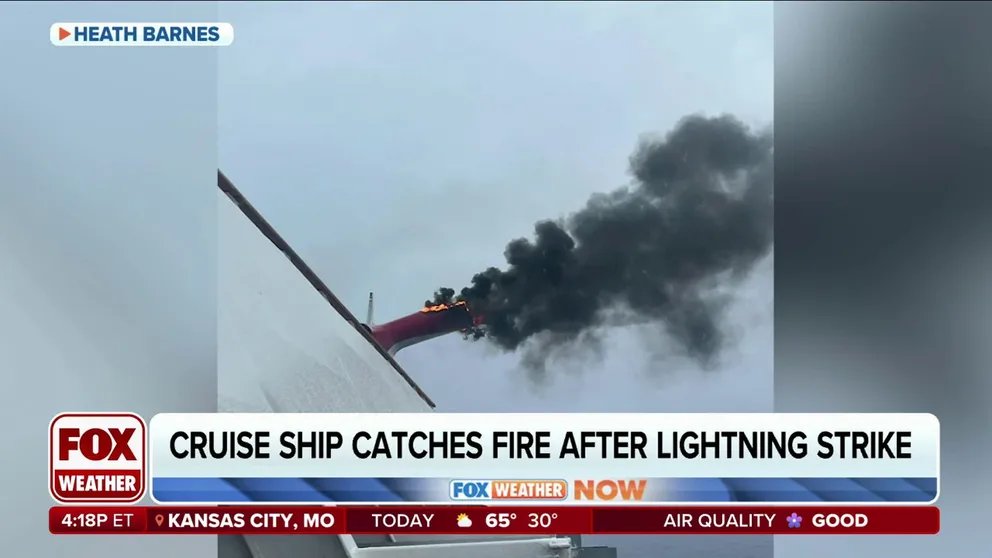
Heath Barnes was a passenger on the Carnival Freedom ship when the boat's exhaust funnel caught fire during a thunderstorm. The ship is back at Port Canaveral for repairs.
PORT CANAVERAL, Fla. – The Carnival Freedom ship caught fire Saturday near the Bahamas after passengers reported a lightning strike on the boat during a thunderstorm .
Carnival Cruise Line said the crew reported a fire on the port side of the ship's exhaust funnel around 3:15 p.m. Saturday. The ship was 20 miles off Eleuthera Island in the Bahamas, sailing to Freeport after being unable to dock at Princess Cay due to weather conditions.
"Our onboard team acted quickly to contain and put out the fire," Carnival Cruise Line said. "While we continue to investigate multiple eyewitness reports of a lightning strike, our technical team completed a thorough assessment during the ship’s visit to Freeport on Sunday."
LIGHTNING FATALITIES WERE SECOND LOWEST ON RECORD IN 2023, SAFETY COUNCIL SAYS
Around the time of the fire, radar showed a storm cell over the area and a lot of lightning activity.
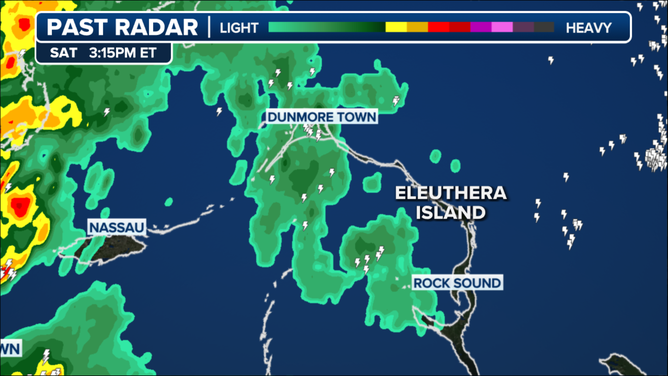
Radar at 3:15 p.m. on March 23 when a Carnival Cruise ship was possibly hit by lightning.
(FOX Weather)
Multiple passenger videos show flames and dark smoke billowing from the exhaust funnel as rain continues to pour onto the deck.
Passenger Heath Barnes said the ship was supposed to dock at Princess Cay on Saturday about 9 a.m., but passengers were told that the boat would continue to Freeport due to strong winds .
During the afternoon, the rain returned, and passengers reported hearing loud thunder and then seeing the smoke. Soon after, guests were told to remain in their cabins.

Smoke and flames coming from the exhaust funnel of the Carnival Freedom cruise ship on Saturday, March 23, 2024.
(@breezebreeze_ via Storyful)
"Why is our tail on fire?" someone can be heard saying in the video recorded by Barnes. "That's not good, y'all."
On Monday, Carnival Freedom returned to Port Canaveral , where guests disembarked.
The cruise line said damage to the ship is "more than we first thought" and will require immediate repair to stabilize the funnel. Cruises scheduled to depart from Port Canaveral on March 25th and March 29th have been canceled. All guests on the canceled trips will receive a full refund and a 100% future cruise credit.
FOX Business reported that the same cruise ship caught on fire in 2022 after being struck by lightning.
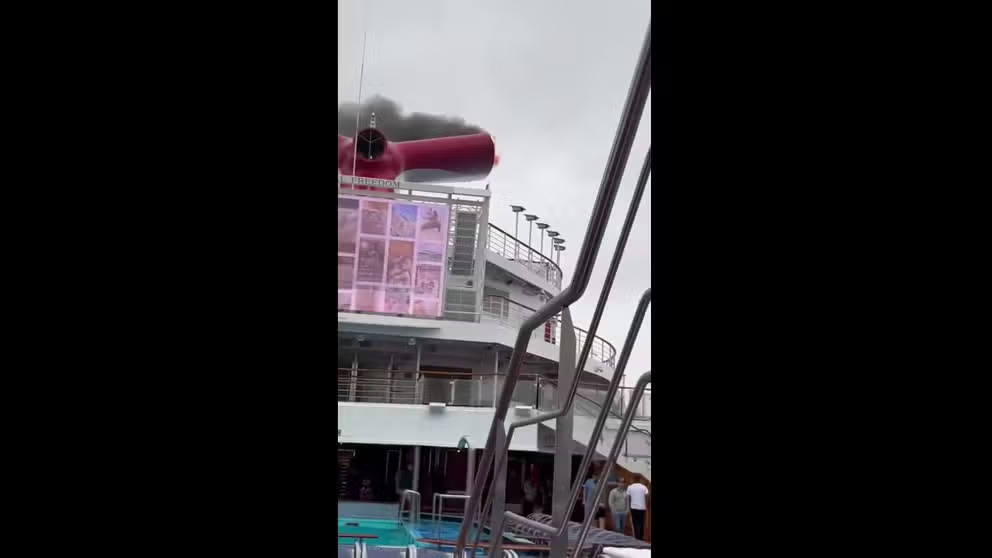
Carnival Freedom cruise ship on fire
Video shows smoke and flames coming from the Carnival Freedom exhaust funnel on Saturday after a possible lightning strike. (video credit: Credit: @breezebreeze_ via Storyful)
Another video recorded on Saturday by X user @breezebreeze showed the fire on the ship.
"Carnival Freedom on fire AGAIN!!" they wrote on X.
- Extreme Weather
- Thunderstorms

IMAGES
COMMENTS
In salt water this needs a minimum area of 0.1m². In fresh water, European standards call for the grounding terminal to be up to 0.25m². A grounding terminal must be submerged under all operating conditions. An external lead or iron keel on monohull sailing boats can serve as a grounding terminal.
Take a fix and plot it on a paper chart. Update your log using dead reckoning. Avoid touching metal around the boat, such as shrouds and guardrails. A nearby strike will be blindingly bright. Sit ...
TAGS: Safety. According to US insurance claims (from BoatUS Marine Insurance) the odds of a boat being struck by lightning in any year are about 1 per 1,000, increasing to 3.3 per 1,000 in ...
The likelihood of your boat being struck by lightning depends on a number of factors. Not surprisingly, sailboats are more likely to get hit by lightning than power boats. According to data, sailboats generally have a 155% greater chance of being strike by lightning than powerboats (40 out of 10,000 for sailboats, as opposed to 5 out of 10,000 ...
Plug the hole, get the bilge pumps running, work the bail bucket — whatever it takes to stay afloat. An emergency call on the VHF is warranted if the situation is dire. If the radio is toast, break out the flare kit. Lightning seeks the highest point, and on the water that's the top of the boat. Boating Magazine.
Key Components of a Boat's Lightning Protection System: Wiring, Air, and Ground Terminals. Bonding systems are typically designed to prevent corrosion, however, when used in conjunction and compliant with a lightning protection system, they can improve safety and reduce damage. Bonding systems connect underwater metals, deck gear, spars ...
If shore is out of reach, the advice is to drop anchor, remove all metal jewelry, put on life jackets and get low in the center of the boat. Definitely stay out of the water and stow the fishing rods. If all goes well, the storm will blow past or rain itself out in 20 to 30 minutes.
Lightning strike - how do you protect your boat? - Sailing Ep 187A
While protecting your boat against lightning strikes is advisable to cruisers, especially those that sail in areas that are prone to lightning strikes, the best way to avoid damage from lightning is to avoid lightning altogether. One tool that can help coastal sailors combat a run-in with lightning is Sirius XM Satellite Weather ( siriusxm.com ...
To conduct a strike safely to "ground" (on a boat this means to the water), create a low-resistance path from the highest point on your boat to a metal grounding plate in contact with the water. Start with a solid half-inch-diameter steel or bronze rod elevated six to 12 inches above every other object on the boat.
While the recommendations in NFPA 780 have yet to be embraced by the recreational boating industry as a whole, understanding what it says — and why — may assist you in developing a lightning-protection plan for your boat. Lightning 101. The simplest way to think of a lightning strike would be as a short circuit between the cloud and the earth.
The lightning that concerns sailors is the discharge of electricity between a cloud and the surface of the earth, or an object on the surface of the earth, namely, your boat. The amount of electricity involved in lightning can be, well, astronomical. We're talking about millions of volts. Granted, the duration of a lightning strike is ...
Lightning Safety. The threat of lightning is easy to ignore on an overcast summer day, but it can kill unprepared boaters without warning. Carrying as much as 100 million volts, it can smash a hole through a hull, explode a mast, and electrocute several people in a single flash. The thunderstorms of the Chesapeake Bay pose a lightning threat ...
Sailboats are hit with lightning strikes at a rate of four per 1,000 on average. Various boats in Florida on average have a rate of 3.3 out of 1,000, so location matters. The chance of any boat being struck by lightning in a given year is one in 1,000. According to insurance claims for places like Florida that get hit with lightning strikes ...
Lightning Safety Measures for Sailboats. To minimize the risks associated with lightning strikes, sailboat owners should consider implementing various safety measures. 3.1 Importance of Lightning Protection Systems. Installing a lightning protection system on a sailboat is crucial. These systems consist of grounding, bonding, and surge ...
Lightning protection on sailboats is an un-researched area of knowledge. Most of the information is based on the theoretical physics of lightning coupled with experiential and anecdotal evidence. ... World Wide Opposition to ESE Lightning Rods from National Lighting Safety Institute, May 13, 2003. (Article dated 1999, by Abdul Mousa ...
In fact, says the Sea Grant, "there is no safe place on an unprotected small sailboat and in a protected boat only places of relative safety." * * * If the lightning factoids seem a little hard to take, take heart at Sea Grant's additional advice: "There is one place that is more hazardous than a small unprotected sailboat, it's a small ...
If you are in an open boat like a bowrider, get as low as possible in the center of the boat. Stay out of the water. A storm generally will dissipate in 20 to 30 minutes, but it is better to be safe than sorry. Rule of thumb is to wait 30 minutes after the last round of thunder before resuming boating activities.
Here are some tips to keep safe and reduce your risk of being struck by lightning while indoors. Avoid water. Do NOT bathe, shower, wash dishes, or have any other contact with water during a thunderstorm because lightning can travel through a building's plumbing. The risk of lightning travelling through plumbing might be less with plastic ...
Lightning is attracted to metal objects, increasing the risk of a strike. Stay away from tall metal structures, such as masts, antennas, and fishing rods. Seek shelter inside the cabin or a fully enclosed space on your boat. If possible, remove or lower any extendable metal objects on your vessel that could act as lightning rods.
Act as if your boat is about to be hit by lightning, as described below. Lightning The only type of lightning that need concern sailors is the ground flash, since lightning that does not reach the ground does not damage boats. Ground flashes can be expected to hit from 4-20% of moored sailboats per year in Florida.
Lightning is a 18 ′ 11 ″ / 5.8 m monohull sailboat designed by Sparkman & Stephens and built by Nickels Boat Works, Inc., Skaneateles Boat & Canoe Co., Helms - Jack A. Helms Co., Siddons & Sindle, Lippincott Boat Works, J.J. Taylor and Sons Ltd., Lockley Newport Boats, Eichenlaub Boat Co., Mobjack Manufacturing Corp., Clark Boat Company, Allen Boat Co., and Loftland Sail-craft Inc ...
Lightning Class (Int) Download Boat Record: Notes. One of the most popular one-design classes in the US since the 1940's. But fleets also exist in other parts of the world. ... A Ballast/Displacement ratio of 40 or more translates into a stiffer, more powerful boat that will be better able to stand up to the wind. Bal./Disp = ballast (lbs ...
The ship initially reported a fire at around 3:15 p.m. EDT on Saturday, on the port side of the ship's exhaust funnel as it sailed 20 miles off of the Bahamas' Eleuthera Island en route to ...
Strong winds and widespread blowing dust sweep across West Texas24 March 2024. Water vapor satellite loop valid from 3:41 pm to 8:01 pm on Sunday, 24 March 2024. A large and powerful storm system emerging from the Intermountain West, provided an overabundance of wind and dust for the southern High Plains. Winds initially increased to solidly ...
Both the original Skyway and the Key Bridge had long main spans — the center stretches of roadway between architectural support pylons. The Skyway's was nearly 1,600 feet long, while the Key ...
PORT CANAVERAL, Fla. - The Carnival Freedom ship caught fire Saturday near the Bahamas after passengers reported a lightning strike on the boat during a thunderstorm. Carnival Cruise Line said the crew reported a fire on the port side of the ship's exhaust funnel around 3:15 p.m. Saturday. The ship was 20 miles off Eleuthera Island in the ...